

30 Writing Activities for Kindergarten to Develop Their Skills
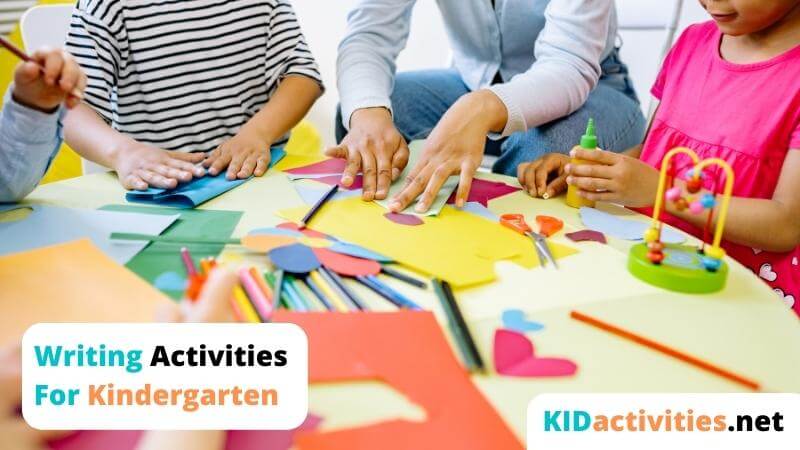
Writing is a fundamental skill that young children need to learn as early as possible. Practicing with writing activities helps to develop the foundation of literacy, critical thinking, problem-solving, and self-expression.
During a child’s formative years, the brain develops rapidly – and learning through writing takes place in a child’s brain during this crucial time.
Children must be given ample opportunity in kindergarten to practice writing and drawing. By the end of the school year, they should have a repertoire of their own to express themselves in many different ways, including writing letters and simple words.
Plenty of activities and exercises can be used to encourage children to develop their writing skills. The key is to create an atmosphere that promotes creative thinking while helping children to develop their writing abilities.
Writing Activities for Kindergarten level
Here are 30 fun writing activities that are sure to spark your little one’s imagination:
1. Write Your Name

Bring out a piece of paper and a pencil and write your child’s name on it. Ask your child to copy his or her name onto the same paper and compare results.
You can also make pre-made patterns of your child’s name and ask him or her to trace it. This is a great way to familiarize children with their names and the letters in it.
2. Letter Tracing

Letter tracing is a great activity for children because it encourages the development of hand-eye coordination, fine motor skills, and muscle control.
A tracing book is a great way to introduce letter tracing to kindergarteners. You can simply purchase one and let them choose a letter or letter set they would like to trace. Other types of tracing activities include:
- Traceable alphabet posters
- Letters in print
- Tracing on a whiteboard or chalkboard
- Mobile tracing applications
3. Doodling

Doodling is a fun way to help a child practice how to use pen pressure to create curves and form letters.
A child can practice making lines, shapes, and circles by tracing his or her fingers. This can be done on a piece of paper, a notebook page, or even an old napkin.
4. Write a Shopping List

Children will enjoy this activity because they get to write down their favorite things to buy. This gives them an opportunity to express themselves through writing, develop their vocabulary, organize their thoughts, and improve fine motor skills . Plus, it’s a fun way to teach kids how to read and spell.
5. Number Writing

This fun activity is great for helping children recognize patterns, count numbers, and learn how to write as well.
Number writing can help your child practice counting while also developing their numeracy skills and hand-eye coordination. You can ask your kids to start with small numbers and work their way up.
6. Playdough Writing

Playdough writing is a great way to make learning the alphabet fun and easy for young kids. It’s a simple but effective way for them to develop letter recognition while practicing their spelling skills.
Kids will surely love this project as playdough is one of the best mediums for kids to get creative and have fun.
7. Drawing Shapes

Generally speaking, kids start learning shapes even before they begin to write letters and words. Lines, curves, and patterns found in shapes are some of the most basic elements that you can teach kids about writing.
When they master drawing these elements, it becomes easier for them to grasp the concept of writing letters, numbers, and words.
8. Greeting Cards

Creating greeting cards gives children the opportunity to write, draw, paint, and color. It encourages them to write down messages, express their feelings, and send their wishes to their loved ones.
This activity also helps kids improve their letter formation and handwriting skills.
9. Chalkboard Writing

A chalkboard provides kids with a blank canvas to use as their writing surface. The best thing about chalkboards is that they’re reusable and easy to clean up, so it’s a fun way for kids to practice writing at school or home.
Plus, kids can use colored chalk to make colorful chalkboard art and get creative with drawing and writing.
10. Sand Writing

Using sand on a tray, children can create their own unique sand writings. They can practice spelling, write words, and even draw their favorite things in the sand.
If you live on a beach nearby, this is also a great activity for kids to do outside during summer vacation.
11. Spelling Bee

An old-fashioned spelling bee game where kids compete against each other to see who can spell the most words correctly is a great way to teach kids letter formation, vocabulary, spelling, and writing skills while having fun.
For kindergarteners, basic words consisting of three to four letters are the perfect starting point.
12. Copy the Words

For this exercise, you simply need to print out a set of words on paper and let the kids copy them exactly. They may not understand the meaning of all the words, but they’ll learn how to read and write the letters – which is the main goal of this activity.
Letting the kids practice writing letters over and over again will increase their confidence and improve their handwriting.
13. Scrapbooking

Young kids will surely enjoy making a scrapbook with photos, drawings, stickers, and colorful craft papers.
It is also a great writing exercise because they can write captions, descriptions, and short stories about the memories they include in their scrapbook. Plus, scrapbooking is a fun, interactive way for kids to express themselves and share their experiences and emotions.
14. Crossword Puzzle

The process of solving a crossword puzzle requires young children to figure out what goes where thus sharpening their memory and concentration.
For kindergarteners, crosswords are the perfect brain-teasing game. They will love the challenge of solving the puzzle while learning new words, enriching their vocabulary, and practicing their writing skills. Plus, there are plenty of categories for them to choose from including:
15. Freedom Wall

A freedom wall is a great space for kids to express themselves creatively. They can draw, paint, create collages, write everything they want, and decorate as they please without any restriction.
This creative writing exercise encourages independence, imagination, self-expression, and creativity in young children.
16. Write Letters to Santa

During the holiday season, parents and teachers alike often encourage kids to write letters to Santa. In fact, this is an age-old tradition that has remained popular over the years because it allows young children to express their wishes and put them on paper.
They are also able to tell Santa (basically their parents) what they want for Christmas while practicing their handwriting, spelling, and word recognition skills.
17. Alphabet Writing

In kindergarten, kids need to familiarize themselves with the letters of the alphabet, both in uppercase and lowercase forms.
Alphabet writing exercises are a great way for kids to reinforce basic skills such as phonics, reading, and writing. Alphabet writing can be fun if combined with pictures and illustrations of things that start with the letter they’re working on.
18. Make a Family Tree

Family trees are a fun way for kids to know more about their family history, as well as practice their spelling and writing skills. Kids can fill out the branches of the family tree with names, birthdays, and other information about their family members.
They may even want to draw a picture of each member or decorate it with family photos to make it more personal.
19. Write Letters for the President

During President’s Day , writing letters to the president is a great way for kids to practice their writing skills as well as express their ideas and feelings.
They can ask the president anything they want, including personal wishes and hopes for the future. Together, the kids can mail their letters to the White House and hope that they reach the president.
20. Dear Future Self

Kids often have a lot of thoughts and ideas about what they want to be when they grow up.
They can write to their future selves and give them advice on what they think will help them become the person they want to be. The letter can include ideas for college, career goals, hobbies, and more.
21. Name the Colors Challenge

This challenge might seem simple, but it’s actually quite challenging for many children. It’s important for kindergarteners to know all the colors and know how to spell them, so this is a great activity for them to practice those skills.
This activity can come in many different forms, including naming the animals, naming the shapes, and so much more.
22. My Favorite Things
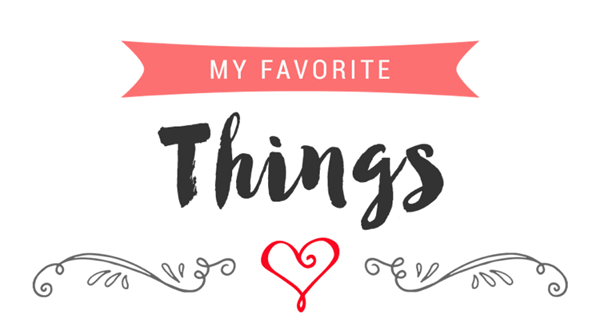
Kindergarteners can put together a list of things that they love or what makes them feel special. Not only does this activity help them get their thoughts out into words but it also gives them an opportunity to practice their writing skills.
Plus, this is a great way for kids to learn about what makes them happy while improving self-awareness and self-expression.
23. Writing Thank You Notes

Thank you notes are a simple way for kids to learn how to appreciate the things that they receive and the people around them. Not only does this help with their social development, but it also improves their spelling, grammar, and writing skills.
Plus, this activity is a great way to teach young kids about gratitude and learning how to express it, even in the simplest ways.
24. Write About Your Pet

One of the most common things children love to talk about is their pets, so why not turn this into a writing activity? Kindergarteners can practice their writing skills while at the same time sharing the things they enjoy most about their pets.
This activity will surely spark some lively conversations and help kids develop their creativity and writing skills.
25. A Letter to Mom or Dad

Writing Mother’s Day or Father’s Day letters is a wonderful activity for kids to express their thoughts and feelings towards their parents.
This writing exercise not only shows them how much they love and appreciate their parents, but also gives them a chance to improve their spelling, grammar, and language skills.
26. Dear God

Teaching young kids about gratitude will help them become more spiritually developed as they grow older. This simple letter-writing activity to God can be very motivating for kids and give them the opportunity to express what they feel grateful for.
Plus, it’s the perfect way to teach young children how to say thank you for all of God’s blessings.
27. Label It

For this activity, you simply need to prepare some everyday objects, scissors, a few sheets of paper, double-sided tape, and colored markers. The main objective is for kids to write the name of each item and stick it on the object itself.
This is a great writing activity and sensory learning experience for kindergarteners.
28. All About Me

There are plenty of printable templates online that you can use for an “ All About Me ” activity. These fun exercises not only help young kids practice their writing and spelling skills but also allows them to express themselves more freely.
This activity is perfect at the start of the school term when the kids are just starting to get to know each other.
29. Squishy Sensory Ziplock Bags

You’ll need the following items for this sensory/writing activity:
- 75 ml of flour
- 50 ml of water
- Food coloring
- Ziplock bag
- Scotch tape
To begin with, simply mix 75 ml of flour and 50 ml of water and add a few drops of food coloring (any color you want). Put the mixture inside the ziplock bag, seal it, and further secure it using scotch tape.
This simple activity will keep the kids busy for hours while developing their writing skills as well as their fine motor skills.
30. Lego Letters

Legos are versatile toys that kids can use to create all kinds of cool things. But, did you know that you can also use them as tools to practice reading and writing?
Kids can use legos to write letters or spell any name or word they want. Plus, kids love legos, so this is a great way to engage them in an educational activity that’s fun and entertaining.
Make Writing Activities For Kids Fun and Enjoyable
Writing is a critical skill that kids need to develop as early as possible. It’s important for kids to be taught how to write in order to become good readers as well.
Unfortunately, many kids find writing difficult, so it’s important to expose kids to fun and engaging activities that will help them learn to write more effectively.
We hope that these 30 writing activities for kids will inspire you to try some new ideas and have a lot of fun in the process.

- Number & Place Value
- Addition & Subtraction
- Measurement & Geometry
- Play-based Learning
- Formative Assessment
- Planning & Programming
- Art & Craft
- Digital Learning
- Sustainability
- Transition to School
- Systems & Routines
- Classroom Themes
- Learning Displays
- Decorative Displays
- Emotional Literacy
- Staff Activities
- Teaching Literacy Phonics Reading Writing Math Number & Place Value Addition & Subtraction Measurement & Geometry Teaching Practice Play-based Learning Formative Assessment Planning & Programming Other Categories Art & Craft Digital Learning Fine Motor Sustainability Transition to School
- Classroom Classroom Management Behaviour Systems & Routines Storage Decor & Displays Classroom Themes Learning Displays Decorative Displays DIY & Hacks DIY Hacks
- Well-being Social-emotional Learning Emotional Literacy Kindness Gratitude Teacher Well-being Staff Activities

Best Printable Writing Prompts & Worksheets for Kindergarten
Help your kindergarten students become phenomenal writers this year with these printable writing prompts for kindergarten! I have many fun writing prompts to help simplify your lesson planning while teaching those early writing skills.
Learning to read and write is such a crucial part of Kindergarten. These skills really cannot be understated. However, it's vital to teach them in developmentally appropriate and fun ways! It's even better when you can implement a system you can set up once and use repeatedly...
In this post, I'll share with you several great writing activities you can refer to again and again. I'll also offer helpful tools to support those early writing lessons.
Before you dive in, make sure you grab this writing station ! This is one of the best ways to help your students learn how to write independently.

The writing center includes a variety of simple sentences, a picture word bank for people, animals, places, food, and more, common spellings for days and numbers, and so much more.

It will save you so much time and help your young writers learn how to find (and spell) the right words themselves!

You can also share resources at this station, like writing pages, highlighters, and other writing tools you need for writing practice. It will simplify your day and help your kids become more independent at the same time. Win-win!
Benefits of Writing Prompts & Daily Practice
One of the most important things you can do at the beginning of the school year is start a daily writing routine! Whether you post fun journal prompts or want your students to do something else, build it into your day as a must-do, never-skip routine.
- Develop fine motor skills: Your students' hands are changing so much right now! They need ample opportunities to develop their fine motor skills to develop the hand strength and dominance they need in the future.
- Get into a routine : When you're used to doing something every day, those neural pathways fire automatically. It will become easier and easier over time if your students write every single day.
- Build emotional intelligence : Daily journaling and sharing allows students to learn about each other. Often, kindergarten is the first time your students meet people different from them! By sharing their writing, they can show compassion when their friends are disappointed or sad, celebrate when they're happy, and experience a full range of other feelings.
- Develop writing stamina: Although we start with the shortest, most predictable sentences at the beginning, the writing assignments can get longer as the year progresses. This is incredibly helpful when they move on to first grade!
- Build community: When your kids feel safe enough to share their thoughts and feelings around these various topics, they trust each other more deeply and know they belong. This is easily the best part!
If you're new to teaching writing, get a free copy of How to Teach Beginning Writing!

It's a great starting point that goes deep into the seven levels of sentence writing and the writing process.

It's the perfect way to understand what to look for when you see your students' first sentences and help them improve their writing step-by-step.

Fun & Creative Printable Writing Prompts for Kindergarten
Whether you need some journal topics to get the creative juices flowing or you want projects that practice reading and writing at the same time, you'll find plenty of helpful options and creative prompts here!
Free Kindergarten Writing Prompts for Journal Writing
I love incorporating a daily journaling routine! Since it becomes a habit, your kids will know to expect it every day. If you follow a specific format, they can even anticipate what they'll write about before they get to school!
These 101 kindergarten journal prompts are all focused on your little writer! They'll get to share exciting things about themselves and reveal their personalities by answering one question per day. Even reluctant writers like to share about themselves, so they love answering questions about their best friend, their favourite food, and so much more.

You can scroll through the list of free printable writing prompts or download my free Kindergarten Writing Prompt Set Slides . These daily writing prompts are completely free and customisable, so you can adjust the spelling to any dialect!
Tip : Have your students decorate their journal covers to make them feel even more special and personalised!
Weekend Recount Writing
This is one of my favourite routines! It's easy to use, customisable, and you can scaffold it to any skill level with a few simple sentence starters.

Weekend recounting is pretty straightforward. You're simply asking kids to share what they did over the weekend. However, it is so much better than just that!
First, you'll need these weekend recount slides . Once you open them up, you'll see how easily this becomes part of your routine.

There are slides with sentence stems, frequently used words, and prompts. You can also use symbols to scaffold the activity to different skill levels.
There are even resources about "magic writing," which I use for kids who are still learning to write and aren't ready to write full sentences independently.
Beginning Sentences Worksheets
When you first teach young kids to read, the words must be incredibly easy to read. You usually start with very simple, 1-2 letter words that can be decoded with almost no effort.
These beginning sentences worksheets are very simple to decode with phrases like, "I am a cat" or "Here is a bag."
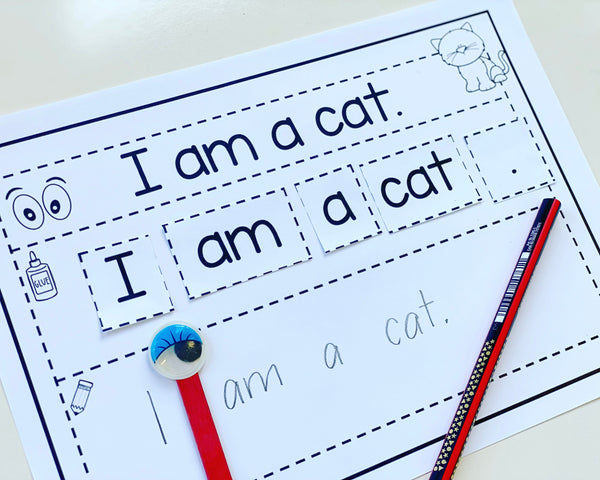
The goal is for your students to first decode these simple sentences, cut them out, paste them in order, and finally write them again in their own writing.

This process works is so powerful for a few reasons.
- Decoding: Students get a chance to practice those early decoding skills, connecting the written words to oral sounds and phrases.
- Cutting: This allows them to strengthen their fine motor skills and hand muscles, which is extremely important for this age group.
- Pasting: To paste, they must attend to the individual order of the words. This means they will need to decode the sentence again, observe the punctuation and capitalisation, and ensure the words are in order.
- Writing: When they write, they practice letter formation, capitalisation, finger spacing, spelling, and more, all while developing their fine motor skills and eye-hand coordination.
These seem like simple activities, but they really support several different important kindergarten skills at once!
Plus, there are also sentence-building mats so they can craft their own sentences, and I've also created similar versions that jumble the words together for an extra challenge. These are a great way to work on those foundational reading and writing skills early on!
Decodable Sentences
These simple activities are an excellent way to help your students learn to read and write! They're similar to the activities above but in this situation, they must match the complete sentence with the image.

This means they have a purpose for reading. They have to decode the words to understand which scene matches the sentence, which can get challenging when they have other sentences to decode at the same time!
After matching the image and the sentence together, they write the sentence by hand. Like the last activity, this is a great way to get them to engage with how words are spelled, capitalised, arranged, and punctuated in sentences while also building their writing stamina.
Get your free CVC sentence mats here! If you like them, you can view the full collection here .
Decodable Sentence Mats
Another variation of decodable sentences, this activity requires students to decode the sentence, make the decodable word, then write the decodable sentence.

These are available for CVC words and CVCC CCVC words.
Level-up with The Hive
This list of printable writing prompts for Kindergarten is just the start! There are even more writing prompts, activities, and even instructional slides available in the shop to help you teach descriptive writing, informational writing, and more.
Plus, if you're really ready to transform your teaching, join The Hive to access these activities and so much more, including lesson videos by Mrs Learning Bee.
Start your free 7 day trial to The Hive here!
More Resources You'll Love
Free Printable Blank Handwriting Worksheets for Kindergarten
Kindergarten Name Writing Activities
Narrative Writing for Kindergarten and First Grade
Kindergarten Sentence Writing

- Kindergarten Writing Worksheets
Learning to Write the Alphabet
Dive into our comprehensive collection of engaging and interactive writing worksheets for kindergarten learners. These thoughtfully designed resources cover the entire alphabet, including lowercase and uppercase cursive tracing as well as print letters. With ample space for practice within designated lines, these worksheets promote consistency in letter size, spacing, and slant, enhancing handwriting skills and fine motor development. Ideal for students, educators, homeschoolers, and anyone interested in refining their cursive and print writing skills.
Please share our free worksheets. Thank you!
Free Writing Worksheets
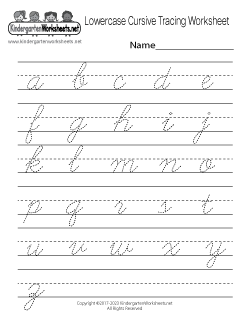
Flexible Options: Download, Print, or Use Our Free Writing Worksheets Online
- Printable Worksheets - Effortlessly Print from Your Web Browser
- PDF Worksheets - Easily Download and Access Files Anytime
- Interactive Digital Worksheets - Enjoy an Engaging Online Experience
Our writing worksheets are designed to be convenient for educators and families. We offer three options to access our free worksheets. You can download the PDF file, print it from your browser, or use the online version of our kindergarten worksheets. These options allow you to save, print, or complete our worksheets directly on our website. By providing these flexible options, we aim to make learning writing accessible, convenient, and engaging for teachers, parents, and kids.
Free Kindergarten Worksheets
- Lowercase Cursive Tracing Worksheet
- Uppercase Cursive Tracing Worksheet
- Lowercase Alphabet Letters Tracing Worksheet
- Uppercase Alphabet Letters Tracing Worksheet
- Blank Writing Practice Worksheet
- Name Writing Practice Worksheets
- Letter A Writing Practice Worksheet
- Letter B Writing Practice Worksheet
- Letter C Writing Practice Worksheet
- Letter D Writing Practice Worksheet
- Letter E Writing Practice Worksheet
- Letter F Writing Practice Worksheet
- Letter G Writing Practice Worksheet
- Letter H Writing Practice Worksheet
- Letter I Writing Practice Worksheet
- Letter J Writing Practice Worksheet
- Letter K Writing Practice Worksheet
- Letter L Writing Practice Worksheet
- Letter M Writing Practice Worksheet
- Letter N Writing Practice Worksheet
- Letter O Writing Practice Worksheet
- Letter P Writing Practice Worksheet
- Letter Q Writing Practice Worksheet
- Letter R Writing Practice Worksheet
- Letter S Writing Practice Worksheet
- Letter T Writing Practice Worksheet
- Letter U Writing Practice Worksheet
- Letter V Writing Practice Worksheet
- Letter W Writing Practice Worksheet
- Letter X Writing Practice Worksheet
- Letter Y Writing Practice Worksheet
- Letter Z Writing Practice Worksheet
- Get More Worksheets
- Kindergarten English Worksheets
- Kindergarten Alphabet Worksheets
- Kindergarten Reading Worksheets
- Kindergarten Phonics Worksheets
- Kindergarten Vocabulary Worksheets
- Kindergarten Sight Words Worksheets
- Kindergarten Opposite Worksheets
- Kindergarten Grammar Worksheets
- Kindergarten Spelling Worksheets
- Kindergarten Rhyming Words Worksheets
Main Categories of Kindergarten Worksheets
- Kindergarten Math Worksheets
- Learning About Our World
- Kindergarten Holiday Worksheets
- Kindergarten Seasons Worksheets
Join Us On Facebook
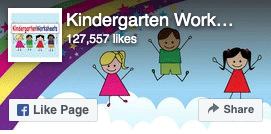
- Printables Library
- Log Into ETTC
- Log Into Premium
- Classroom Management
- Grammar & Writing
- Science/STEM
- Social Studies
27 Fun Writing Projects for Kindergarten
- Kristin Halverson
- January 20, 2021
- No Comments
While so often we feel the pressure to push the standards, push the benchmarks, push the curriculum down to a point where we suck all the fun out of learning, we also know in our hearts what five and six-year-olds need. We know what good teaching and learning are. To that end, we’ve come up with 27 Fun Writing Projects for Kindergarten, because sometimes, you just need to shut your door and do what you know is best (and if you’re lucky – you can leave that door wide open and share it with the world).

Writing with kindergarteners and first graders is in a realm of its own – and this year that fact is even more painfully apparent. How many times have you sat through a workshop or PD focused on writing, only to have most of it not apply to you? Or dealing with people who think all of elementary can share basically the same model, rubric, or report card lines? Yeesh. We’ve all been there.
If you’re lucky, you’ve never been in that position. If you’re lucky, you’ve never felt like what you’re being asked (ahem, mandated) to do is inappropriate, asking too much of your youngest learners. Thankfully, we are good at letting people know that we are in a different world and that along with that world comes the joy of helping students recognize themselves at their earliest stages of schooling as authors. I will never forget the beginning of the year author celebrations I have held – the beaming smiles, the kids realizing that they are, in fact, authors. It is magical. ?
1. Nature Journaling –

These can be as simple or elaborate as you want to get – a stapled pack of papers or a fancy notebook. Regardless of what medium you use, kids LOVE to be outside. Why not incorporate nature into writing? Journal the changing seasons, observe your schoolyard and write five senses poetry, or simply partake in an, “I notice, I wonder, It reminds me of,” activity. Don’t think you have nature in your schoolyard? You’d be surprised at what your students can find.
Project 2. Letters to Family/Pen Pals –

Letter writing is a great, purposeful activity that kids love because they get to write all about themselves while practicing writing skills. I’ve done pen pals as well as letters to a special loved one Friday of each week to which that special adult then replies (I usually save these and bind them at the end of the year as a keepsake). Don’t have time to do a weekly letter? Penpals are another wonderful option. Join a Facebook teacher group ( Fearless First Grade Teachers or another one!) to make a match with a teacher in another part of the world. Bonus for this one? Students learn about what it is like to be a kid in another part of the world and with how tech-savvy we’re all becoming with distance learning, why not set up a few Zoom events between pen pals over the course of the year?
3. Lists –
Lists are fun? I can hear you now… “Are you crazy?!?” I just may be, but I think lists can be a simple, engaging way for kids to write. It is much less intimidating to write a word or two on a list than an entire piece. The lists kids can make are endless – my students were particularly fond of writing lists of kids in our class and their favorites in any category. One of the best things about list writing? It easily transfers to any number of situations and is incredibly purposeful – adults make lists all the time so this one is an easy one to have family involvement with as well. Groceries, anyone?
4. Persuasive Letters –
Kids are masters at persuasion and see a great deal of what they deem unfair in the world (sometimes rightfully so!). Help give them an outlet for their arguments by teaching them that adults will listen to them much better if they have a well thought out argument and a reason for the proposed change. My favorite thus far has to be the student that argued for an 80’s dress-up day each week. #scrunchiesandfluorescents
Project 5. Cards –

Partner up with a local nursing/assisted living home, especially now when they are on lock-down, to share the lightheartedness of children. Kids can make cards for holidays or just because. Only once or throughout the year to a specific adult. What a great way to spread sunshine and kindness. Even more so if you are able to make a year-long connection (pen pal-Esque) for people who may be feeling very lonely and isolated. I mean, have you seen those videos of preschools in nursing homes? Have you read the research? The benefits abound for both groups of people!
6. Sharing/Show and Tell –
Kids love to talk about themselves. We all know this. It is the topic they know the most about, too. Capitalize on this and use it for your sharing/show and tell time. Students are welcome to share in the manner you normally use but simply have them write their thoughts down first. (This could be done at centers or at home).
7. All About Me –

Many kindergarten classrooms have an all about me or star student routine. Simply extend this to have students make a mini-book all about themselves. After their sharing day/week, add this book to your classroom library for kids to read (you may want to have the student dictate the piece to you and you add that to the page as well). Don’t want to get that in-depth? Make it a poster and hang it up in the room or by their cubby for future reference/reading.
Project 8. Partner Compare and Contrast –
Compare and Contrast with a Partner, helps kids recognize what is the same, and different about them is so beneficial. I like taking large construction paper and making a modified T-chart or Venn diagram. After modeling, pair up kids who may seem very different from each other and have them talk and write together how they’re the same and how they’re different. This one does double duty and has the huge added bonus of community building!
9. Classroom Cookbook –

Take your pick on the theme. This is a hilarious writing project that can be created as a gift to families/loved ones. (Who are sure to love it as well). I’ve done this one around Thanksgiving, but you could really do it anytime. Have kids pick their favorite foods and write their recipes for what is included and how to cook them. A great activity to participate in after reading Stone Soup or another book about cooking.
10. Pattern Books –
This is a fun reading extension for kids with their favorite picture books. It can be done as a whole group, interactive writing activity (with something like Seven Fat Cats by Joy Cowley ) or you could have each student do their own page and bind it together for a classroom book (with something like Snowmen at Night by Caralyn Buehner). These books are always a big hit in the classroom library and are usually the first selected during choice reading time.
Project 11. Labeling the Classroom (or House!) –
Challenge kids to label things at home and have family take photos to share (send home with index cards) – Labeling is another simple, low-level entry into writing for some of those reluctant writers. I love to start this off by having the students use post-its to label me. They giggle non-stop at my post-it laden body – but are learning at the same time (aren’t those the best times?). I’ve only been interrupted by other adults in the building a few times and they’re sure to giggle and whip out their cameras as well – so be ready for some embarrassing photos of you to circulate around the school!
But seriously, labeling is a great place to practice writing – saying words slowly, hearing and recording sounds. I have done this in interactive writing as well. I would recommend putting together some scrap paper cut up into index card-sized pieces (think about all that paper that is copied wrong or only one-sided – virtual gold mine right there!) as a take-home kit or for use during centers so students can continue their labeling fun. Make it a competition and have adults at home take photos of their labels. See who can get the most labeling done in a given amount of time! Kids love a good competition (and benefit from learning how to lose gracefully once in a while).
12. DIY Alphabet Chart –

Another low-entry but fun activity for kids….and when they make their own, they learn more and are more likely to use it in the future as a reference tool! You could do one together as a group during interactive writing and then have it as a center activity to work on at the beginning of the year. Once they have their personal completed chart, I like to laminate them and have them handy as a reference tool in their toolbox.
13. Gratitude Journaling –

Focusing on what you’re thankful for makes you happier – and don’t we all want our students to be happier? Help create a culture of gratitude that will span the years with easy to use sentence stems and fill in the blank. I like to make these easier at the beginning of the year and then as time goes on, increase the amount they need to write. Sight words like I and am can be traceable to start, then later on, fill in the blank. They could be a weekly or a monthly activity and make another great keepsake.
Project 14. Friendship Books –
This one gets my heart every time. I’ve taught in a few districts and at two of them, at some point, a community-building activity took place where staff gave compliments to other staff on a piece of circulating paper with their name. There’s some pre-teaching that needs to be done here, about complimenting people for their inside characteristics, not their looks, their clothes, etc…but once you’ve had some practice with that, oh… these are golden.
I recommend starting with a cardstock sheet that has the student’s picture on it and leaving scrap paper out by that. That way, you minimize the risk of ruining the entire sheet if one kid makes a big mistake or decides to write REALLY BIG (we all know that kid!). Later on, scan the scraps in and arrange them on one sheet to glue onto the cardstock (or print it all as one). Community building and seeing the good in others at its best!
15. Writing On/In Unique Materials –

Not looking for a big project, but want kids to have some fun with a quick, engaging activity practicing a phonics skill or sight words? Shaving cream, colored sand, oobleck, colorful glittery hair gel in a bag, scratch paper, glitter pens, sparkly markers, hidden message (white crayon and marker over the top later on), rainbow writing (using all the colors of the rainbow), play-doh, stamping, or chalk on the sidewalk/playground are all great ways to accomplish this! Sensory writing hits the mark with memory. Have an easel in your classroom? Cabinets? Tables? Tape some paper up (or under in the case of the table) and have the kids do writing on these surfaces to encourage fine motor/hand muscle development (c’mon, we all know they need more of that these days)!
16. Word Scavenger Hunt ?
An easy center activity that kids love – like writing the room, but with zero prep on your part! Kids search the classroom, hallways, library, etc. (with an aide if you’re lucky enough to have one) for words and write them on clip boarded recording sheets. Get those kids moving! And who knew clipboards could make things so much more fun?!
Project 17. Little Books –
These are super simple preparation and can be used for a writer’s workshop or during centers. Just fold and staple some copy paper with lines for a title, author, and text on each page. Feel your kids out for how many pages they’re ready for at that point (start small) and model so they know what to do with them – then set them loose! These are great to share with the class when they’re done and really solidify the feeling of being an author.
18. Change the World Thought Bubbles –

One of my favorite projects I have done with students is during January. We spend most of our school year with an underlying theme of how we can make the world a better place, so this isn’t anything new, but I link it to MLK, Jr. By January, the kids have been exposed to a number of ways they can make a difference in the world and usually have no problem coming up with ways they want to make the world better for everyone, but I still recommend brainstorming some ideas during interactive writing first.
Then, I photograph the kids in front of a simple background with their best ‘thinking’ pose and print them in black and white. I trim them, but the kids glue their photo and a thought bubble with how they want to change the world onto a large sheet of black construction paper and finally sign it with their name and age in white colored pencil (I learned the hard way – crayon melts when laminating).
19. Shadow Tracing –
This is a fabulous integration of science and writing… Check out the shadow tracing activity from PBS Learning Media or use plastic animals for kids to trace. Take photographs of each stage and help kids assemble them into booklets (hello, sequencing!). Students can write about what happened each time they traced the shadow and why they think their investigation had these results.
Project 20. Mystery Object Observations –

This is a great way to get students to practice using sensory words in their writing. Create a simple shoe-box with a hole in the side or a paper bag that has a mystery object inside. This could easily be a weekly center activity with some pre-teaching and modeling/practice during interactive writing (make sure you impress upon the kids that it isn’t about getting the ‘right’ answer to discourage peeking). Having a three-ring binder clip with sensory words on it as a reference can be a helpful addition.
21. Silly Sentences –
This engaging activity can be done with pictures or with sentence pieces. I used this as a center activity with pictures. I gathered a collection of strange photos (think gummy bears coming out of the bathroom faucet or a dog holding an ice cream cone), laminated them, and put one out a week. The students then had to come up with one asking and one telling sentence each week. Once the sentence was good to go in pencil, they could choose a glittery pen to trace over it.
These photos could also be a story starter activity. Alternatively, I’ve done something similar with sentence pieces that the kids put together in a silly way (Think, “The dog read the weather report to the flock of seagulls.” “The teacher sang a book report for the backyard.”). Each part of the sentence is on a different color background, and the kids know they have to put them in rainbow order, not skipping any colors. Then, they write them down on their recording sheet and illustrate. These crack me up when I’m checking them and the sound of little giggles can be heard daily as they’re working…and is there anything better than little giggles?
22. Weather Report –
As a part of your morning meeting or classroom jobs, you could have a weather reporter. During soft landing time (as the kids trickle in and take care of lunch count, etc. in the morning), I would have the assigned student write a weather report for the day that they shared during the morning meeting. This can be done at a variety of levels, from circling images to writing the entire piece – depending on your students and the time of the year. Even better if you have an old blazer and fake glasses for the kids to wear while giving the weather report!
Project 23. Classroom News –

An extension of the weather report can be a weekly classroom news reporter that gives their report on Friday during the morning meeting. Give them some support recording events of the week with a graphic organizer. – A sentence a day with the highlight to share is a great goal. To make it even more fun, give them some props like a desk to sit behind and a microphone. – Record it to share with families if you’re able! As with any ‘presentation’ activity, I always give my students the option to pass as some students just aren’t comfortable speaking in front of the class. Through community building, we are usually able to get everyone participating in the middle of the year, but it is always an option, never required.
24. Character Education Cards –

Interactive writing is such a great platform for kindergarteners to learn about writing. Why not use it to incorporate some of those things kids need to know that we never seem to have time in the day for anymore? Create a classroom set of character education cards, listing the trait, like sharing, with a definition and an example. Then, challenge the students to practice it for a given amount of time. Point it out whenever you or others observe it to encourage internalization of that trait.
25. Invent an Insect –
Do you teach insects in science? Did someone bring in a chrysalis or caterpillar they found? This is perfect! Give kids a jar template and have them draw a stick/leaves in the jar. Then using fingertip prints (with ink pads or a marker) have them create different insects and label them. After labeling, they can write a sentence or two about their insects underneath the jar.
Project 26. The Eyes Are Watching –
Let kids express their creativity with this fun activity using simply a set of googly eyes! Give kids a set of googly eyes, (There are so many varieties to pick from!) and have them glue them on their paper. Starting with those eyes as the base, they draw a character (animal, human, or other) around them and write about their character. You can encourage them to base their character on different learning themes or units of study or let it be completely open-ended. This can be extended for a number of days by adding new characters to the story each day with a new set of eyes.
27. Bandaid Story –
Another low material project where kids get to write about themselves and their lives. It’s a big hit, especially as an option during centers. The students draw themselves, sticking a real band-aid on their picture in a place they got hurt at some point in their life. Then, they tell the story of how they were hurt.

No matter what you do, we know that kids thrive when you make writing purposeful. (Why write if it is just to make your teacher happy?) Focus on what they can do and celebrate the small victories. (And make sure families understand that developmental writing is exactly what the kids should be doing right now!). Celebrate, celebrate, and celebrate some more! – By building in a sharing routine for their work, their confidence will only increase. They’ll want to write more and when they write more, they get better and enjoy it more.
If you have any Fun Writing Projects for Kindergarten that you enjoy doing in your classroom, please share them in the comments below. ??
Written by: Kristin Halverson
At Education to the Core , we exist to help our teachers build a stronger classroom as they connect with our community to find trusted, state-of-the-art resources designed by teachers for teachers. We aspire to be the world’s leading & most trusted community for educational resources for teachers. We improve the lives of every teacher and learner with the most comprehensive, reliable, and inclusive educational resources.
If you enjoyed what we have to offer at ETTC, be sure to join our email list , so you won’t miss a beat.
Welcome! I’m Emily, Founder of Education to the Core. We are all about helping K-2 teachers by providing unlimited access to affordable printables for every subject area.

Insert/edit link
Enter the destination URL
Or link to existing content
Kindergarten Writing Worksheets
- Kindergarten
- All subjects
98 Kindergarten Writing Worksheets
A practice sentence
The quick brown fox jumps over the lazy dog. Your child gets practice writing this sentence and coloring in the picture.
A series of events
What did you do today? In this language arts worksheet, your child gets practice looking up words in a dictionary, writing words in alphabetical order, and drawing.
All about me!
My name is… In this writing worksheet, your kids get practice writing their name, age, and address and drawing a self-portrait and a picture of where they live.
This early writing worksheet gives your child practice writing the entire alphabet in lowercase letters.
It's the opposite! In this language arts worksheet, your child gets practice identifying antonyms such as on/off, light/dark, and night/day.
Classroom words
Can you spot the teacher? In this language arts worksheet, your child will find 10 items in the picture of a classroom and write the word next to each one.
In this coloring reading worksheet, your child gets practice reading color words, matching each color word to the correct image, and, of course, coloring!
Connect the animal to its food
In this early writing worksheet, your child will draw straight lines across the page to connect each animal to its dinner.
Connect the animal to its home
In this early writing worksheet, your child will draw straight lines across the page to connect each animal to the right home.
Connect the rhymes: vowel sound a
In this coloring worksheet, your child will identify the pictures of rhyming words that have the same vowel sounds.
- Kindergarden
Yes! Sign me up for updates relevant to my child's grade.
Please enter a valid email address
Thank you for signing up!
Server Issue: Please try again later. Sorry for the inconvenience

Easily Enhance Student’s Skills with 5 Fun Kindergarten Writing Activities
Are you a kindergarten teacher searching for effective and enjoyable ways to help your students develop their writing skills and fine motor abilities? Look no further! I’ve always struggled with fitting writing activities into our already-packed schedule. I know it is super important, and my students must do at least a little writing each day. But I was just on the struggle bus when it came to writing. That’s when I decided to add in some “Build a” writing crafts. And boy, did it become one of the most valuable resources in your classroom. This activity, plus many other fun kindergarten writing activities, really got my gears going, and I finally got a great writing program into place!
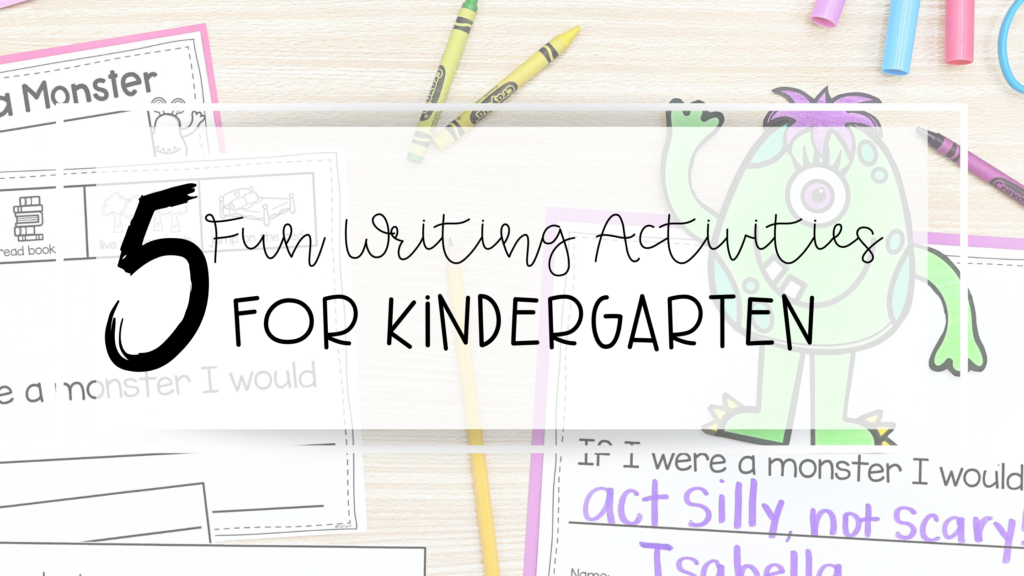
The Importance of Kindergarten Writing Activities
As I said above, I knew my students needed to be writing, but I just couldn’t get myself to the right mindset to start it. Writing is challenging for adults, and trying to teach kindergarteners to write may seem impossible to some. However, the first step is understanding why kindergarten writing activities are vital for your students’ growth. Early childhood is an important period for establishing a strong foundation in writing skills. Here are some reasons why:
Fine Motor Skills Development
Engaging in kindergarten writing activities aids in fine motor skill development. These skills are essential for tasks like holding a pencil, forming letters, and enhancing hand-eye coordination.
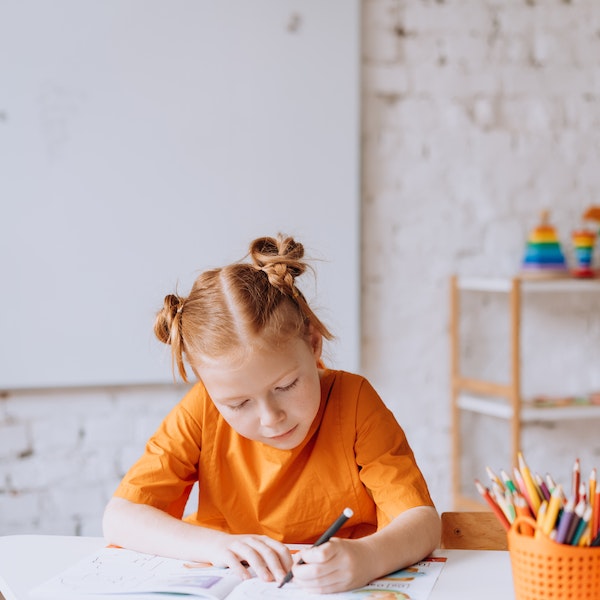
Building Writing Skills
Such activities encourage students to practice writing, helping them become more comfortable with letters, words, and eventually sentences, ultimately nurturing their writing skills.
Fostering Creativity and Expression
Fun writing activities promote creative thinking and self-expression. They empower children to share their ideas and stories through words, which is crucial for their overall development.
Fun Kindergarten Writing Activities
We feel a lot of pressure as Kindergarten teachers because we are the start of it all. This is the time when young learners discover reading and writing. They can either fall in love or run in the other direction. As K teachers, we have a unique opportunity to make writing fun and exciting. I struggled with this for many years, but now, I’ve got it down and include many fun writing activities throughout the year for my students. I’ve included a couple of fun kindergarten writing activities I try to incorporate into my plans yearly.
Story Stones Adventures
Story stones are small, decorated pebbles or wooden pieces with pictures or symbols. Scatter a set of these stones on a table, and let each child pick a stone to start their story. They’ll take turns selecting stones and incorporating the images into their imaginative stories. This activity enhances creativity, vocabulary, and storytelling skills. Having a writing folder office available while students are writing their small stories is really helpful.
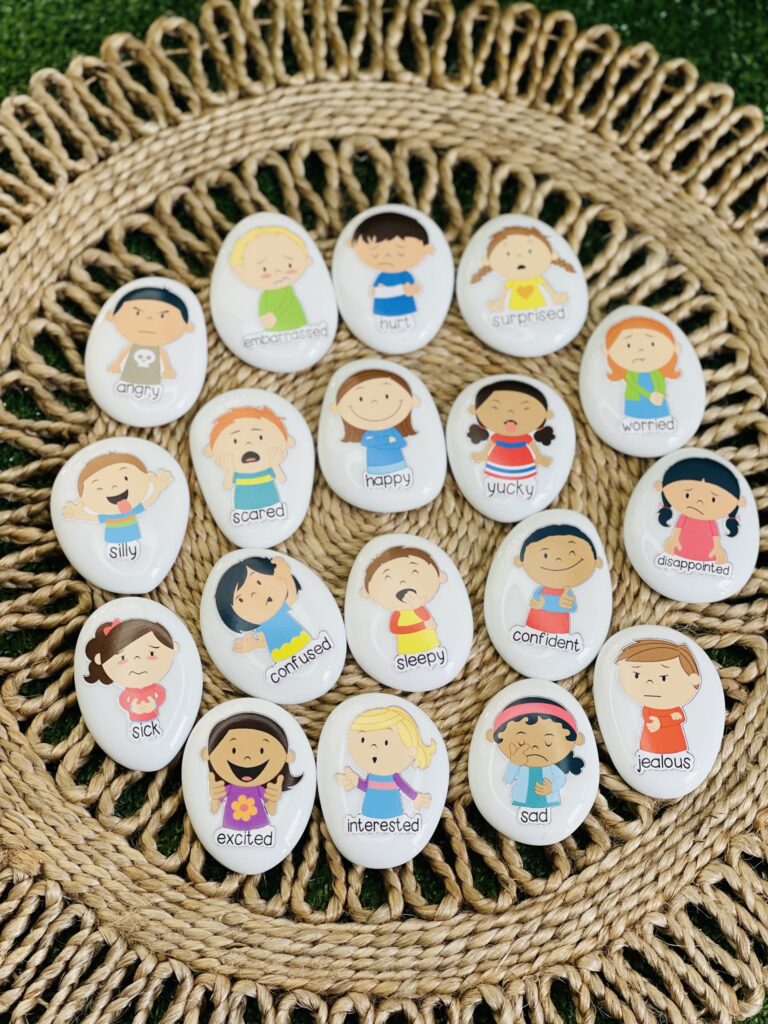
You can purchase a ton of different story stones on Etsy or even make your own. Stay Classy Classrooms has some of the cutest story stones! You can take a look here .
My Magical Writing Wand
This is a great first writing activity for the year! Turn writing into a magical adventure! Provide each kindergartener with a “magical” wand (a colored pencil or marker). Instruct them to choose an imaginary setting or character from a story they have read or that you’ve read in class. With their “magical” wand, they can write words or draw pictures related to that story. This activity encourages writing, sparks creativity, and helps children connect with the stories they’ve read.

Picture Prompts
Show kindergarteners an interesting picture or illustration, which can be related to a story, a scene, or an everyday object. Encourage them to describe what they see in the picture by writing a short sentence or a few words. Picture prompts stimulate imagination, improve vocabulary, and inspire creative writing.
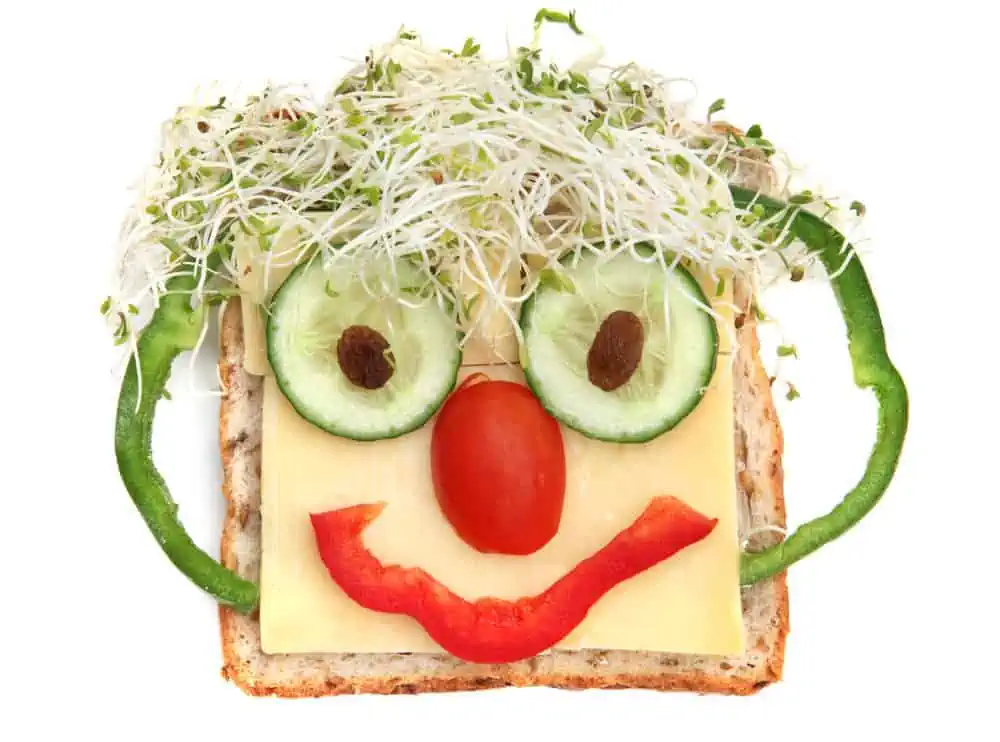
Journal Buddies has a ton of different photo prompts you can print for free from their website!
Writing Journals
A kindergarten journal is a spot for students to write about whatever they want. Sometimes, teachers like to include writing prompts on the page or different activities to help students along with the writing process. Other times, teachers leave the pages blank and let students’ imaginations take the lead.
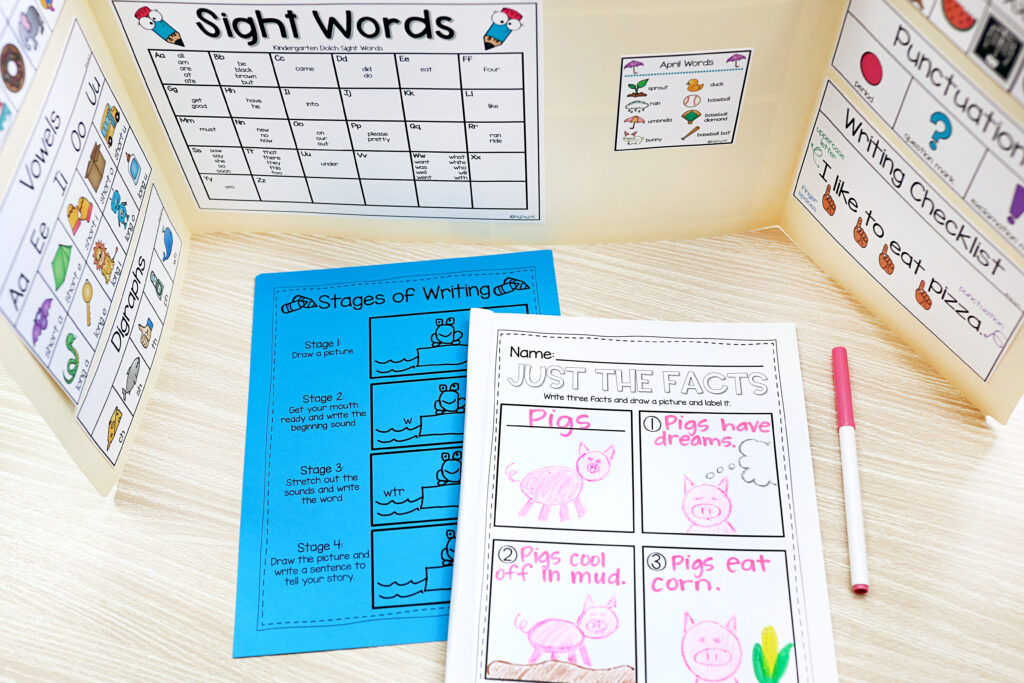
“Build a ” Monthly Writing Crafts
Students engage in creative writing activity crafts. Each month, they receive a new “build a ” writing worksheet with a specific theme. Students follow instructions to cut, glue, and assemble various elements, incorporating their writing into the craft. These activities encourage imaginative storytelling and provide opportunities for students to practice writing skills while enjoying hands-on, thematic projects.
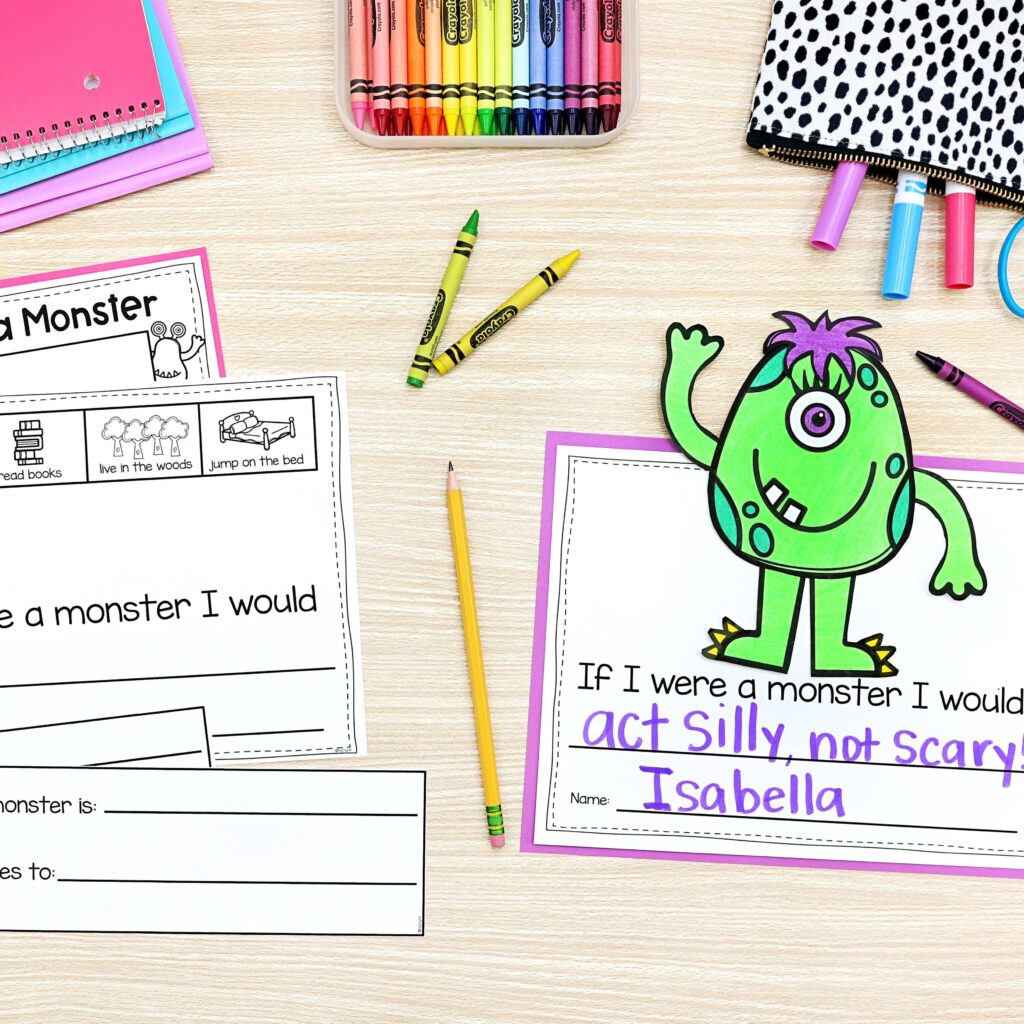
When to Use “Build a” Writing Crafts
You can use these “Build a ” writing crafts in so many ways and times. I have found numerous places and times to use them. To make the most of these valuable kindergarten writing activities, consider these fun times:
Writing Activity Extensions
These writing pieces serve as excellent extensions to your regular writing activities. After a lesson on a specific topic, use a “Build a _______” writing activity to reinforce what your students have learned.
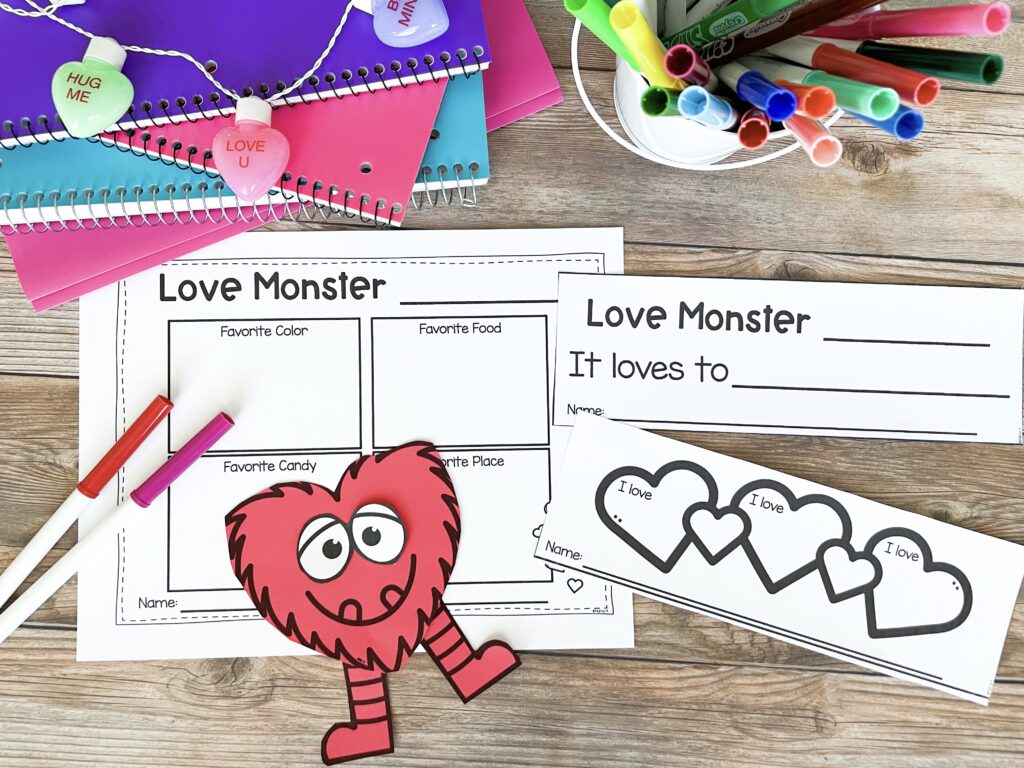
Monthly Celebrations
Embrace the spirit of each month by introducing a themed “Build a _______” writing activity. Whether it’s Halloween in October or Thanksgiving in November, these resources can add excitement to your classroom.
Reward and Motivation
Use these activities as rewards for good behavior or exceptional effort. Children are motivated by engaging and enjoyable activities, making these packets a valuable incentive.
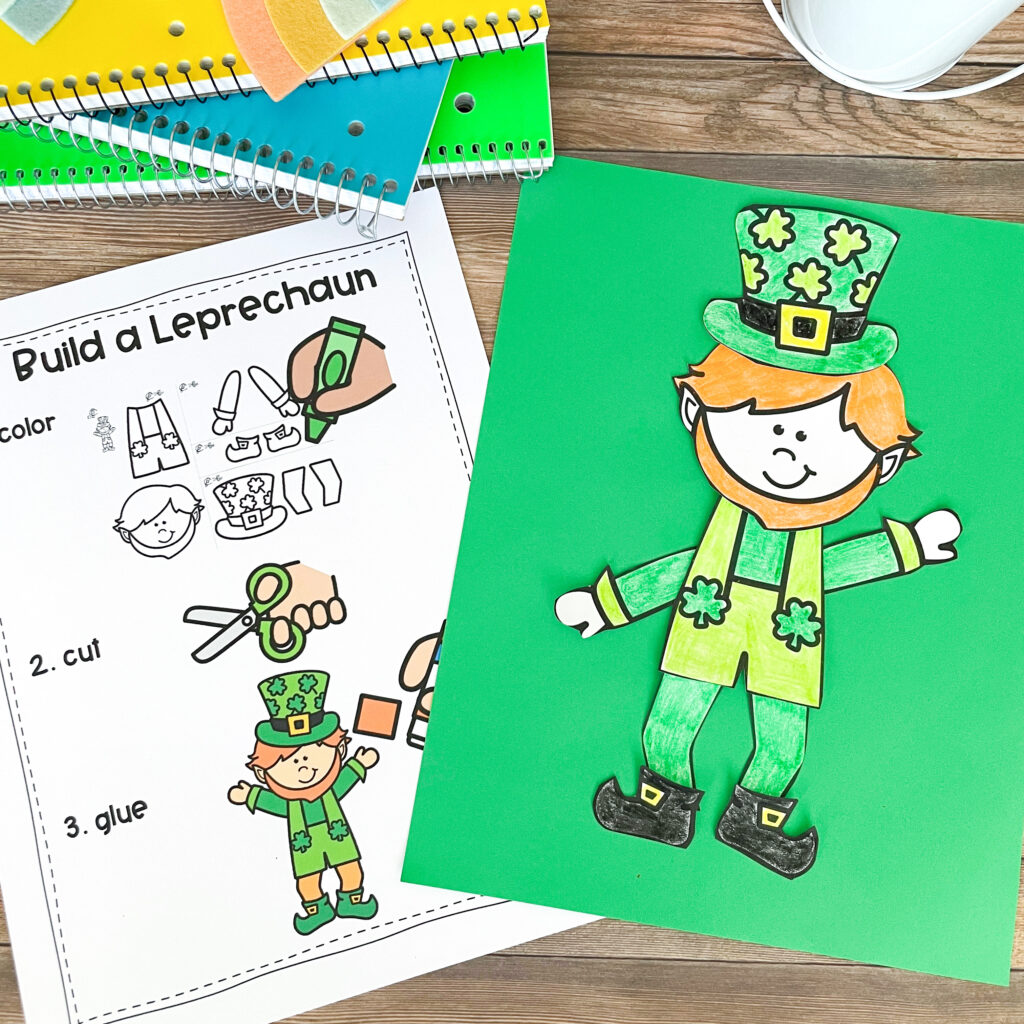
Parent Engagement
Encourage parents to participate in their child’s learning journey by sending home the completed writing craft monthly. This can foster family involvement in the learning process and create a stronger bond between home and school.
The significance of incorporating enjoyable kindergarten writing activities cannot go unnoticed! These activities foster a love for writing and lay a strong foundation for essential literacy and reading skills. By bringing fun into the learning process, we create an environment where young learners are eager to explore their creativity, express themselves, and develop the lifelong skills they need for successful communication and storytelling.
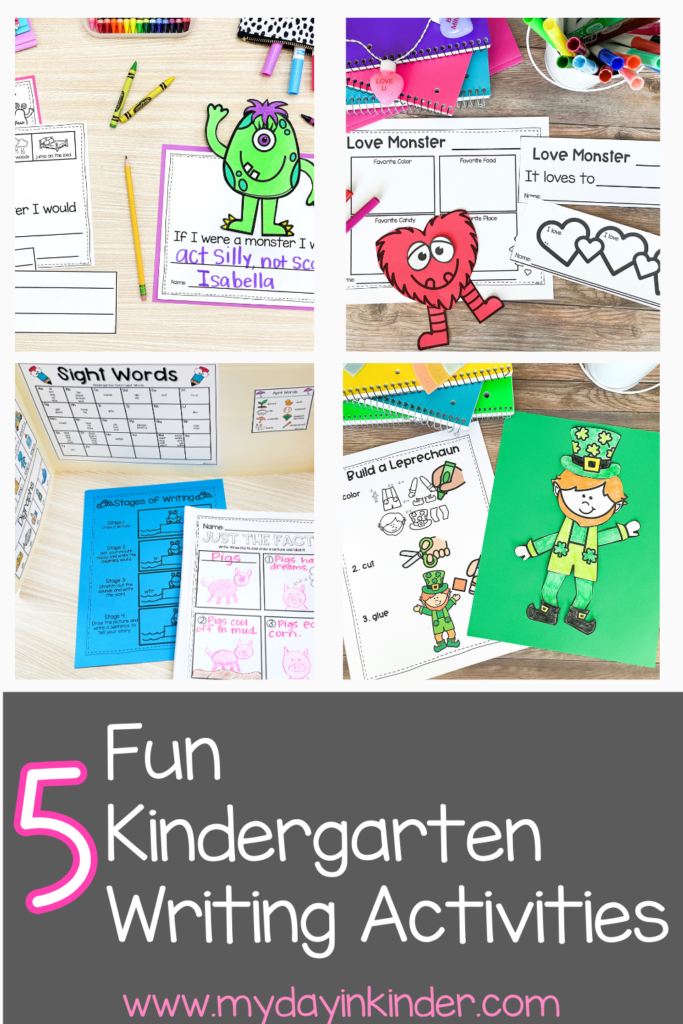
- Grades 6-12
- School Leaders
FREE Poetry Worksheet Bundle! Perfect for National Poetry Month.
10 Tricks for Teaching Writing in Kindergarten
Lessons I’ve learned from years of teaching five year olds.
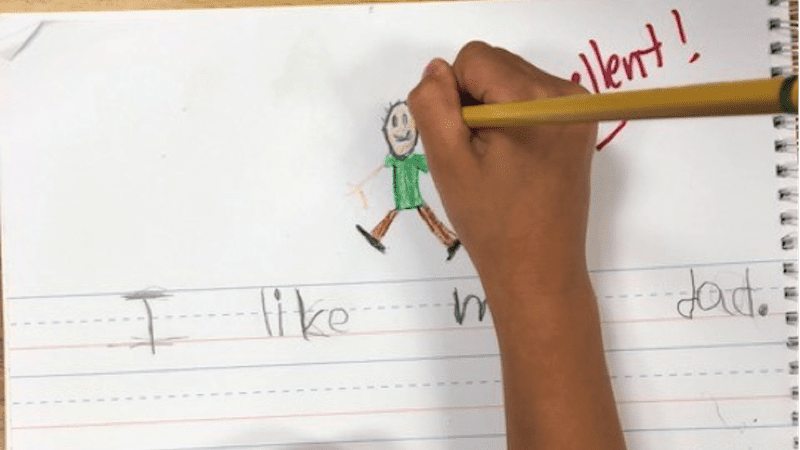
When telling people that I teach kindergarten, I often am asked, “How do you do it?” Now, imagine teaching five year olds how to write entire paragraphs. Yes, we are superheroes with the powers of patience, perseverance and the ability to bend at the waist for long periods of time. Here are the best kindergarten writing tips that I have gathered over the years.
1. Teach letter formation in context
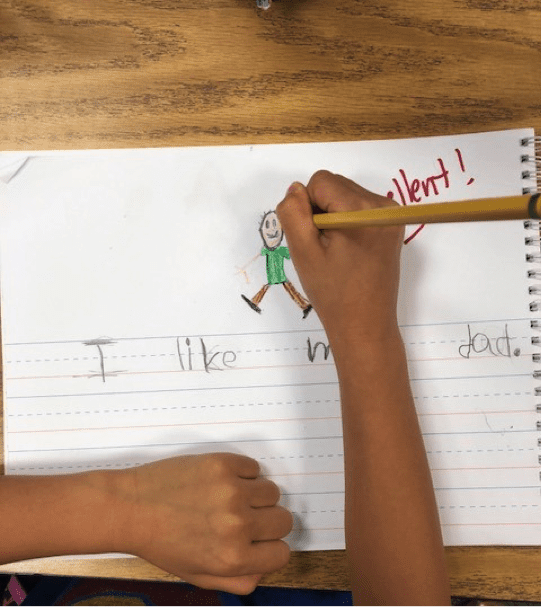
Kill two birds with one stone. Kindergarten students need to be taught how to form their letters. This can be done within the context of writing a sentence. Often, when students practice writing letters in isolation, they have trouble transferring handwriting skills to sentence writing. Teach capitalization, spacing and end punctuation while demonstrating proper letter formation.
2. Practice consistently
Have your students engage in meaningful writing from day one. Kids learn to talk by talking, and we know kindergartners have mastered that skill. They learn to write by writing even if it is a large string of letters at first or even scribbling. They have to start somewhere. We give them the tools to develop into confident writers by allowing them the time to write and draw every day.
[contextly_auto_sidebar]
3. Sight words, sight words, sight words
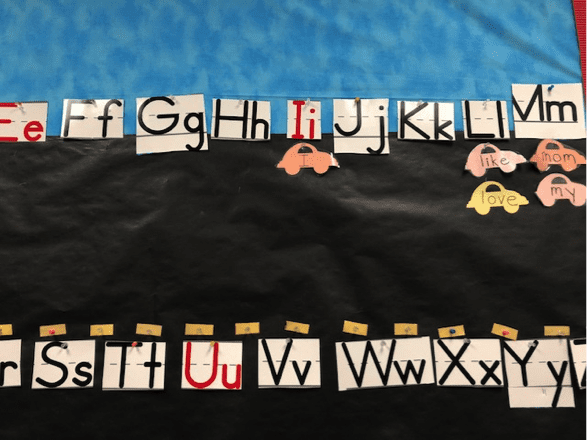
Students need to know how to read and spell several anchor sight words in order to build confidence with sentence writing. I use a word wall, songs and chants to teach students to spell sight words. For example, I sing the word like to the tune of “It’s a Small Word.” L-I-K-E, that spells like. L-I-K-E that spells like…. . Once they are armed with an arsenal of words that are essential to the structure of a sentence, they are well on their way to success.
4. Encourage invented spelling
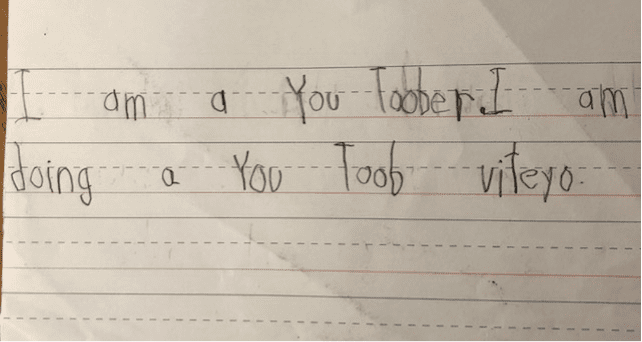
Invented spelling refers to stretching out words and writing them exactly as they are heard by a beginning writer. If students become hung up on spelling words correctly, creativity and continuity suffers. Students will only want to write very simple sentences. Kindergarten teachers double as detectives easily decoding sentences such as “I lik pesu and is kem (pizza and ice cream).”
[Check out our article on why invented spelling is so important. ]
5. Do mini lessons
Kindergarteners have the attention span of a fruit fly. This is why right before journal writing time, I teach them one quick skill. Mini lessons are great for teaching narrative, opinion writing, how to compose a topic sentence, and various stages of the writing process.
6. Try interactive writing
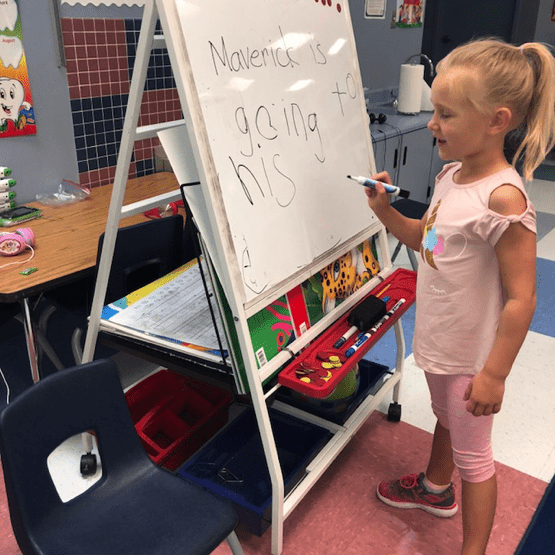
Morning message or class news is a good example of interactive writing. This refers to the teacher and student sharing the pen. One student gives the teacher news, and students are called up to the white board to help sound out words and place appropriate punctuation.
7. Choose meaningful topics
Kindergarteners love themselves, their family and their friends. Let them write about the topics they choose in their journals. Sentence starters confuse kindergarten students. If they write about the same thing for a while, it is ok. It is much like reading the same book over and over again. They are building confidence
8. Write across the curriculum
Reading and writing go hand in hand. Students can write their favorite part of a story or compose a letter to a character. Reading informational text and drawing and labeling a picture are a great ways to combine science and social studies research with writing.
9. Remember that punctuation is tough
Kindergarten students often will put periods at the end of each word or line. Teaching kindergarteners the concept of a complete thought is difficult because their thoughts go on and on and on and on. I teach the students that if their writing answers the question, “Guess what?”, it needs a period.
10. Share, share, share
Give students the opportunity to share their writing with their peers. The more opportunities kindergarteners are given to express themselves, the less likely they will be to shout out in the middle of the math lesson that they have a wiggly tooth or Uncle Joey is visiting.
Kindergarten writing is not for the faint of heart. Enjoy the strange spellings, humorous thoughts and the innocent excitement that will lead to young students becoming life-long writers.
What are your tips or questions for teaching kindergarten writing? Come and share in our WeAreTeachers HELPLINE group on Facebook.
Plus, 50 tips and tricks for teaching kindergarten and the best kindergarten books.
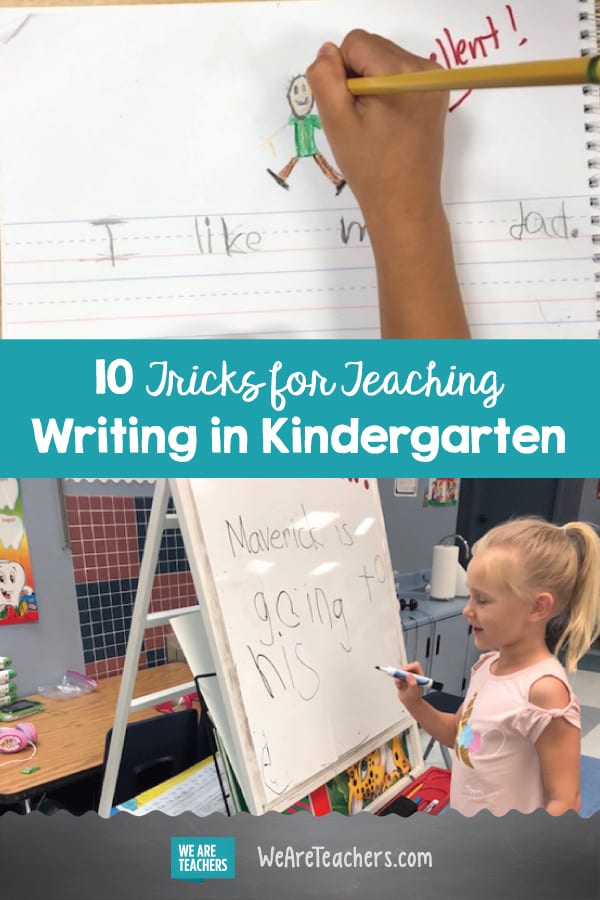
You Might Also Like
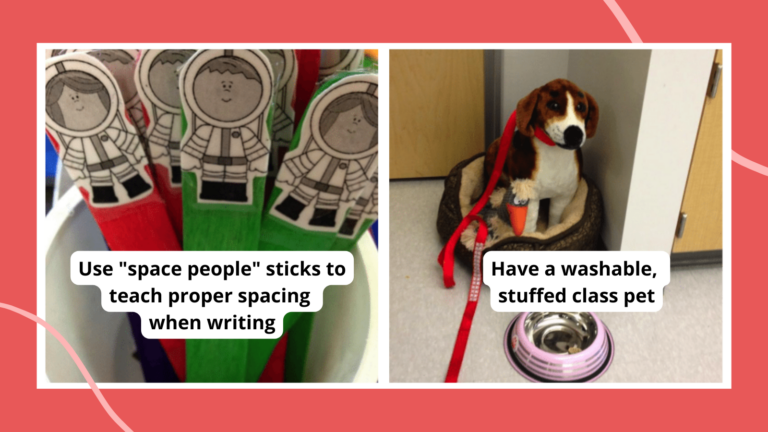
68 Tips, Tricks, and Ideas for Teaching Kindergarten
Brilliant ideas from brilliant teachers (like you)! Continue Reading
Copyright © 2023. All rights reserved. 5335 Gate Parkway, Jacksonville, FL 32256
- Skip to main content
- Amazon Favorites
- Search this website
Natalie Lynn Kindergarten
Teaching Ideas and Resources
The Easiest Writing Center Ideas for Kindergarten

In this blog post: Thinking about setting up a writing center in your classroom? Find the best Kindergarten writing center ideas and activities for here.
The writing center has long been one of my favorite literacy centers for Kindergarten. It’s easy to set up, easy(ish) to manage, and students absolutely LOVE going there!
If you aren’t yet convinced on the benefits of having a writing center in Kindergarten – or maybe you’re just looking for ideas to help it run more efficiently – this blog post is for you.
I’ll give you my best tips for setting up a writing center in Kindergarten , as well as ideas for differentiated writing center activities you students will love.
Kindergarten writing center set up
When choosing the best Kindergarten writing center set up for you, consider how much space you have and what will work best in that space .
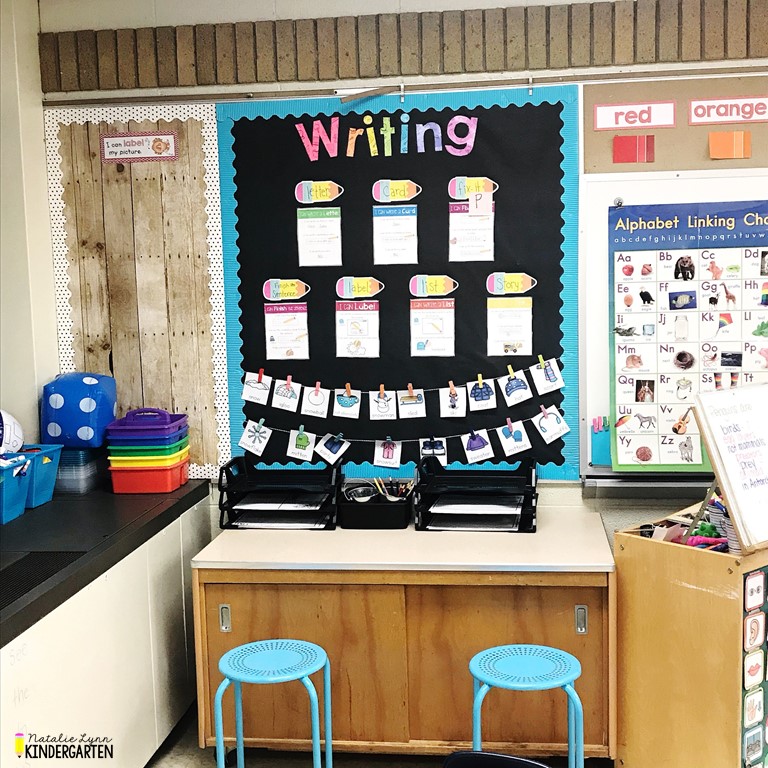
Will you have a designated table for students to work at?
Or would drawers where students can choose an activity and sit anywhere work better?
When considering how to display your writing center vocabulary cards, there are a few ways you can do this.
1. Use a pocket chart
Using a pocket chart for your writing center vocabulary cards display is probably my favorite method. The vocabulary cards are easy to see, easily accessible to students, and easy for me to change out.

We’re ALL about making life easier around here!
Each month of my Ultimate Writing Center for Kindergarten has 4-7 themes included. You can display vocabulary from all of those themes at once in a large pocket chart, or only put out one theme at a time and swap them out more often.
2. Clothespins and a string
Another option for your writing center vocabulary words is to use string and clothespins to display them.
![writing tasks kindergarten Setting up your writing center supplies [picture shows I can posters, writing center vocabulary cards attached to a string with clothespins, and writing center activities on trays]](https://natalielynnkindergarten.com/wp-content/uploads/2021/06/04530779-1485-4470-BA65-D6858C2B9598.jpeg)
This is cute and still relatively easy to change out, although objectively more work that using a pocket chart.
3. Binder rings
For even less space, you can hole punch the vocabulary cards and place them on a binder ring for students to flip through.
Just throw them in a basket or hang on hooks for easy storage.
The downside to this method is that the vocabulary words are not as easily accessible to every student. If the ring is already being used, other students cannot look up the word they need. Students will also spend more time searching for the word that they need to write.
Organizing your writing center activities
Once you decide how to set up your vocabulary words, you will need to decide how to organize your Kindergarten writing center activities. This will impact how many writing center activities you can put out for students at one time.
Some writing center organization ideas include:
- Stackable paper trays – I love these because it’s easy to add more and easy to see what’s on each tray. The downside is that they aren’t as sturdy and can fall.
- Sterilite drawers – These are sturdier and easy to use, but they do take up more space. If you want to specify which writing center activities each group completes, these are easy to color code.
- 10 drawer cart – You can place this cart next to your writing center for easy access, and I love that it holds so many writing center activities.
- File folder pocket charts – This takes up some wall space, but saves you actual classroom space. It’s also easy to color code by groups if needed.
Writing center activities for Kindergarten
Now that you have the best organizational writing center ideas for Kindergarten, it’s time to think about what writing center activities you want to have.
My Ultimate Writing Center for Kindergarten, 1st, and 2nd Grade includes 15-16 differentiated writing center activities each month.
Let’s take a closer look at some of those activities to hopefully give you some ideas for you Kindergarten writing center.
Writing Beginning Sounds
If your students are not yet ready to write full words, one idea for your Kindergarten writing center is to have them label and write beginning sounds.
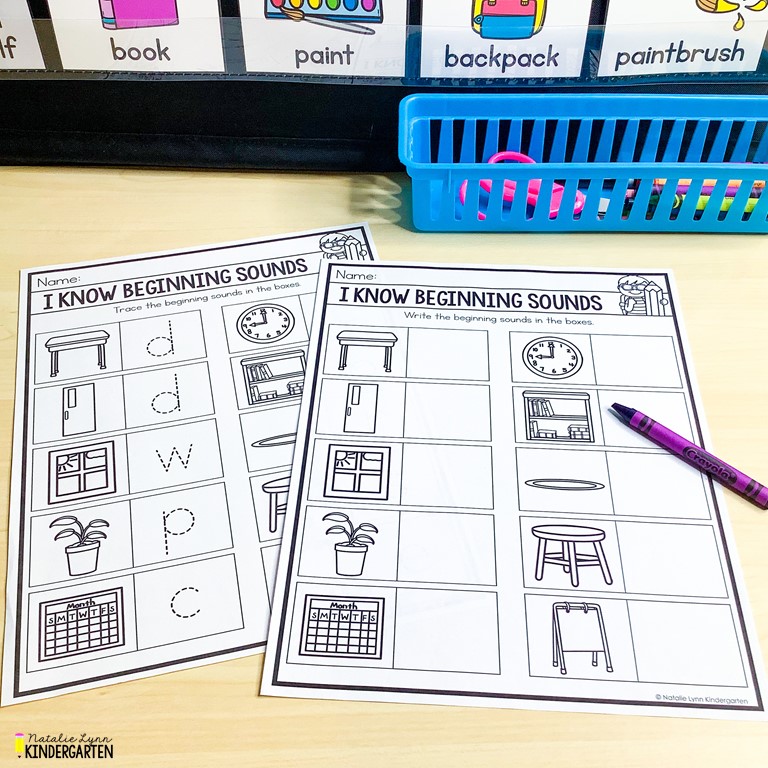
These I Can Write Beginning Sounds pages are differentiated, so you can decide if students will trace the beginning sound or write it on their own.
Stretch and Write Words
If your students are ready to write more than just the beginning sound, you can let them try stretching and writing words.
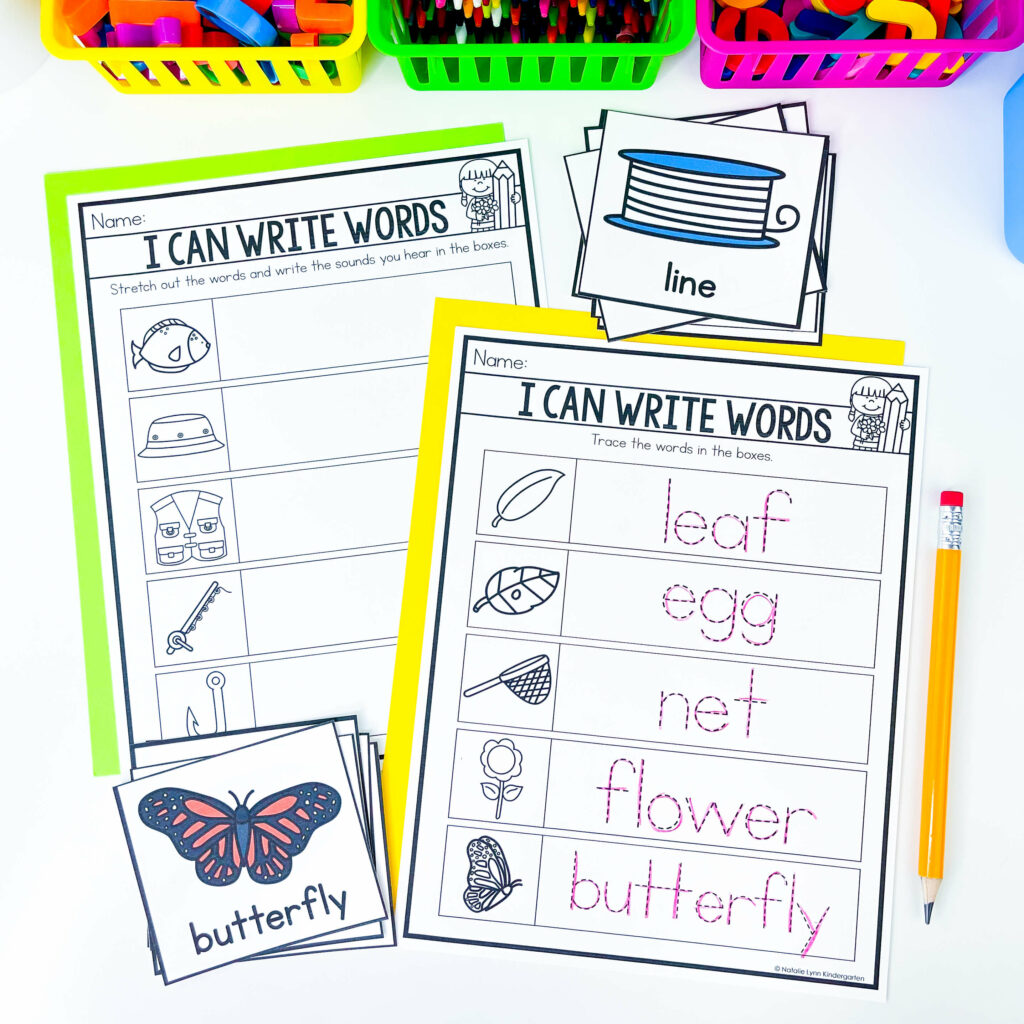
Of course, students have the vocabulary words as support, but if a student is relying on those, I like to encourage them to try stretching out the word and writing it on their own, and then checking their answer with the cards.
Writing a List
If your students are ready to write words with even LESS support, they can try creating a list.
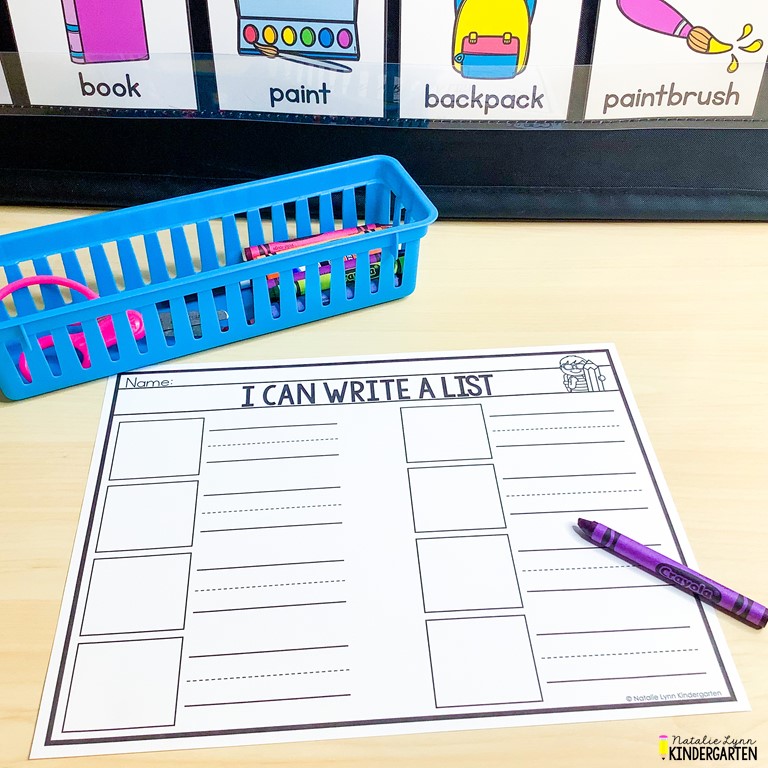
For your students just getting started with writing, this might just be a list of their favorite words on the vocabulary wall. 😉 But eventually these can become themed lists around a topic.
Another Kindergarten writing center idea to practice writing words is labeling. For these labeling worksheets, students will either trace or write the vocabulary words.

Students can find and copy the words from the vocabulary wall, but you’ll probably find students stretching out and labeling the words on their own once they are used to doing that in their own writing.
I love that this writing center activity naturally differentiates itself!
Handwriting Practice
Handwriting practice worksheets are a great writing center option for Kindergarteners who are not yet able to write full stories (and honestly, is probably also needed by those who can!).
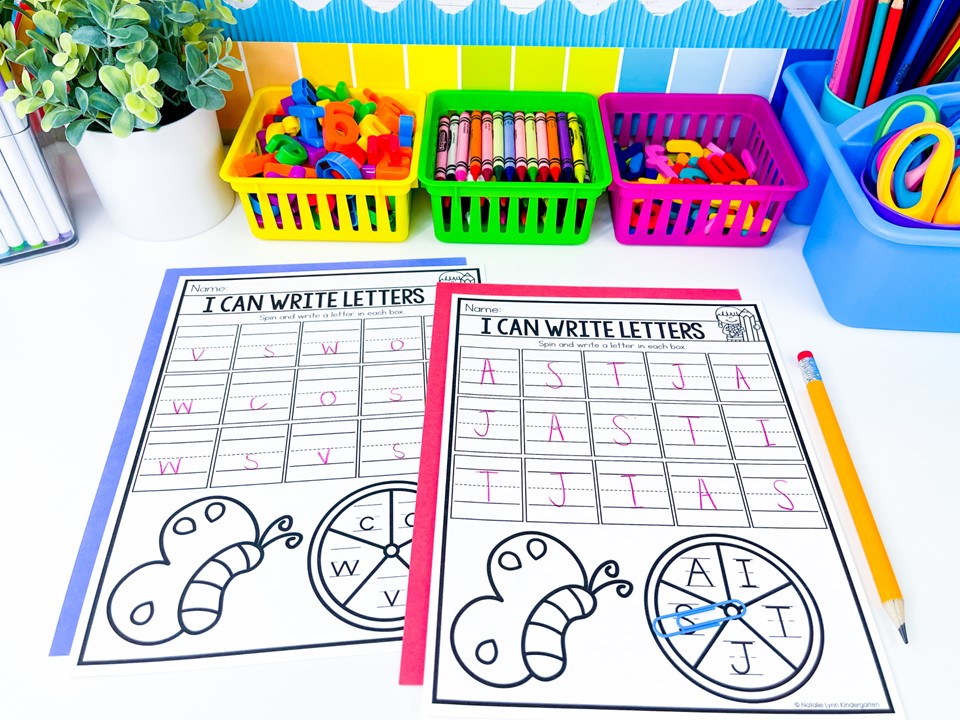
You can change up this writing center activity by sometimes having students copy letters, spin and trace letters, spin and write letters, roll and trace letters, roll and write letters, and more.
You can also have reusable handwriting practice activities in dry erase pockets or laminated.
Writing Sentences
One of my favorite writing center ideas for Kindergarten is writing sentences. This is a little more scaffolded than just writing a story, but allows students to build those writing skills.
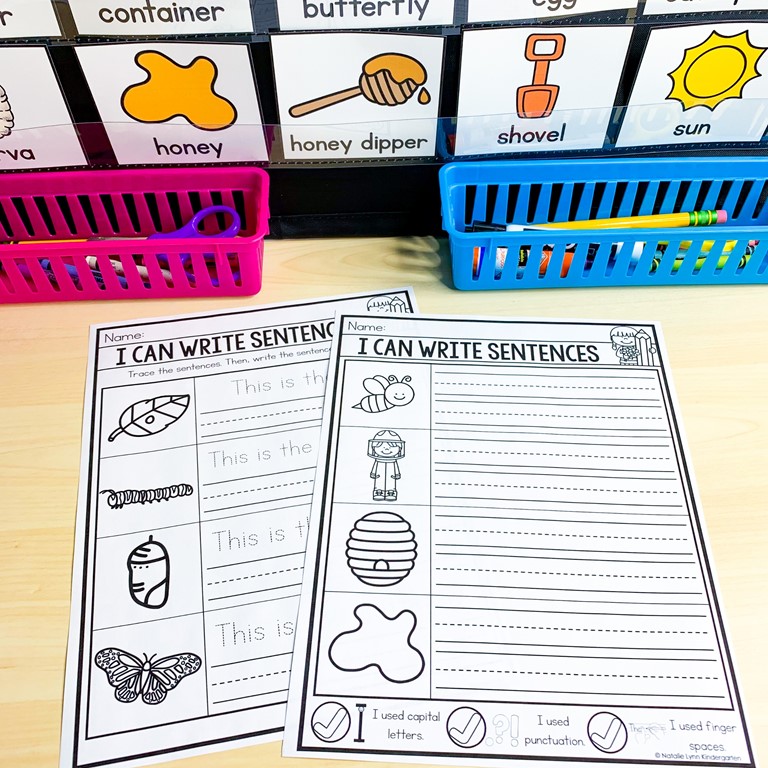
Of course, if your students need a little more support in writing sentences, you can use the trace and copy version. This allows students to trace a sentence and then copy it.
Building Sentences
If your students need more support in what is needed to write a sentence, building sentences is a great writing center activity.
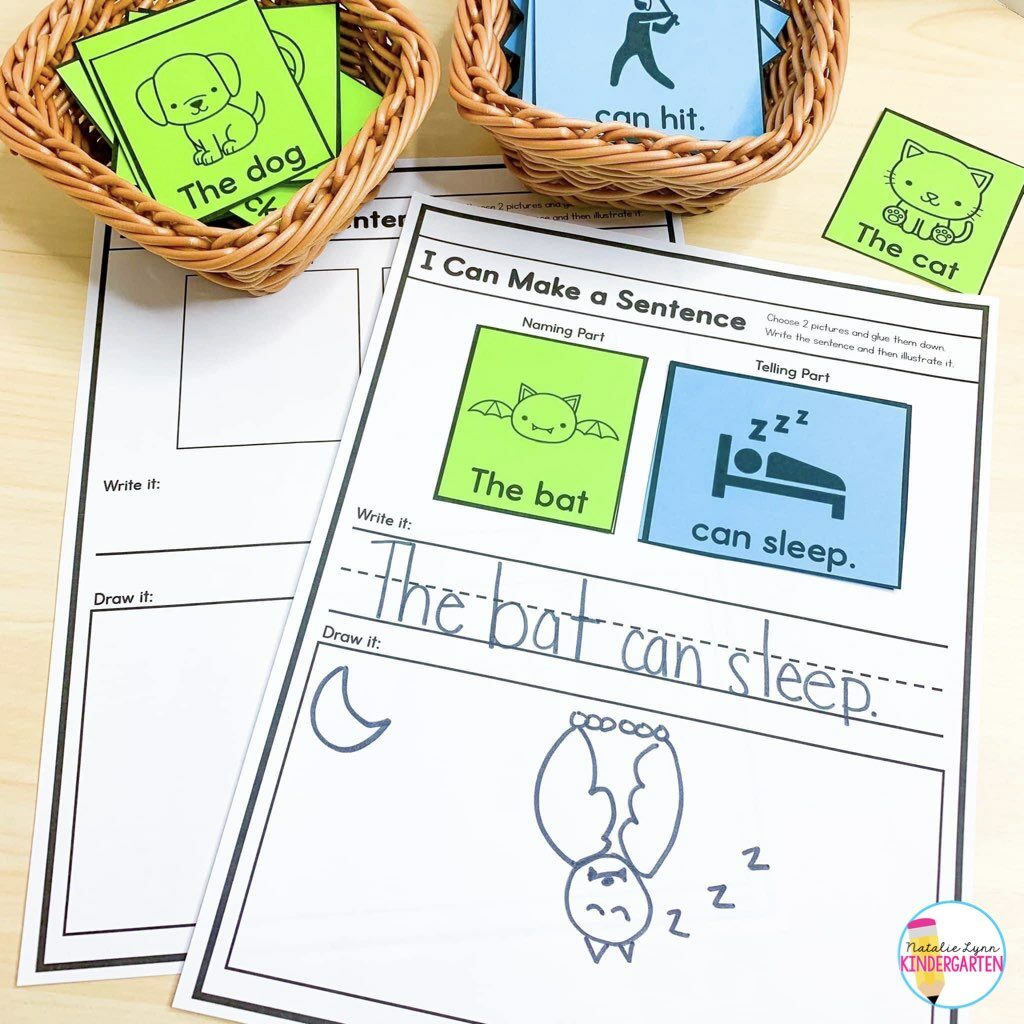
Students will choose a subject card and a verb card to make their sentence. Then, they will rewrite the sentence and illustrate it.
You can get some hilarious sentences through this, and it is always a hit with students! Download this writing center activity for free here:
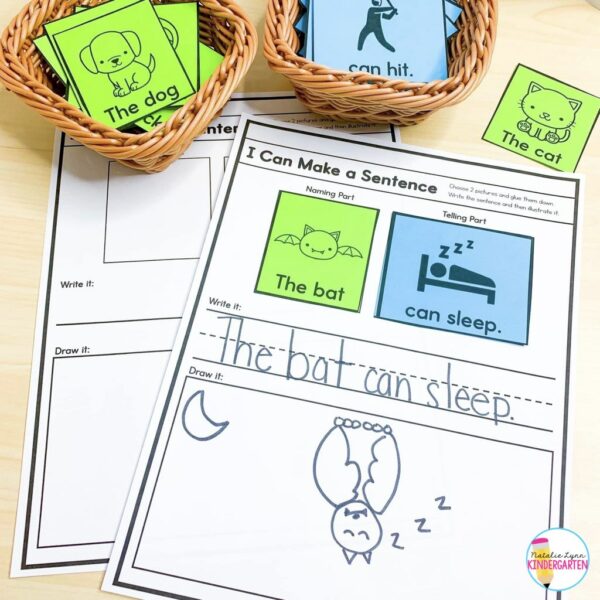
Do you love free stuff?
Kindergarten Making Sentences Center
Your students will LOVE building and writing simple sentences with this free Kindergarten making sentences activity.
Finish the Sentence
In Kindergarten, we spend a lot of time on sentence work! If you need more writing center ideas that involve sentences, look no further than Finish the Sentence.
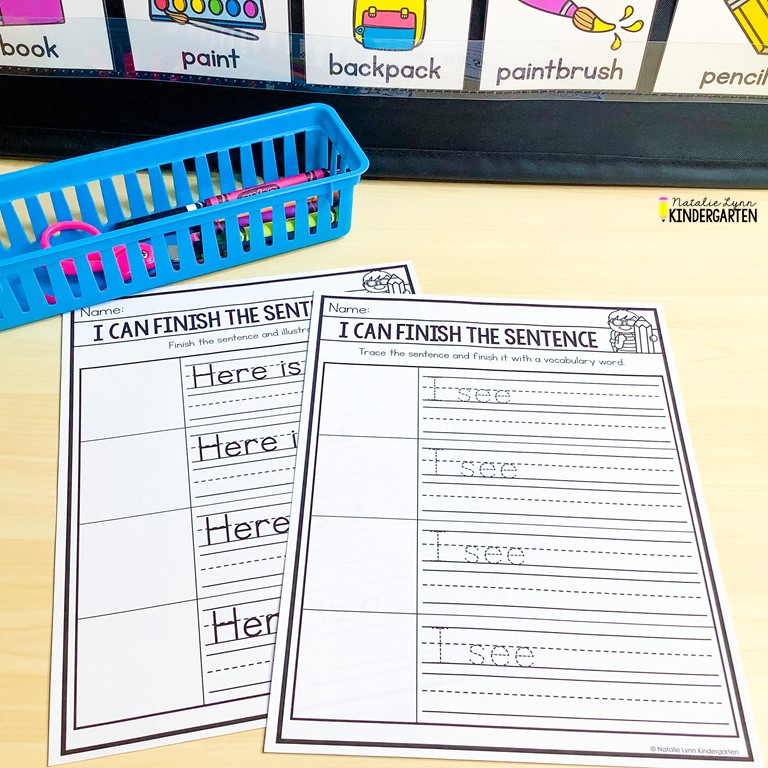
For this writing center activity, students will finish the sentence with either a vocabulary word card or any word that they can stretch and write.
This give students a little more freedom than the Writing Sentences activity, but is still supportive.
Creating Pattern Books
Pattern books may not be the best for reading, but they are wonderful for our beginning writers. Students love feeling successful in being able to create a whole book, and the simple sight word sentences makes it possible for them to read.

For these one page books, students will either write the matching vocabulary words or choose their own words to fill in each page.
Then, they can cut out and staple the pages to create their own mini books.
Story Starters
Do you have students who are ready to write, but they just struggle to get started? These writing center story starters are a great way to spark ideas in our little writers.
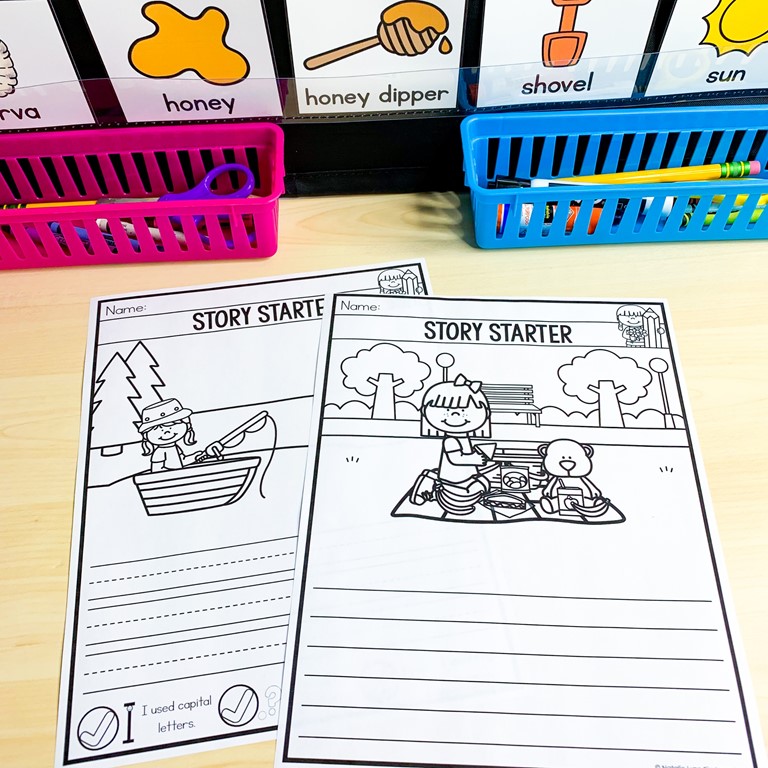
The story starter prompts are differentiated, so you can choose whether students are writing a sentence or a story. There is also the option to have an editing checklist at the bottom for students to edit and revise their writing.
Writing letters and cards
Nothing inspires students to write like being able to write letters and cards to their family and friends!
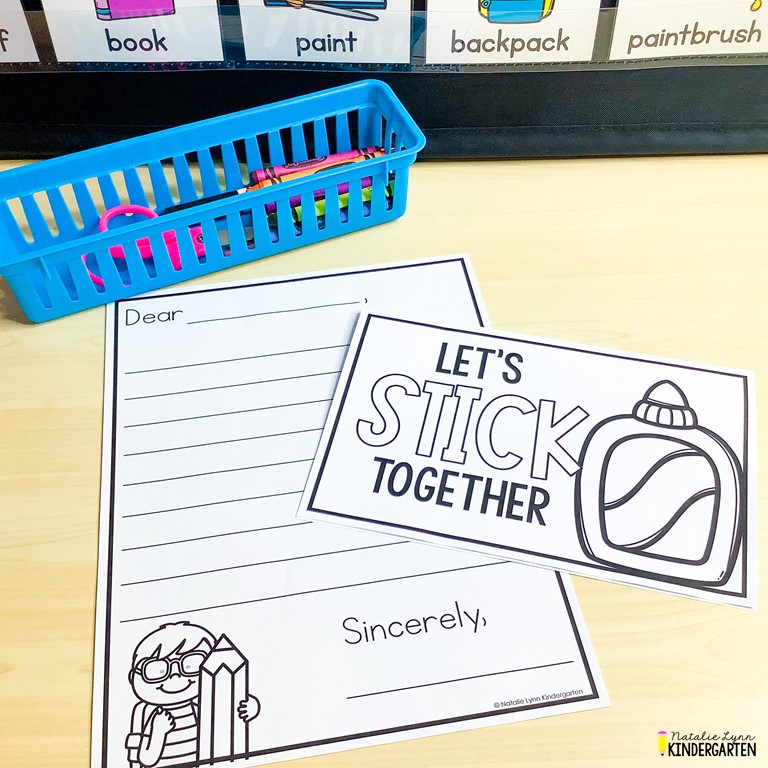
You can even extend this writing center activity more by having a classroom mailbox and making it a student job to deliver the mail each day or week.
Mix and Fix Sentences
This writing center activity works on sentence structure, writing sentences, and comprehension. Students will unscramble the words and glue them in order.
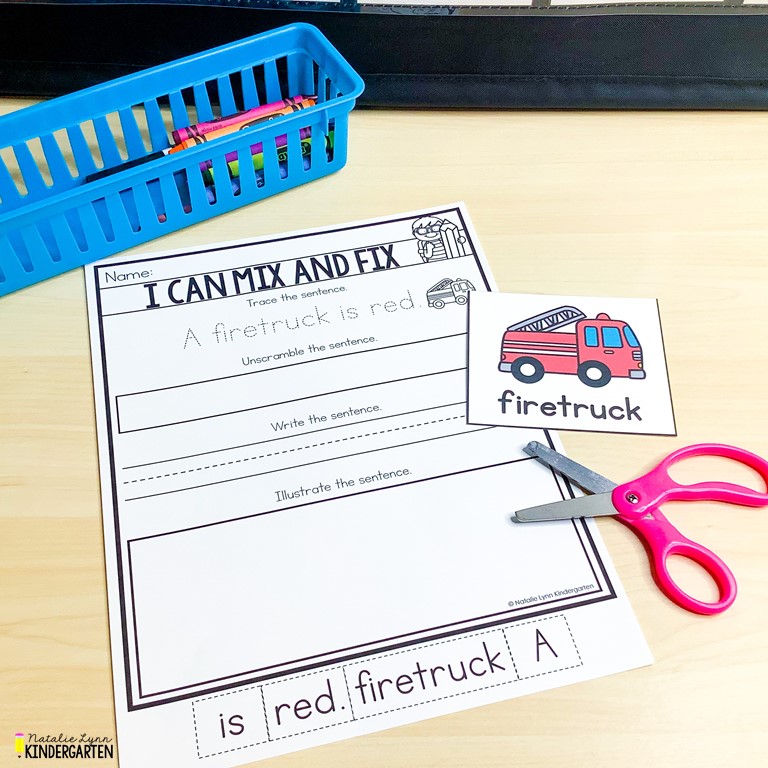
Then, they will rewrite the sentence and illustrate it.
If your students are ready for a decodable sentences version without pictures, you can find decodable sentences mix and fix worksheets here .
Kindergarten Writing Center for the Year
Now that you’re full of ideas for setting up your Kindergarten writing center, check out my Ultimate Writing Center for the Year!
This writing center includes all of the activities shown above, plus more. Every writing activity is easy to print and go, and includes options to make differentiation easy.
Grab the Ultimate Writing Center for Kindergarten, 1st, and 2nd Grade here!
Looking for more blog posts on setting up your literacy centers in Kindergarten? Check these out:
- Setting Up Your Writing Center
- Setting Up Your Classroom Library
- Setting Up Your Basket Centers
- Setting Up Your Classroom Sensory Bin

CVC Decodable Readers
Sign up for my FREE email newsletter and receive five short vowel decodable readers!

You May Also Enjoy These Posts
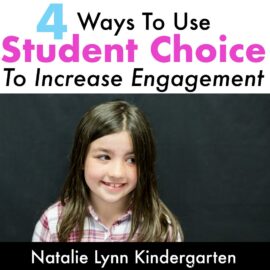
Reader Interactions
July 2, 2023 at 2:51 pm
Hello! I have a question. I love the build it activity! I teach a sped classroom with students functioning between PreK to 1st grade levels. The majority of my students do not understand how to form sentences so I will be using your build it activity. Where do you go from the build it activity? What do you teach next? Do you have a skill sequence that you follow? Is it posted somewhere or will you send it to me? Thank you for your help.
July 2, 2023 at 4:35 pm
Hi Alicia! If you send me an email at [email protected] I’d be happy to talk more with you about sentences!
Hot in the Shop
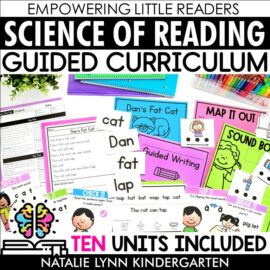
Science of Reading Guided Curriculum Phonics Decodable Readers + Lesson Plans
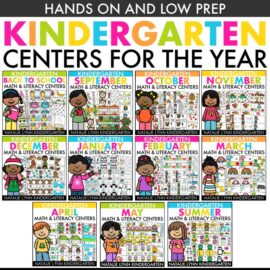
Kindergarten Centers for the Year Bundle | Low Prep Math and Literacy Centers
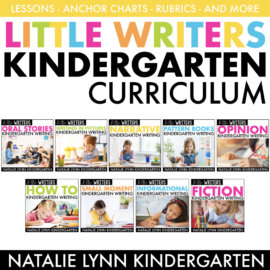
Kindergarten Writer’s Workshop for the Year | Kindergarten Writing Curriculum
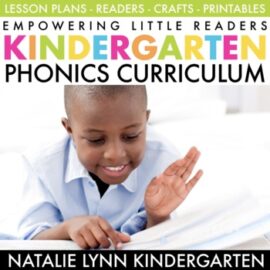
Kindergarten Phonics Curriculum for the Year Bundle | Empowering Little Readers
More Products
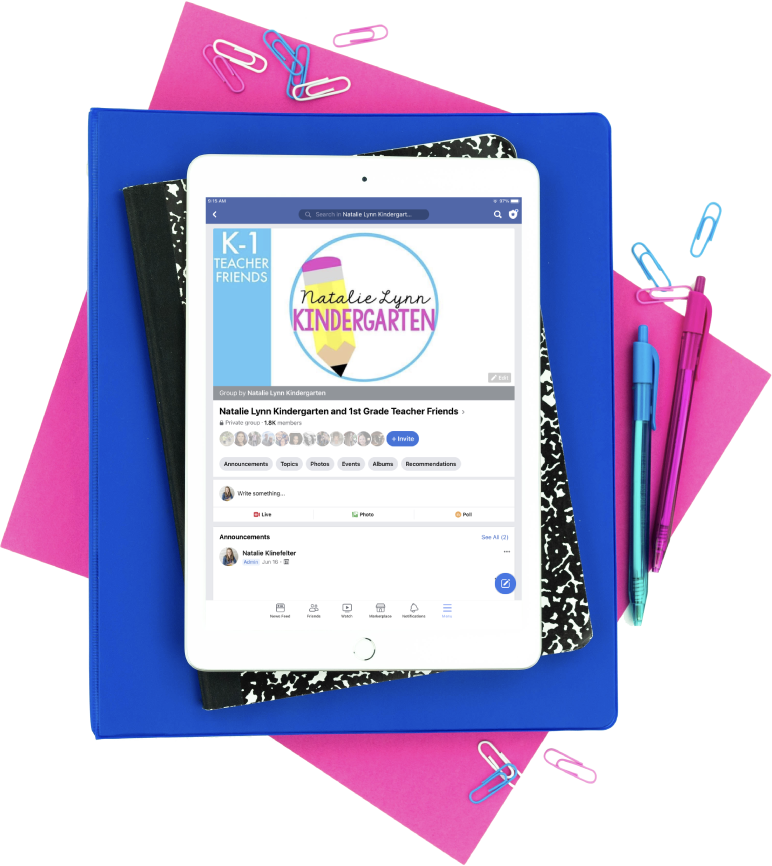
All We're Missing is You!
Join us over on Facebook for even more great resources, ideas, and teaching tips for kindergarten and early elementary teachers!

Welcome Friends!
My name is Natalie and I am the face behind Natalie Lynn Kindergarten. My passion is creating hands-on and engaging resources for the classroom and helping teachers to make learning FUN again! I love showing teachers how they can give students ownership over their learning and create meaningful learning experiences.
Privacy Overview

Top 10 Best Writing Activities for Kindergarteners – 2023 Compilation

Children’s early developmental years are very important for building up the necessary skills for learning, reading, and writing.
However, most children are naturally curious and hyperactive, which is why it is difficult to engage them in boring classes.
To help you out, we have compiled some amazing and interesting fun activities that will brighten up the mood of your classroom and captivate the attention of your students while encouraging them to actively participate in class. We suggest you read this article to get some exciting new ideas for your kindergarten classroom.
Great Writing Activities For Kindergarten
Here are some amazing activities that we think that your preschoolers will love and enjoy. Make sure to keep them super fun and interactive!
1. Giant Letter Maze
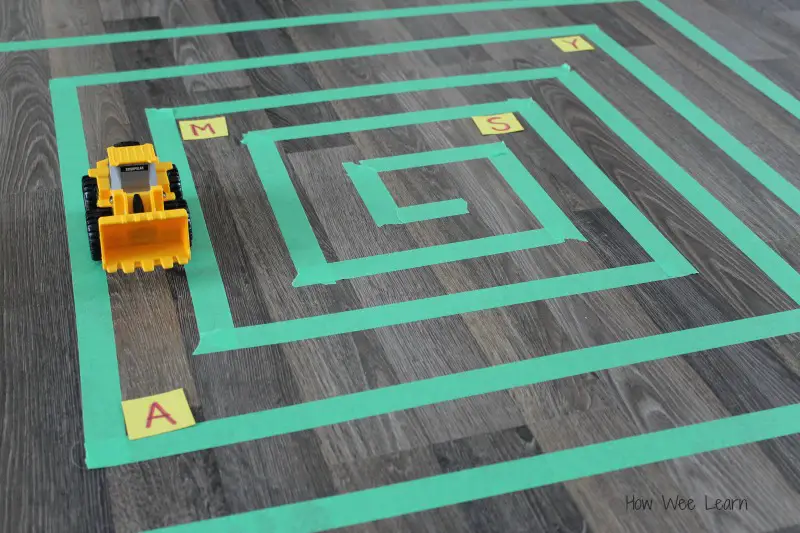
During the developmental years of children, it is very important to teach them how to grip a pencil correctly. The Giant Letter Maze is a fun activity specially designed for children between the ages of three and four.
As a teacher, you must engage your children in a fun manner. While your students might not be able to write their ABCs just yet, you can still make them learn and sing their alphabets, all the while teaching them how to grip their pencil the correct way.
This activity takes very little time and effort to set up. All you need is to place a large sheet of paper on the ground and write the letters on it. The letters do not have to be necessary in order.
Ask the child to match the letters in the correct order. You can make this more fun by urging the children to sing their ABCs while doing this activity. Through this activity, you can teach your students how to correctly grip the pencil while matching the letters.
This improves their fine motor skills . To learn more about this activity, you can check out Howweelearn.com as well.
2. Dough Your Letters
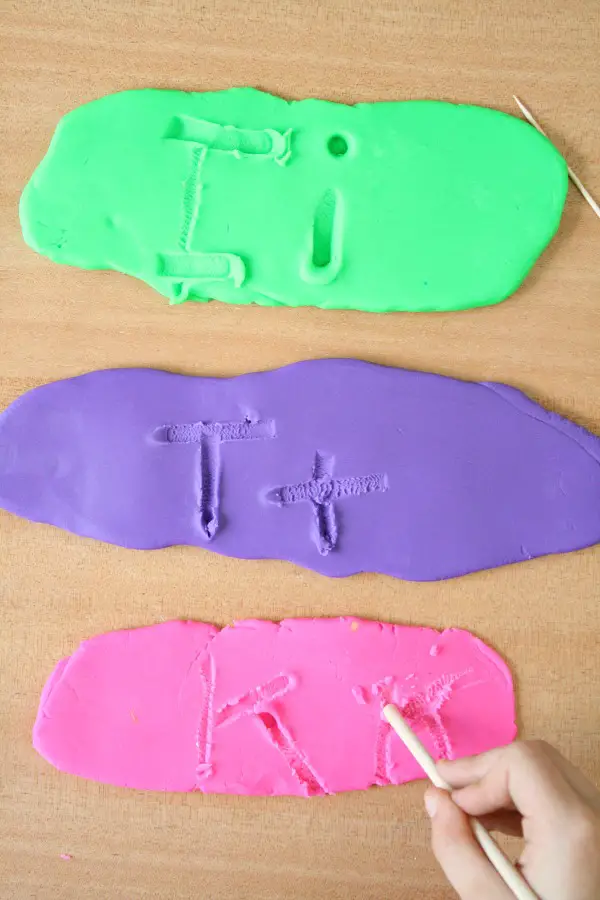
Engaging the preschoolers in educational activities can be a little challenging, especially if they are very active and always looking for fun things to do. However, you can make them do their letters through this cool pre-writing activity for preschoolers. All you need is some colorful play dough and bright drinking straws. Children love to play with colorful things. After they are done creating interesting things from their play dough, ask them to join you in this fun Dough Your Letter activity. Flatten and lay out some brightly colored dough on the table and trace a letter using a sharp object. Now, take the straws and cut them into small pieces, and ask the students to trace the letter by placing the straws in order. Once done, get back and appreciate your students’ handiwork. You can check out FantasticFunandLearning.com to learn more about this activity.
3. Who Am I?
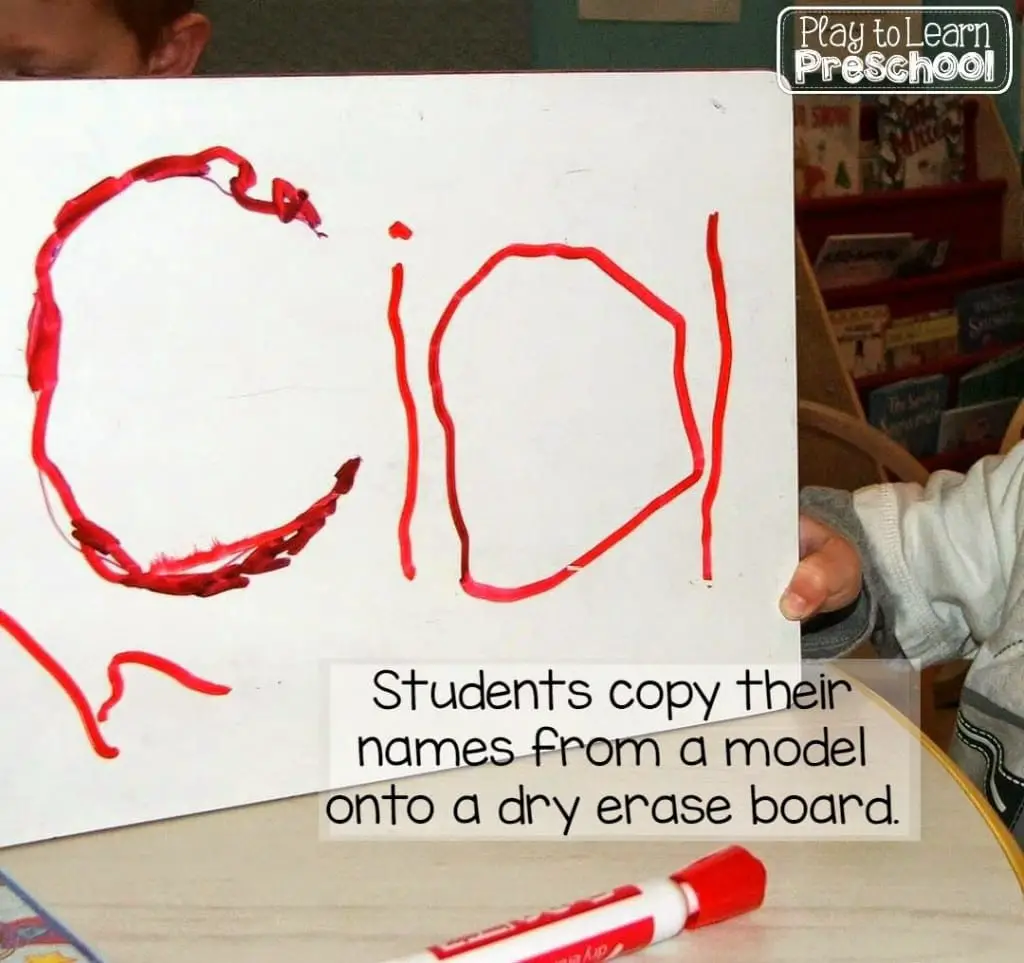
The first thing a child must learn is how to write their name. This cool self-introduction activity is a fun way to start teaching your students the basics of writing. The worksheet is designed for kindergarten students to fill in their personal information such as their name, age, and the city they live in. The worksheet includes a space for the kid to draw their picture and the place where they live. It is a simple and easy writing activity that most preschoolers enjoy doing. You can also ask the students to talk about their favorite color, sports, or book while filling the sheet to make it more engaging and fun. The worksheet, along with more details, is available on Playtolearnpreschool.us and can be printed by parents or teachers. Print as many worksheets as you want for your classroom, and you are good to go!
4. Pick a Picture, Tell a Tale
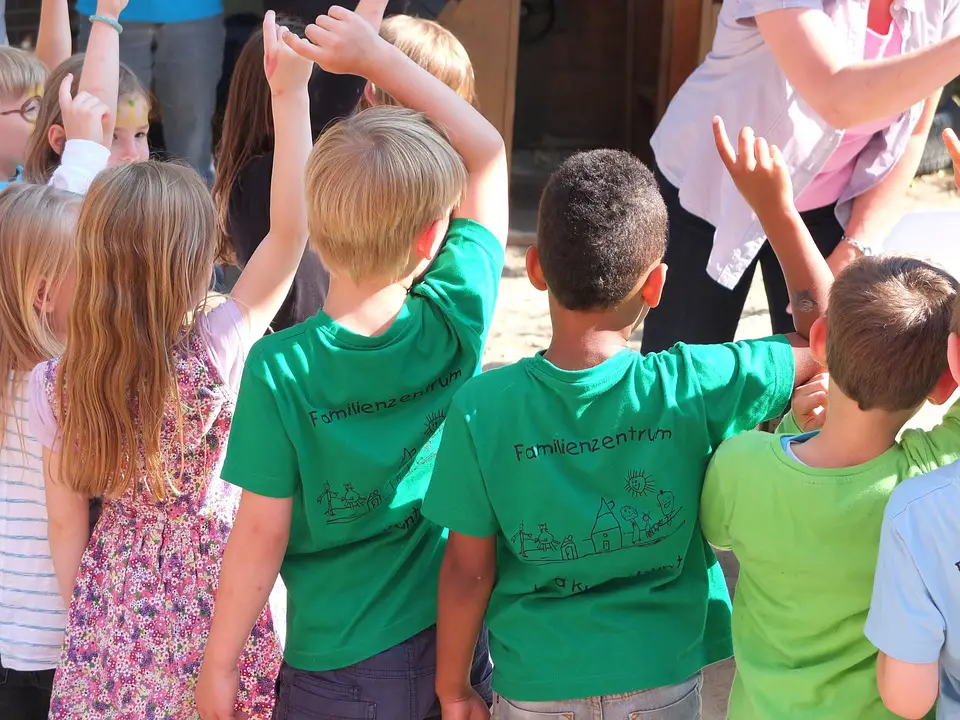
Pictures are a great way to tell a story. They are also a great way to capture the attention of young children. You can use some amazing pictures to find clues to form a tale. Ask the students what is happening in the picture and urge them to write a few sentences. The kids will not only enjoy it thoroughly, but this fun activity will spark the creativity inside them as well. As a teacher, you can make this activity more interesting and engaging by asking the students to read out their stories in front of the class or to their best friend. Print out some colorful pictures to get started. You can download some cool pictures and learn more about this activity from NoTimeForFlashCards.com .
5. Find Your Valentine Card
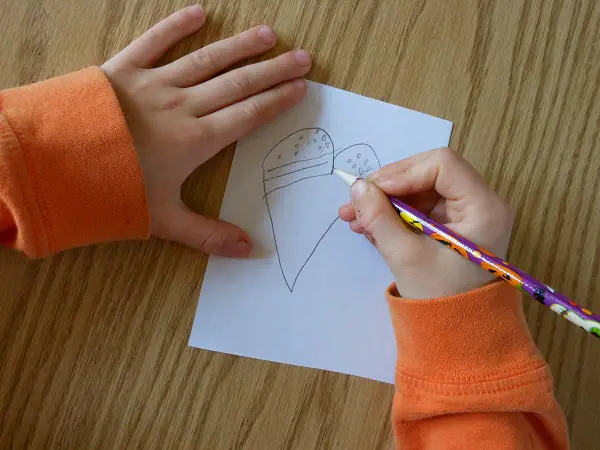
Celebrating Valentine’s day is an amazing way to inspire feelings of love and friendship among students. However, you can turn this valentine’s day celebration into a fun and interesting learning activity by engaging students in finding their valentine’s card.
This activity is specially designed for kindergartners and grade-one students and is a great writing activity for early learners and readers. This activity takes a little time to set up but is fairly easy.
You can download printable picture cards with cool vocabulary words related to Valentine’s day and paste them all around the classroom. Print the response sheets for students and ask them to find the words on the picture cards that start with the letter given in their sheets.
The students should look around the classroom and copy down the vocabulary words from the picture cards. This activity is a fun way to teach students how to spell some basic vocabulary words and learn their meanings, all the while engaging them in a fun and friendly classroom activity.
You can download the printable cards and sheets from ConfidenceMeetsParenting.com and find many more valentine’s day activities as well.
6. Aye, Aye Captain!
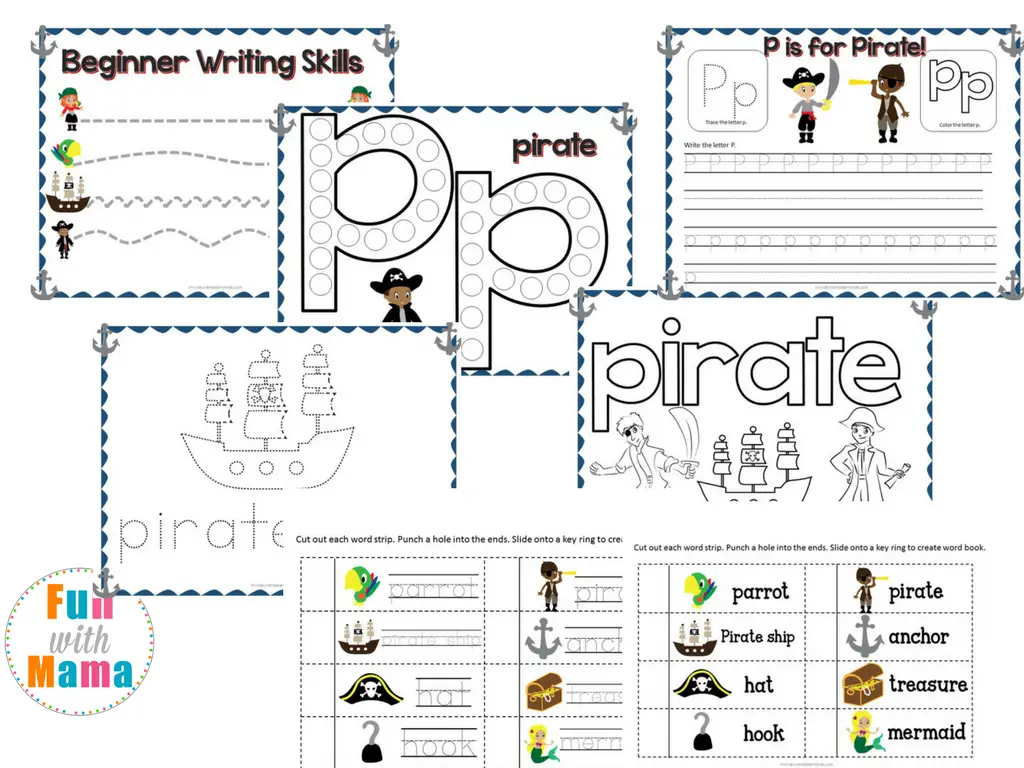
Summers are ideal for spending some amazing time near the ocean with your friends and family. Children, especially, love the sea. Most of them get excited when they learn about the ventures at sea. As a teacher, you can incorporate many fun activities related to the ocean that may not only help the students in learning and writing but also spark their enthusiasm, creativity, and curiosity. This cool Pirate activity includes a pack of printable sheets with different writing, tracing, matching, coloring, and drawing sheets related to pirates. Print the sheets and allow the students to imagine pirate life and complete the tasks. You can download the printables from WooJr.com . Check out many more activities available on the site for preschoolers as well!
7. Let’s Do a Century!
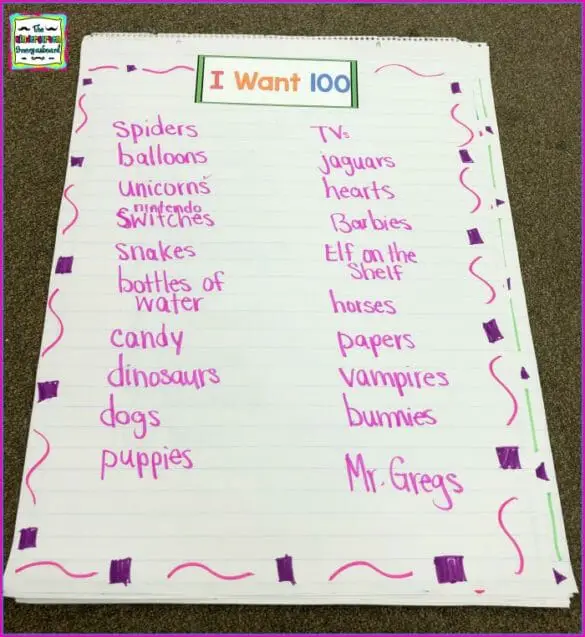
The 100th day of the class is a great day to celebrate with the children. It denotes that you have spent 100 days with the kids, laughing and learning amazing things. This Let’s Do A Century writing activity is a great way to celebrate the 100th day of learning for preschoolers and kindergartners. Ask them to write 100 things that they want and 100 things they do not want. The teacher can collect the response sheets at the end of the day. This activity is a great way to see what the students have learned so far while making them practice their vocabulary and writing skills in a fun manner. You can check out more similar ideas for the 100th-day celebration for your class available at TheKindergartenSmorgasBoard.com .
8. Thanksgiving Word Hunt
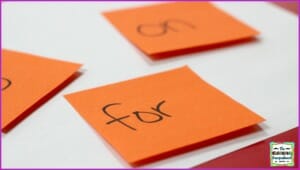
Feeling a bit festive lately? Well, it is the perfect time to have some fun in the classroom. Engage your students in this exciting Thanksgiving word hunt activity this year. This activity will not only help them shake off some boredom, but they will also learn some new words related to thanksgiving. To set up this activity, all you need to do is print some colorful thanksgiving picture cards with names and paste them around the room – on the walls, cupboards, and boxes. Now give a sheet to each student with pictures and ask them to find the matching picture card around the name. After finding the card, tell the students to write the name on the sheet and color in the given picture. This word hunt will keep your kids on their toes, and they will learn some interesting thanksgiving vocabulary as well. To find out more about this activity, check out TheKindergartenSmorgasBoard.com .
9. Spring Writing Fest
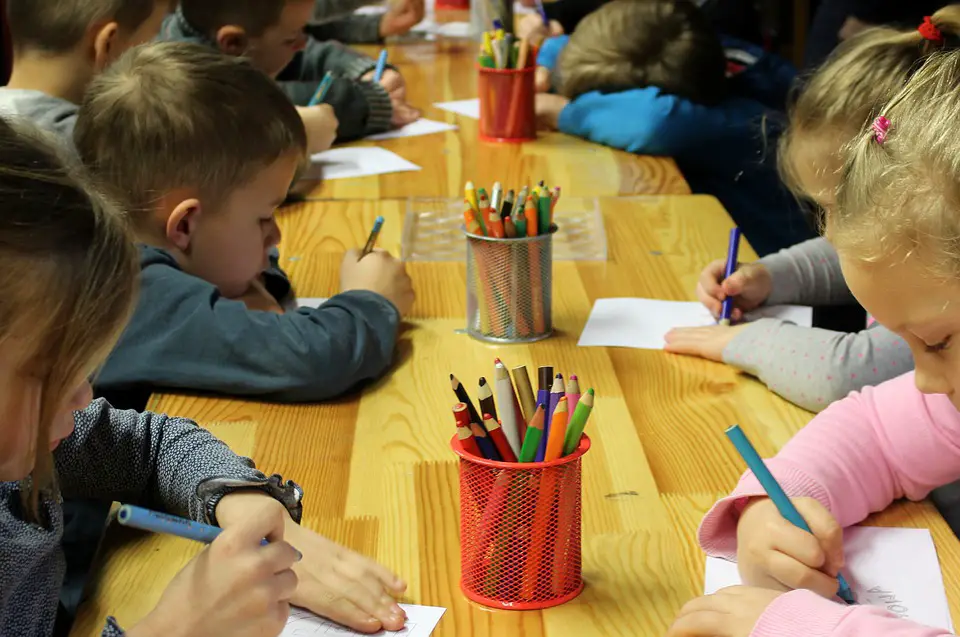
Spring is a great time to have fun and enjoy. You can brighten up the mood of your classroom by engaging your students in cool learning and writing activities. We suggest you take your class outdoors if possible and set up a writing center for the kids.
Incorporate spring vocabulary words such as flowers, bloom, bunny, basket, green, etc., into your writing activity. To set up this Spring Writing Fest, print the response sheets for each student and provide them the necessary tools to cut, paste, write, and draw at the writing center.
Ask the students to cut the jumbled letters at the bottom of the page and paste them on their sheet after assembling them in the correct order. Now, students must copy and write the same word in front of the pasted letters, or you can ask them to write a sentence with the focus word in it.
Lastly, ask the students to draw colorful pictures that describe the given word. You can find the printing materials at JournalBuddies.com . Check out the site to learn more about this fun springtime activity.
10. Reindeer Food Writing Tray
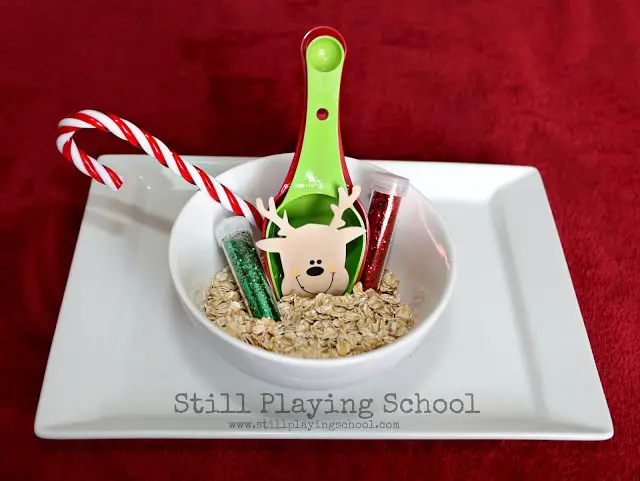
Christmas is a great time to let out your creative, artsy side. You should encourage your students to show their fun, playful side while learning new things during the Christmas festivities. We suggest you try this Reindeer Food Writing Tray activity to engage your students in some fun learning activities before leaving for the Christmas holidays. To set up, all you need is some oats, glitter, and a baking tray or plate. Make the reindeer food, spread it on the tray, and use your finger to draw letters. This activity helps students learn, recognize, and practice simple words while having a little fun. To learn more about this activity, check out StillPlayingSchool.com .
What Supplies Are Needed For These Activities?
Designing fun activities for children can be a bit challenging, but with the right supplies, you can come up with some amazing ideas to engage your students and make them learn some basic writing skills. These activities are quite simple and can be set up in a few easy steps using the right tools.
Most activities that we have compiled include printable worksheets or picture cards that you can download from the given websites. For this, you may need a color printer and paper.
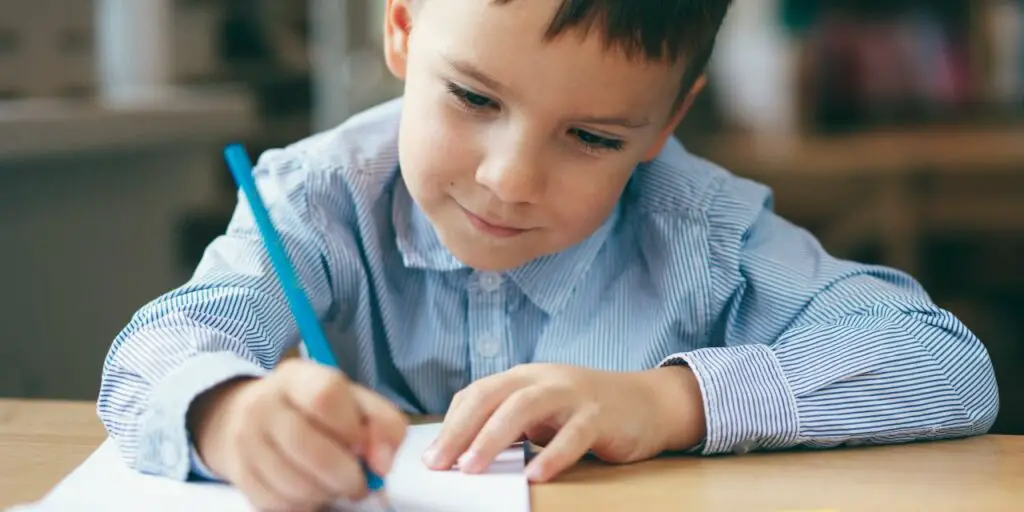
Similarly, most activities include tasks such as cutting, pasting, and drawing, which is why you might need scissors, glue sticks, and drawing stationery such as color pencils, crayons, and oil pastels.
Some activities might require unique supplies, such as play dough, colorful straws, salt, garland branches, and magnet letters, to make them a little more fun and interesting. However, these things are fairly easy to find and are not very expensive either.
Conclusion
Dealing with young children is not an easy job, especially if they are hyperactive and super notorious with a very little attention span. Therefore, we believe that the activities we have compiled are a great way to engage your students in some fun learning and writing activities.

Home » Classroom Activities » Kindergarten Activities » Top 10 Best Writing Activities for Kindergarteners – 2022 Compilation

Hi, I'm Amanda! Welcome to Education Outside! Im passionate about educating young minds and helping parents/teachers by providing easy and effective teaching resources. Check out all of my teaching resources on my Teachers Pay Teachers store .
Be the first to know
Subscribe to our newsletter and receive updates about new products, promotions, bundles, and more.

Copyright © Education Outside
Privacy Policy | Return Policy
Shop Worksheets
- Long Vowels
- Short Vowels
- Sight Words
Classroom Activities
- Alphabet Tracing
- Kindergarten Activities
- Number Tracing
- Long Vowel Practice
- Short Vowel Practice
- Sight Word Practice
- Fry Sight Word List
- Pre-primer Sight Word List
- Primer Sight Word List
- 1st Grade Sight Word List
- 2nd Grade Sight Word List
- 3rd Grade Sight Word List
- Amazon Books
- No products in the cart.
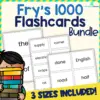
subscribe for updates and freebies!
Sweet for Kindergarten
Teaching resources, freebies, and ideas for the Kindergarten classroom
Kindergarten Writing Center Ideas
During our daily literacy center rotations, students would have a writing center. The content varied throughout the year, starting with handwriting practice, sentence writing, and finally getting to do creative writing. I found it very important to practice a variety of writing skills and to have students do this daily. With center planning, I liked to keep it very simple and do similar activities each week. Here are some of my favorite Kindergarten writing center ideas to use in your classroom.

Handwriting Center Activity

Handwriting needs to be practiced throughout the entire year of Kindergarten. Rather than just teach it at the beginning of the year, I teach it weekly. During the first 26 days of school, we will practice writing a letter per day. After that, we continue to practice a different letter each week. During our whole group lesson once a week, I focus on writing that letter. We will practice using handwriting paper, as I show them explicit directions on how to write the letter. Read more about how I teach handwriting here. Then, during centers that day, they will practice that letter again using these handwriting pages. I print front to back with a graphic organizer on the backside. Students are to draw pictures or write words that begin with that letter sound. This ties in phonics practice and gives them something to do once they finish writing the letter.
Find Handwriting and Graphic Organizers in my Teachers Pay Teachers store here.
Hands-On Building Sentences

One of the best ways to help students write sentences on their own is to make it more hands-on. This sentence building activity allows students to create their own sentences by moving around the words and pictures. I typically introduce this center in Month 2 of school. First, I help them create sentence stems and fill in the end with a few words or just a picture. By the end of the year, they are able to do this completely independently, and even record their sentences. You can read more about building sentences and why this is an important step of independent writing here.
Find the Holiday and Seasonal Sentence Building Bundle here.
Journal Writing: Sight Word Sentences

One of the ways I differentiate my writing center is by using different sight words for each student or group. For this center activity, students had a journal that they wrote sight word sentences in. They would take their sight word list , write a sentence for one of the words, then draw a picture to match.
This journal below is similar to the journal my students used:
Creative Writing: Picture Prompts

Picture prompts are used to help students think of what to write about. Each week, they would have a new set of pictures to choose from. You can read more about Picture Prompts and how I used them in my classroom here.
Find the Holiday and Seasonal Picture Prompts plus Writing pages in my Teachers Pay Teachers store here.
Weekly Writing Prompt

At the end of the week, students would have a weekly writing prompt based on the essential question of the week. We used the Reading Wonders curriculum, so all of these question prompts are from there . At the beginning of the year, we would do this activity as part of the whole group writing lesson, until they are able to do this independently.
If you don't use Reading Wonders, you can always come up with your own weekly writing prompts based on the story of the week, what you are learning at school, or theme/topic you are learning. For example, in September, you might write, “What is your favorite way to eat an apple?” We did this as part of our writing lesson some weeks!
Each day of the week, my students would do one of these center activities during their writing center. It made planning writing centers quick and easy! Let me know what Kindergarten writing center ideas you will try!
You can find more writing activities in my Teachers Pay Teachers store here .

[…] Writing Center Activities […]
Latest on Instagram

Latest on Pinterest
Latest on facebook.
4 months ago

Share on Facebook Share on Twitter Share on Linked In Share by Email
5 months ago
7 months ago
9 months ago
Unlock 500 free downloads here .

Let’s Chat all Things Writing
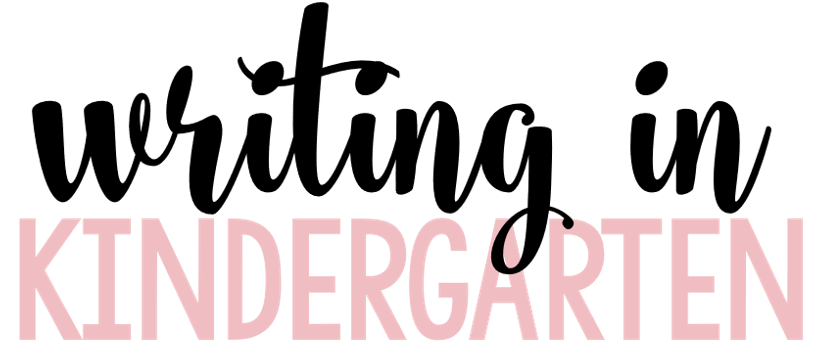
Let’s talk writing! Hey friends! I wanted to take a moment (or a few moments) of your time today to visit about all things WRITING! Writing has always been one of my favorite subjects to teach but for sure not the easiest! I mean when you start the year there is SO MUCH to learn… what a pencil is, how to hold a pencil, how to write with a pencil, what to write, how to stretch words, how to put words into sentences and it goes on from there! Sometimes teaching writing can be intimidating because there are SO many varying opinions. Should you give them a starter? Should you give them a sentence frame? Should they spell words phonetically. Should YOU spell words phonetically when modeling stories and so on!
I finally realized that there is not ONE way to teach writing and if someone tells you that there is only ONE way to do it… then you smile, nod and close your door. All of our students will start at different levels and need different instruction. That brings me to writing instruction and curriculum. There are of course many different writing programs! I was first given the writing lessons from my “big box” curriculum. The top of the lessons started with ALL YEAR, “Students will draw a picture to tell their story. You can dictate the story for them after.” REALLY? I mean yes there will be some kids that start lower and some that still might not get to sentences by the end of kindergarten. However, I’m going to assume that first grade teachers won’t be real happy with me if I only EXPECT my kiddos to color pictures for writing throughout the entire year. That brings me to the opposite end of writing curriculum *cough I’ve shared this program on my own blog before.* I liked this program and it had/has REALLY good parts. The problem is goes TOO fast and leaves out the majority of my students. Sure the program says that the teacher will scaffold by modeling but if the program is too tough for the majority of my class then that means the majority is not receiving the instruction they so deserve.
My first couple of years in the classroom I was constantly changing my kindergarten writing approach due to the above mentioned lack luster big box writing program. One day I would give them a sentence starter. The next day I didn’t. At the end of the year my writers were where they needed to be but there was one thing I noticed… not all the kids enjoyed writing like I enjoyed it! I knew that there was something I had to change! After much research and chatting with colleagues I realized that writing is a work of heart! When the kids are inspired and then able to express that into their kindergarten writing… they too will fall in love with writing! What I didn’t realize those first couple of years was that I was writing and modeling stories that were near and dear to ME. I can’t tell you every story I modeled for them but I am going to guess that a story about four-wheelers or Minecraft wasn’t wasn’t one of those! By turning it over to the kids and having them choose their writing topics, I saw my kids BLOSSOM and year after year my writers fell in love with writing just like me! This is something that the second above mentioned program did but it was SO hard or me to “buy into” that one because it was just not the level of my kiddos. I took that same new passion and worked hard to put it into to easy to read lesson plans! That is when KinderWriting was born! 🙂 In this post, I will share all about my favorite writing lessons I’ve done through the years, give you the freebie templates so you can plug them right into your lessons and I will be sharing all about the writing program I created called, KinderWriting .
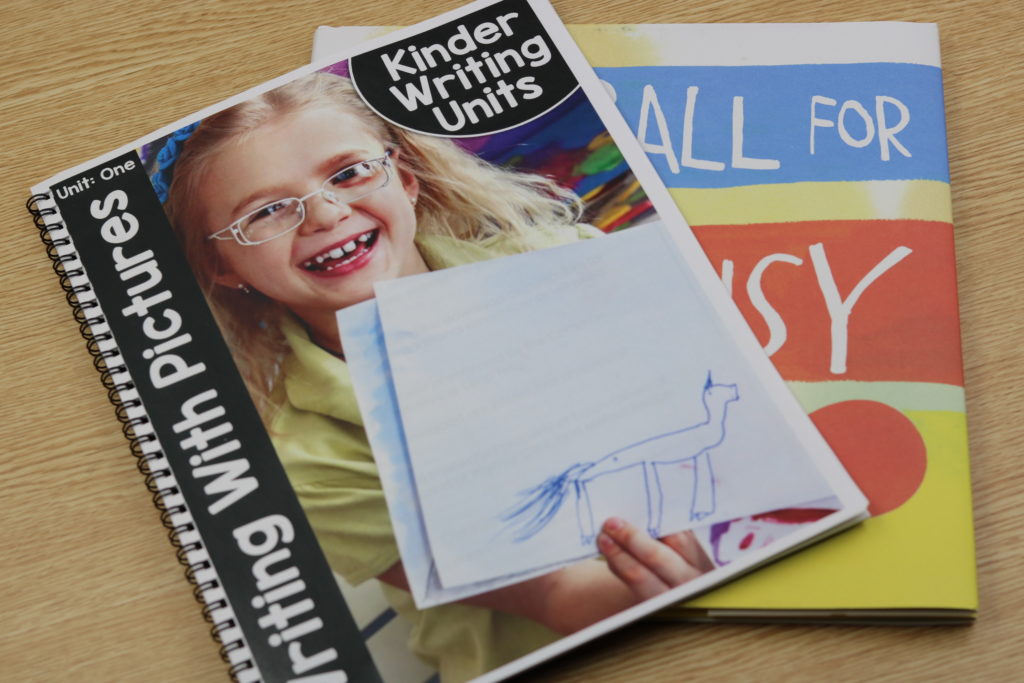
What is KinderWriting?
KinderWriting Curriculum is an engaging, kindergarten, genre-based writing curriculum. KinderWriting encourages young learners to look inward at their endless possibilities as a writer. KinderWriting is based upon nine units: Writing With Pictures, Writing With Sentences, Writing With Stories, Writing With Narrative, Writing With Opinion, Writing With Direction, Writing With Persuasion, Writing With Imagination, and Writing With Information. Each unit is broken down to 20 lessons. The units cover 20 days of academic instruction. The lesson plans have listed unit objectives, “I can” statements, Common Core writing standards and needed mentor texts.
KinderWriting encourages a daily routine of a minilesson, independent writing, and a share time. Each of the lessons in KinderWriting are well thought out for the young writer and spiral back to previous lessons to ensure students are retaining their skills. KinderWriting also includes unit anchor charts, a variety of writing paper, conferring schedules and note sheets, sample writings, student writing goals display, writing rubrics, and step-by-step guides that are made specifically for each unit.
What is included in KinderWritring Curriculum?
-Teacher “simple read” lesson plans. You will not need to rewrite these lesson plans, unless you choose do. If so I have included editable lesson plans. -Each unit I have planned out the; big idea, focus standard, essential questions, and so much more! -Writing paper -Unit posters -Student material -Unit rubrics -Spanish posters included
What about the standards?
Each unit has a focus standard that is based upon the Common Core Standards. Units further into the year will have more than one focus standard. If you teach to a varying set of standards, you can email me for assistance. Thanks!
What Units are Covered?
Unit 1: Writing with Pictures Unit 2: Writing with Sentences Unit 3: Writing with Stories Unit 4: Writing with Narrative Unit 5: Writing with Opinion Unit 6: Writing with Direction Unit 7: Writing with Persuasion Unit 8: Writing with Imagination Unit 9: Writing with Information
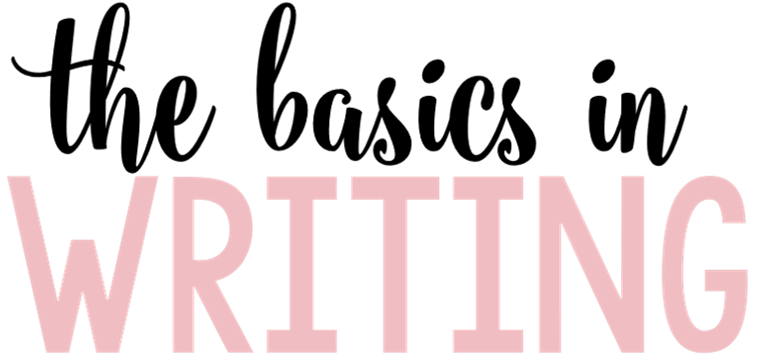
Let’s get started with Unit 1: Writing With Pictures. This unit is all about setting the kiddos up for success! If we jump right into “writing” our kiddos can sometimes feel unsure of themselves. They might worry if their words are spelled correctly or if their pictures are perfect! In unit 1, we introduce students to writing using illustrations! This is big, big, big especially for those lower kiddos! We want them to and NEED them to LOVE writing. We want to set them up with success from the very beginning.
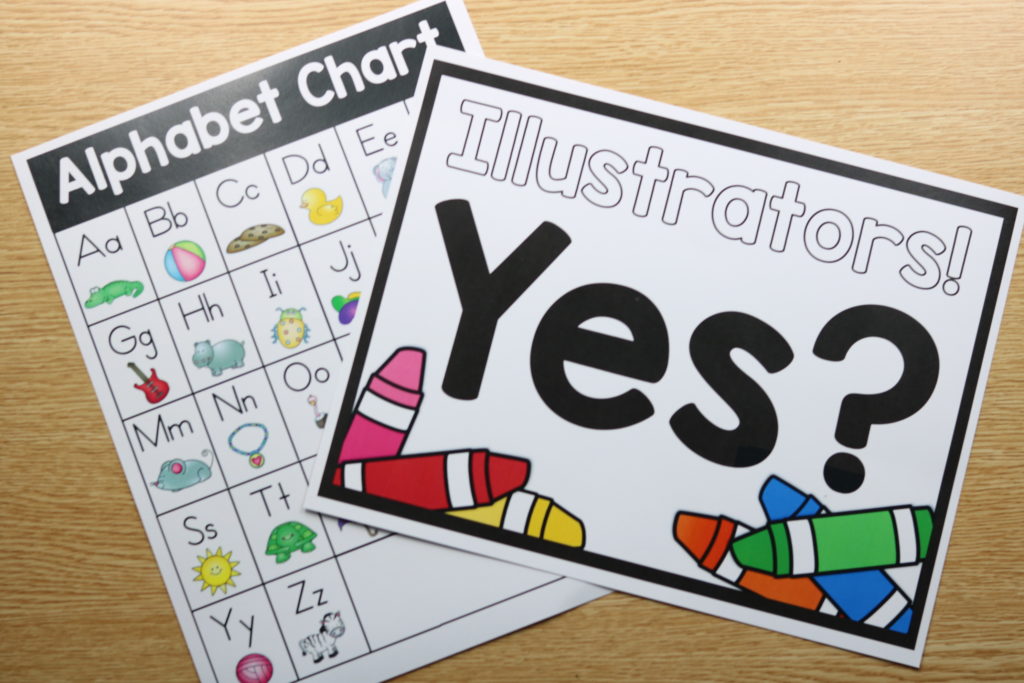
Unit 1: Writing With Pictures
Lesson 1: Illustrators! Yes? Lesson 2: Establishing the Minilesson Lesson 3: Drawing Sticks, Circles, & Boxes Lesson 4: Establishing Independent Write Lesson 5: Share Time Lesson 6: Illustrating the Best I Can Lesson 7: Detailed Pictures Lesson 8: Visualizing My Story Lesson 9: Looking Closely Lesson 10: Setting Goals Lesson 11: What is a Label? Lesson 12: Adding Labels Lesson 13: The Pencil Lesson 14: Labeling for Detail Lesson 15: Ask and Write Lesson 16: Show and Retell Stories Lesson 17: Labeling Your Name Lesson 18: Sticky Conferences Lesson 19: A Picture Book Lesson 20: Celebration
I recently had a Facebook live all about Unit 1! You can listen into that video below! If the video doesn’t load, you can access it HERE !
I have organized my units into a plastic tote! Each unit has a folder in the tote!
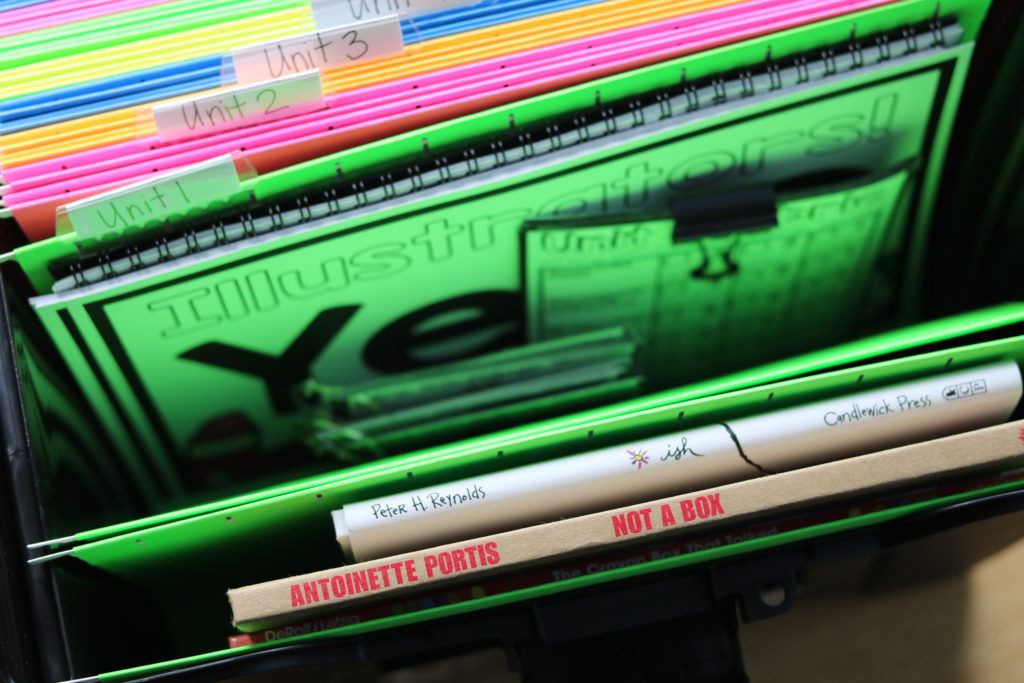
The plans include your needed materials, minilesson and ideas to expand your teaching during the share block!

For independent writing I have offered a variety of writing journals and writing paper! You can choose between landscaped and portrait style! I include lots and lots of styles so that you can decide what works best for your kiddos!
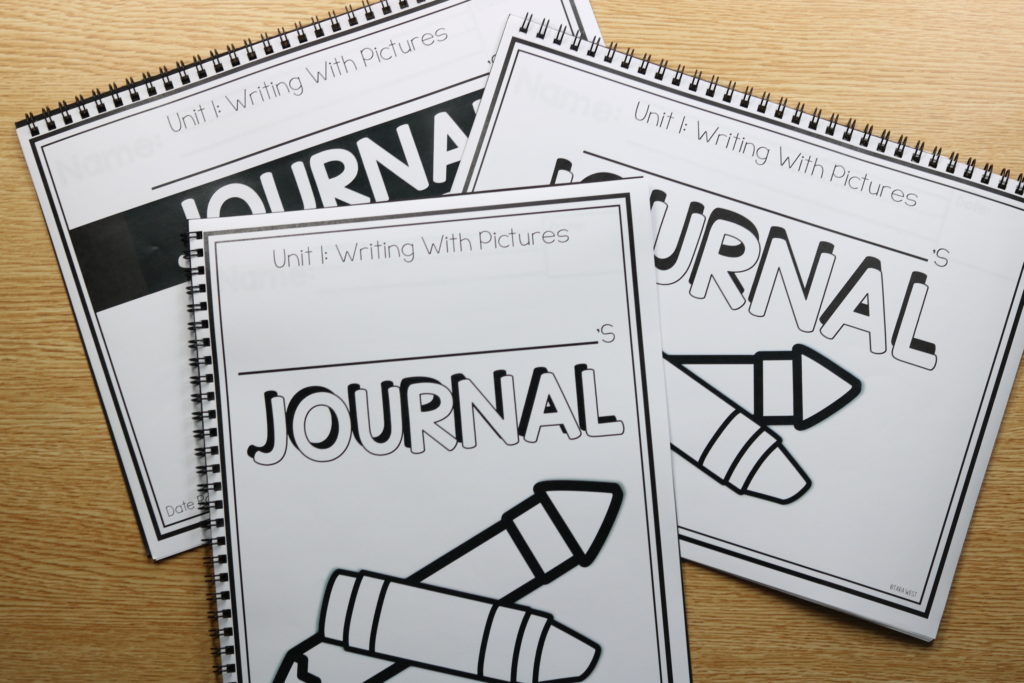
Now let’s take a look at unit 2! In Unit 2 we start to introduce students to writing words and stringing some SIMPLE words together to make sentences!
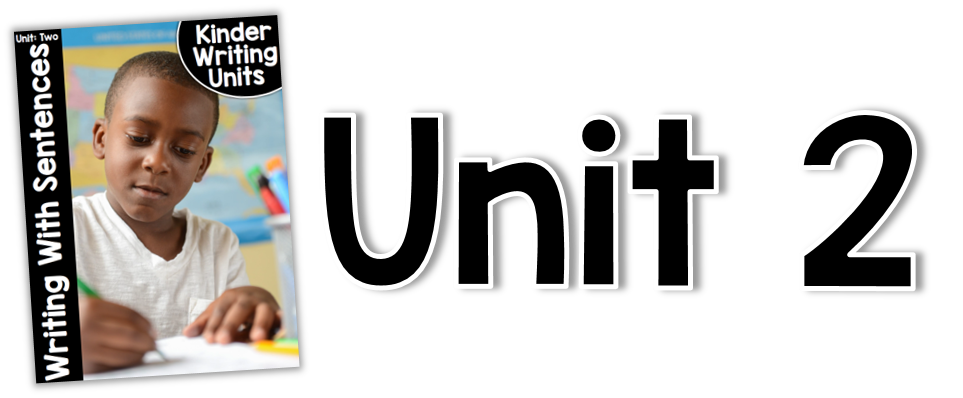
KinderWriting Unit 2 is all about encouraging students to stretch words, write words and then place those words into sentences!
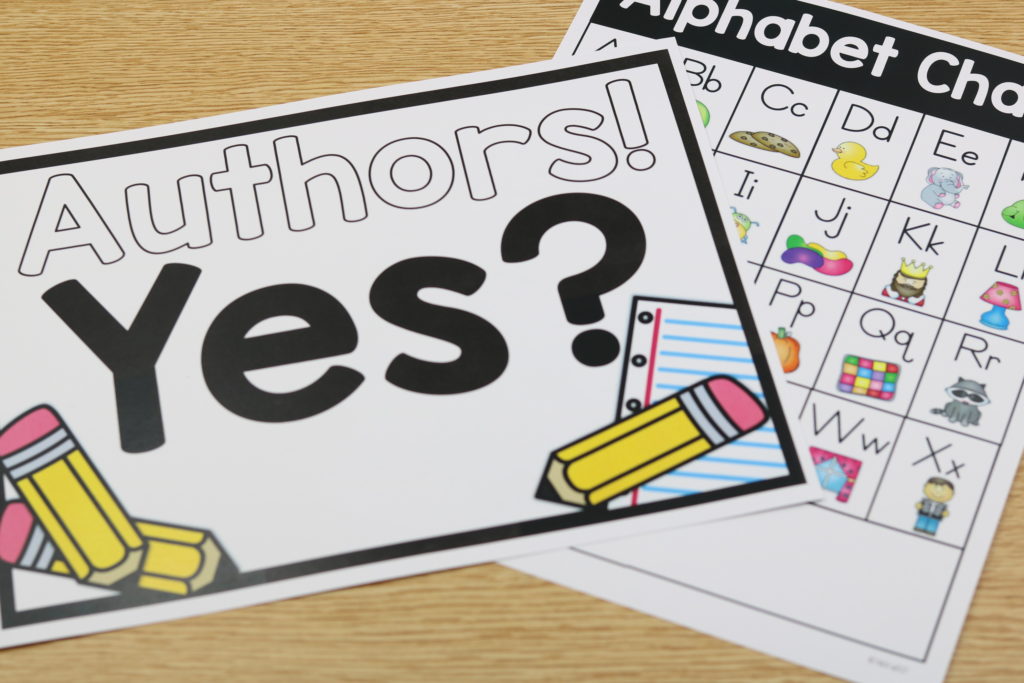
Below is a full listing of the lessons found in Unit 2 of KinderWriting!
Unit 2: Writing With Sentences
Lesson 1: Authors! Yes? Lesson 2: Authors Persevere Lesson 3: Writing Tools- ABC Chart Lesson 4: Making Words Lesson 5: Writers Make Mistakes Lesson 6: Stretching Sounds Lesson 7: Stretching More Sounds Lesson 8: Writing Tools- Sight Word Chart Lesson 9: Color Words Lesson 10: Letters vs. Words Lesson 11: Conferring and Writing Partnerships Lesson 12: Speech Bubbles and Emotion Lesson 13: Using the Room Lesson 14: Are You Really Done? Lesson 15: Capitals Lesson 16: Spacing Lesson 17: Punctuation Lesson 18: Words Make Sentences Lesson 19: Writing Storybooks Lesson 20: Sharing Storybooks
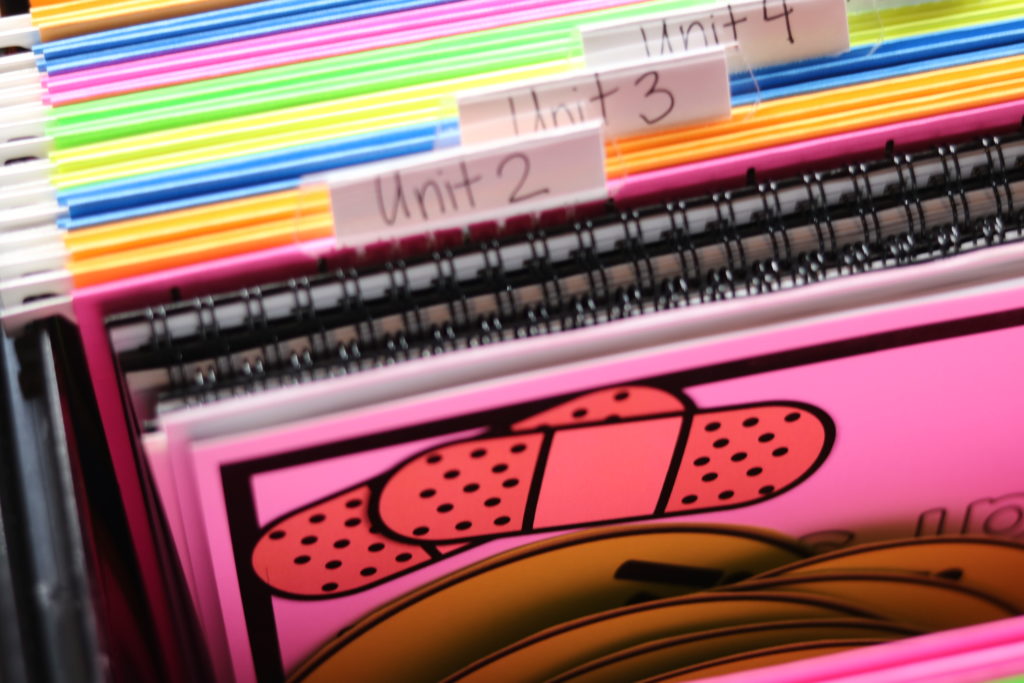
Also in the folder is the unit spiral bound lessons, unit posters and the student mini poster rings!
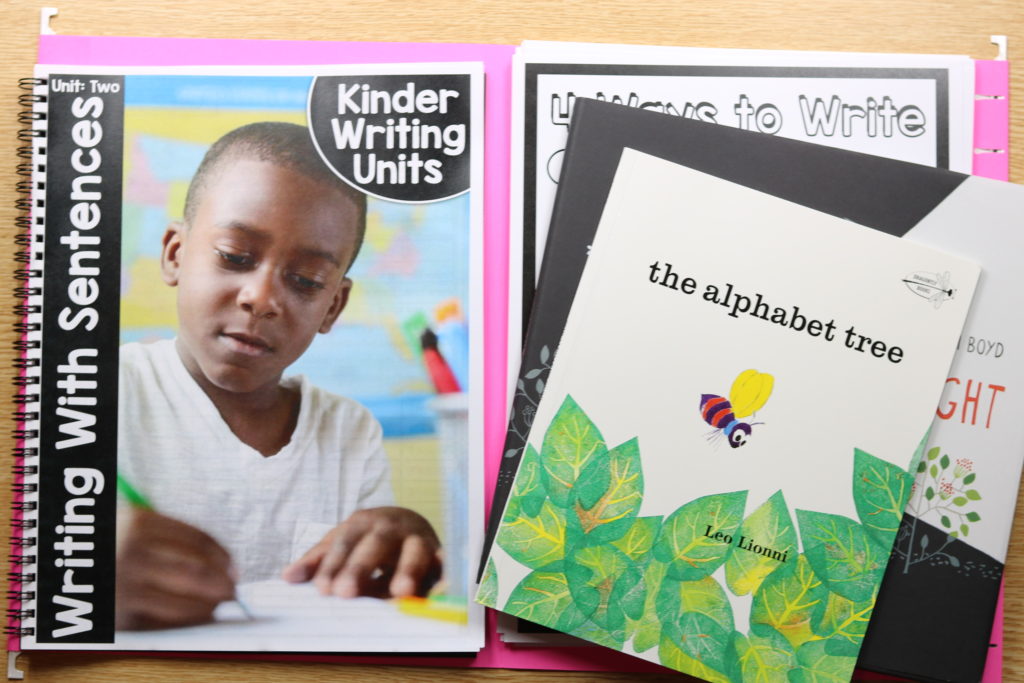
The student resource rings are perfect for the kiddos to keep in their pencil boxes! You can also use them back at your guided reading table!
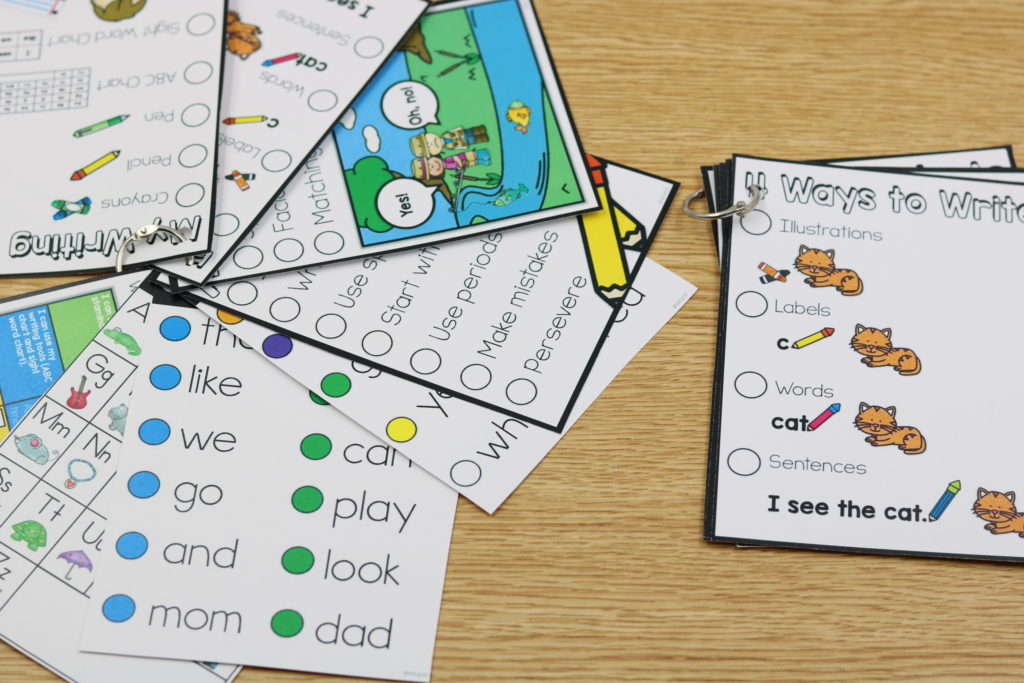
We will use the mentor text, The Alphabet Tree, and build words!
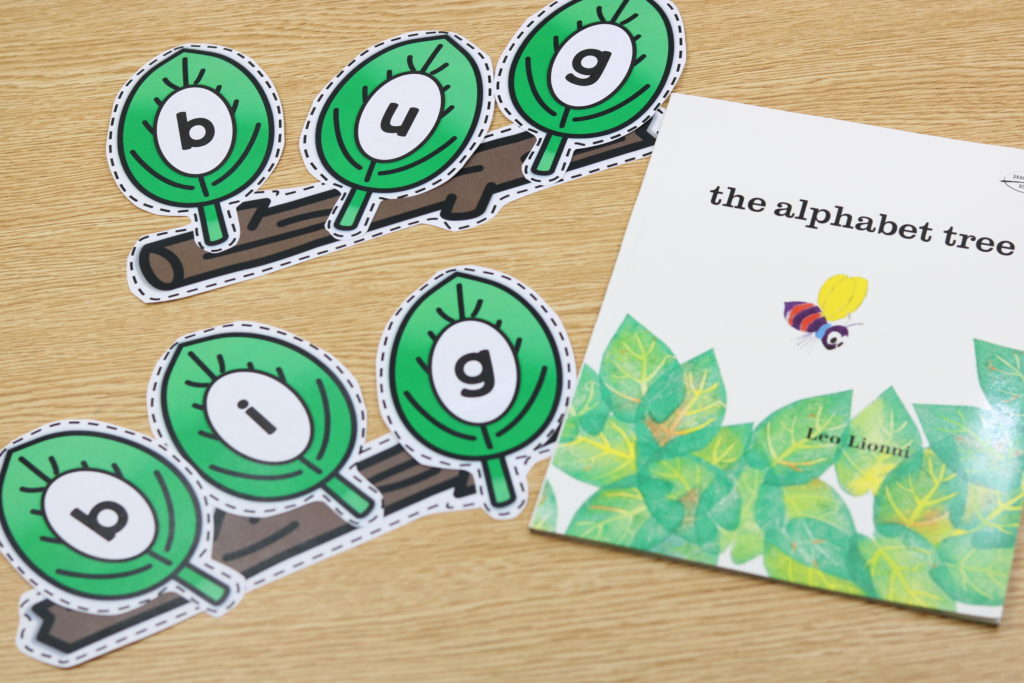
Unit 3: Writing With Stories
Lesson 1: Storytellers! Yes? Lesson 2: Authors Write About What They Love Lesson 3: Authors Write About What They Can Do Lesson 4: Authors Write About What They Know Lesson 5: Authors Write About The Past Lesson 6: Mechanics Matter Lesson 7: Names and Places Use Capitals Lesson 8: Tap Out the Story Lesson 9: Powerful Punctuation Lesson 10: Ask More With Writing Partners Lesson 11: A 5 W’s Story Lesson 12: Topics are Everywhere Lesson 13: Books are Stories Lesson 14: Places are Stories Lesson 15: Colors are Stories Lesson 16: Elapsed Time Lesson 17: Adding On Lesson 18: Illustrations Tell Stories Lesson 19: Storytelling Booklets Lesson 20: Sharing Storybooks
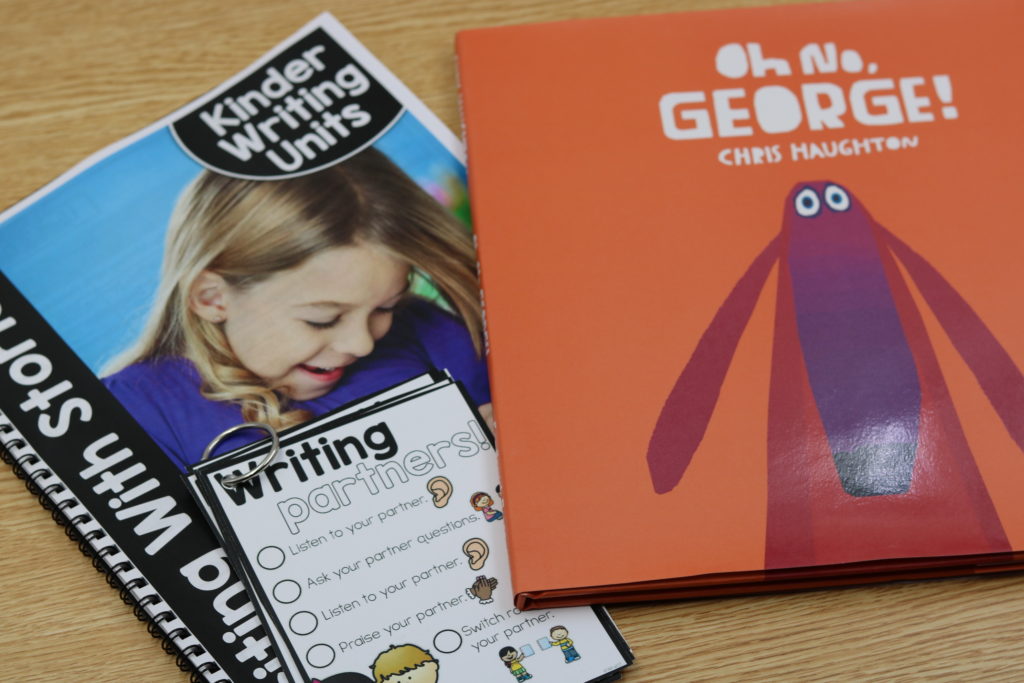
The big push in Unit 3 is to help those that struggle with generating their own witting topic each day! We want them to be confident in realizing that there are stories ALL AROUND US! We use included pictures to help students generate writing ideas.
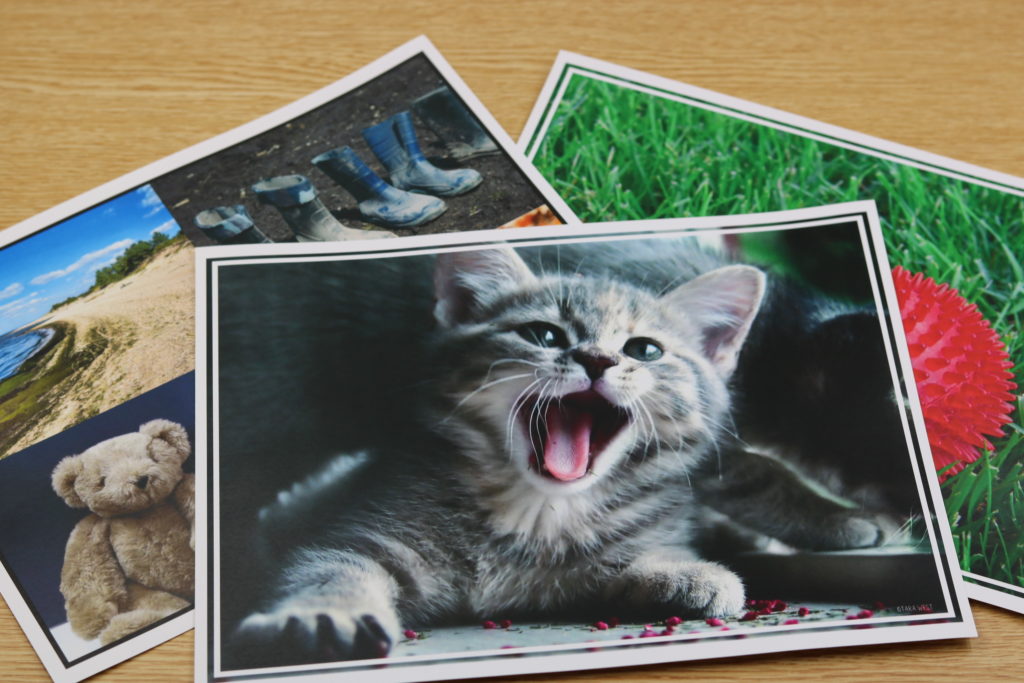
We also teach them about using color as a writing inspiration!
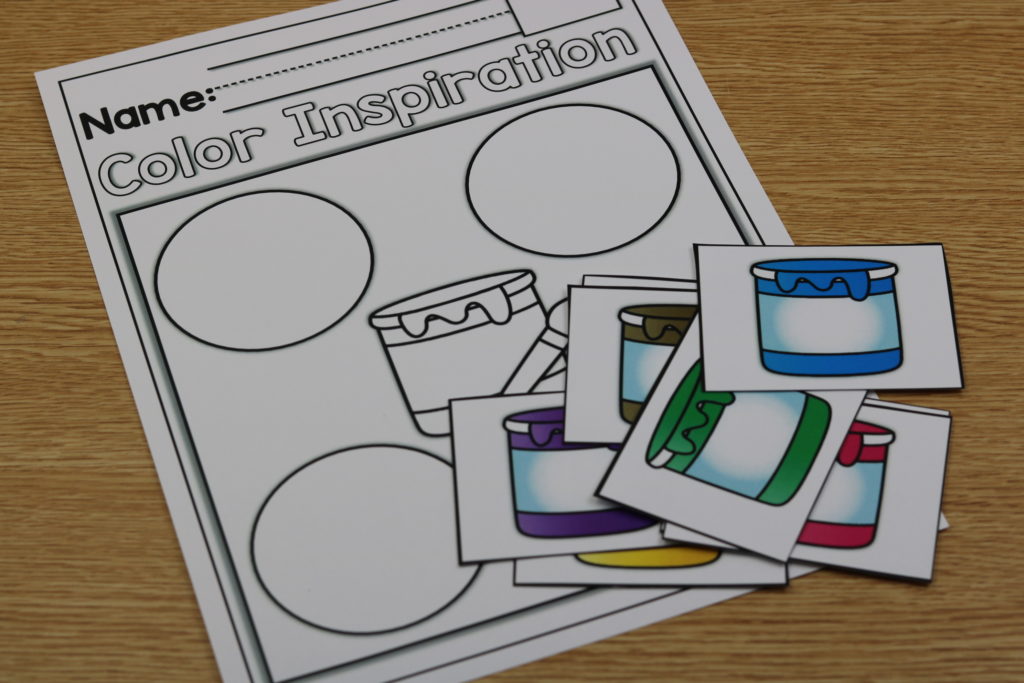
What do writers write about? Well, the write about things they love, things they know, things they can do and things from the past!
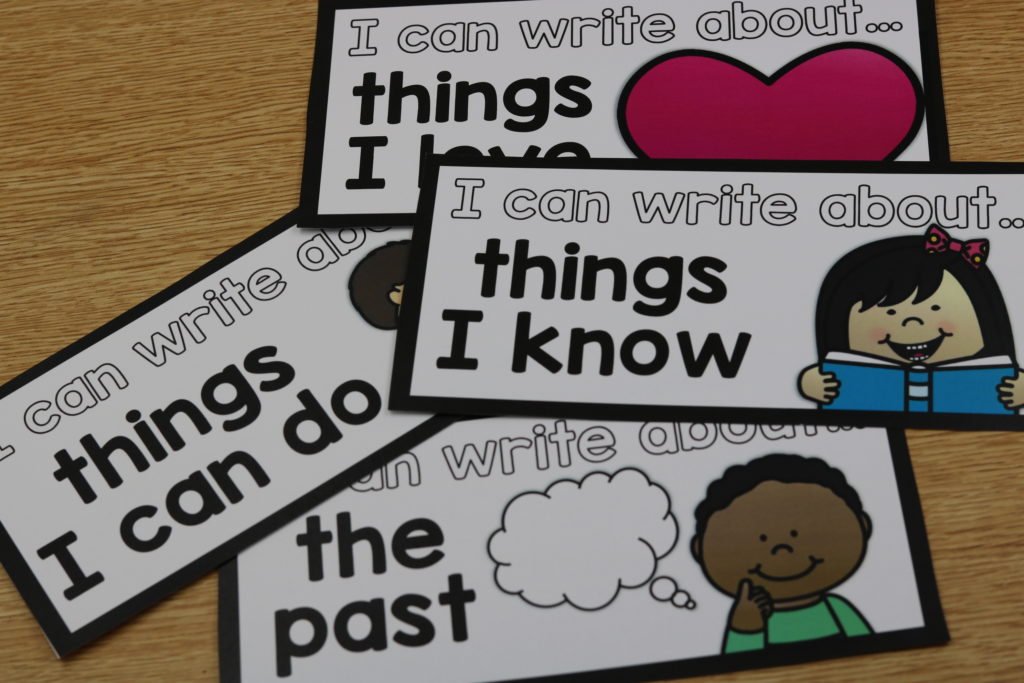
We work on STRETCHING those words!
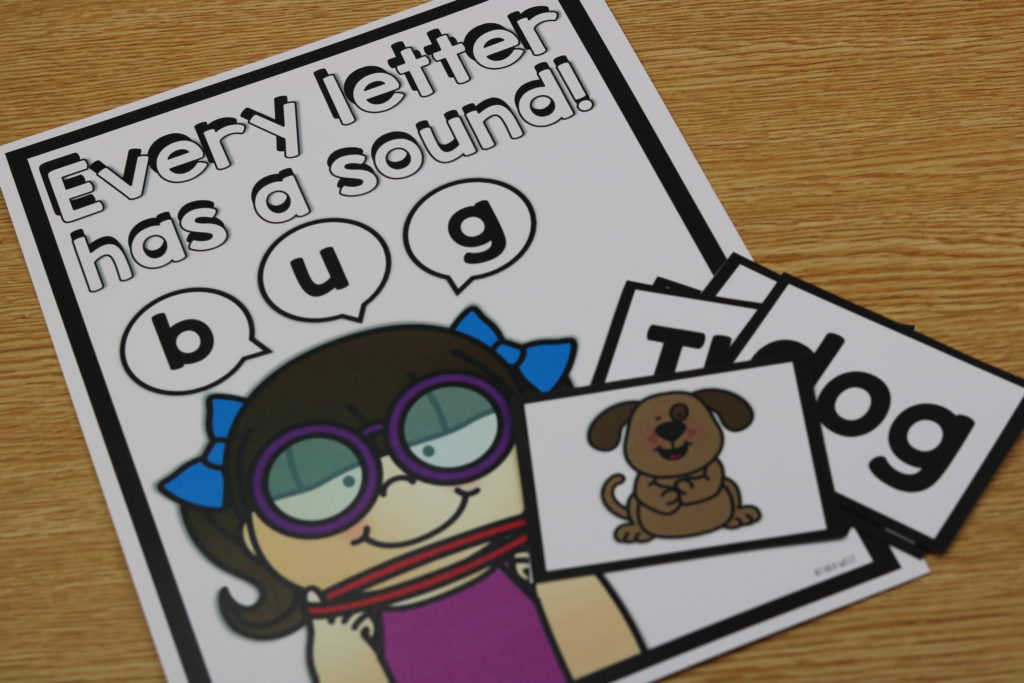
In unit 3, we become mechanics so we can work on all of those important skills, too!

Establishing writing goals are vital!
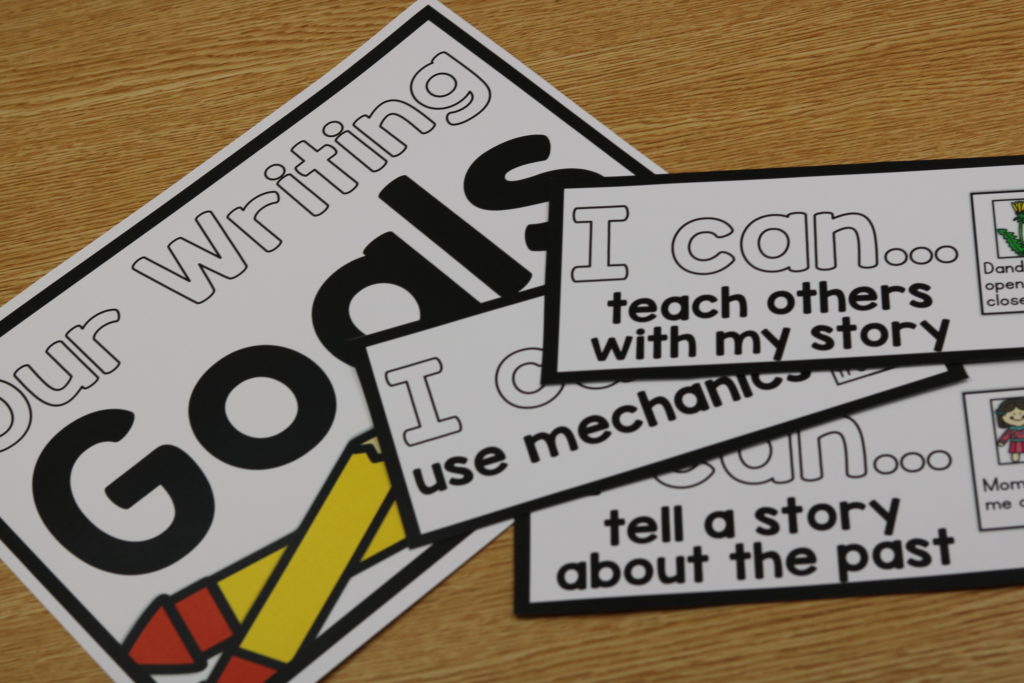
In each unit I supply you with a lot of learning posters to present to the kiddos!
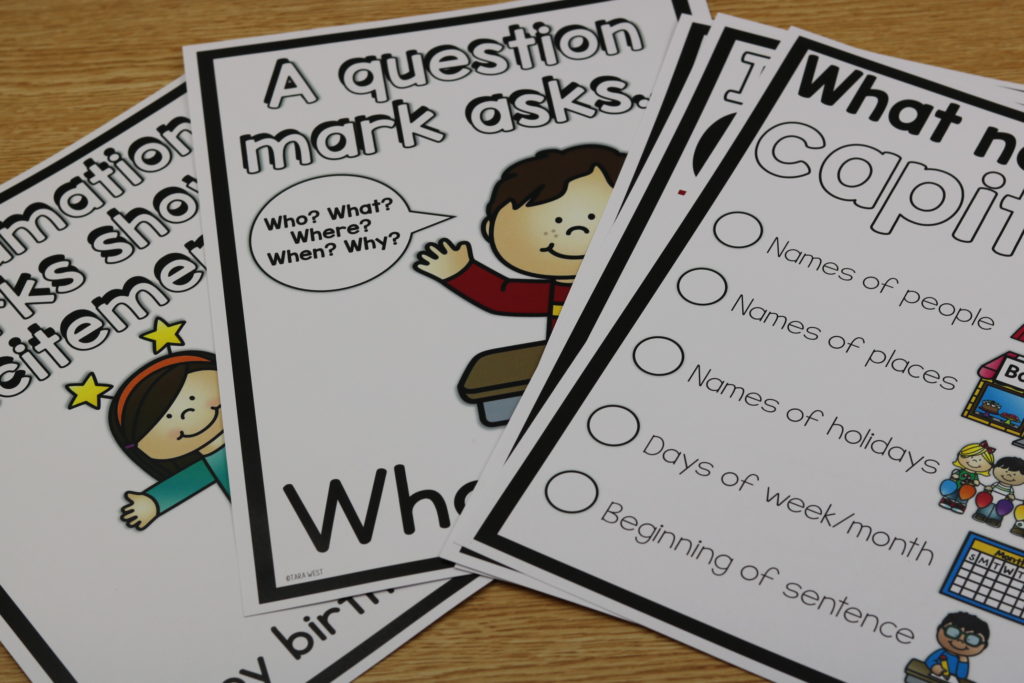
We can’t forget the rubrics in each unit!
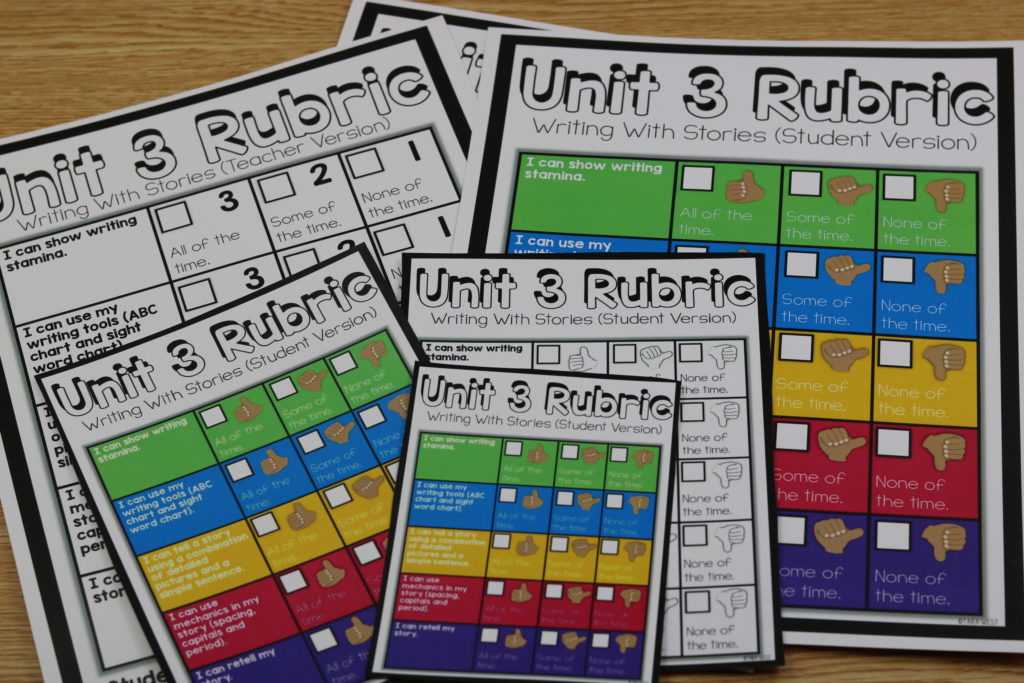
The student resource rings!
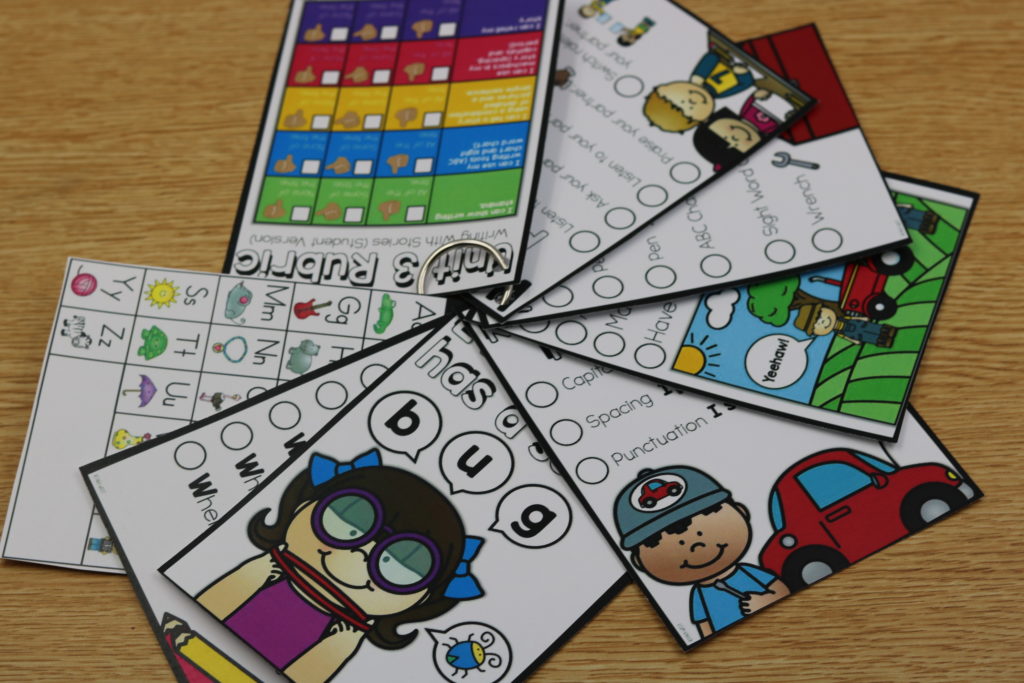
Unit 3 of KinderWriting wraps up the “basics” units! Units 4-9 are genre-based writing units! Let’s jump into those now!
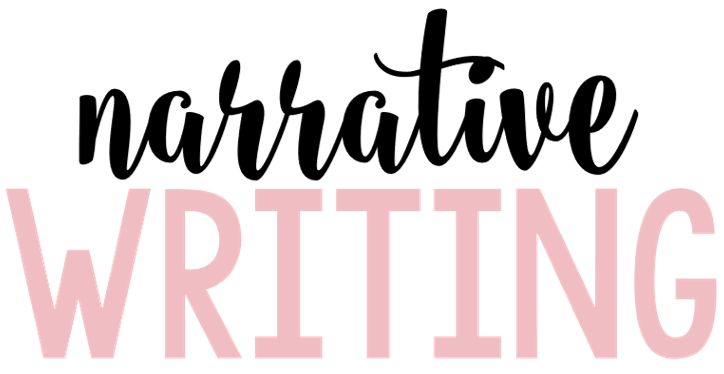
I like to play ninjas.
Also, here is the story booklet we used for this lesson! You can grab yours for free below!
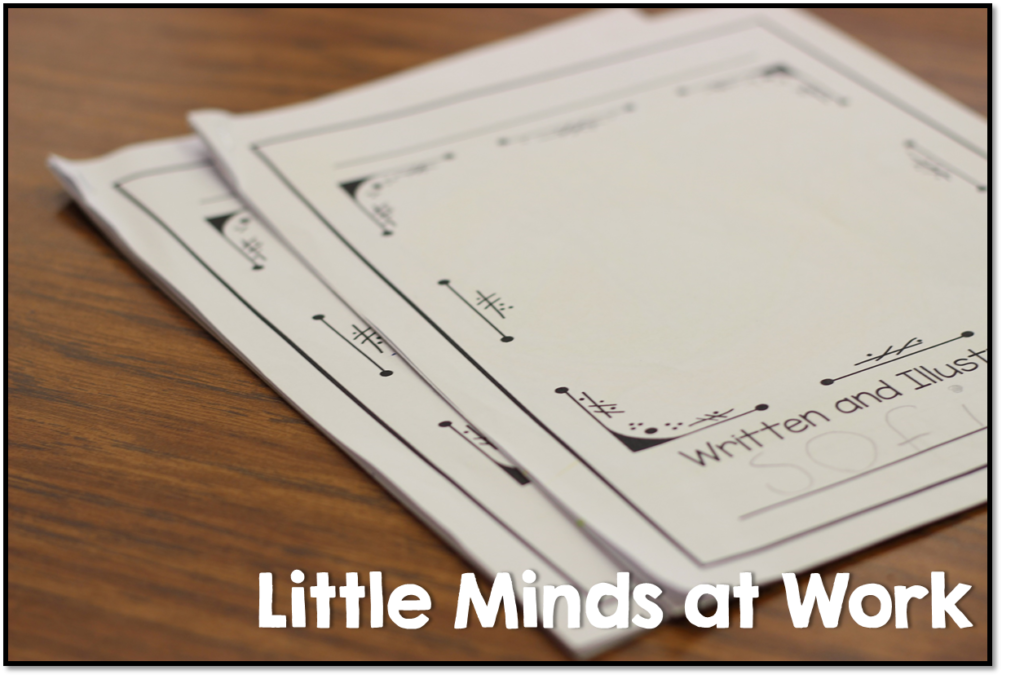
Now let’s talk about Unit 4 of KinderWriting ! Unit 4 is all about Narrative writing! In unit 4, we take take the kiddos through the entire Narrative writing process! There is a week that we spend on mechanics and adding in adjectives/verbs into our stories as well!
Lesson 1: Narrators! Yes? Lesson 2: Narratives Use Words Like I, Me and My Lesson 3: Narratives Have a Setting Lesson 4: Narratives Have a Problem & Solution Lesson 5: Narratives Have a BME Lesson 6: Starting With a Hook Lesson 7: Ending With Feeling Lesson 8: Sequential Words Lesson 9: “Zoom” In Moments Lesson 10: Using Details Lesson 11: Writing With the 5 Senses Lesson 12: Adding in Adjectives Lesson 13: Adding in Verbs Lesson 14: Words Have Families Lesson 15: Mechanics Lesson 16: Narrative Booklets Lesson 17: Writing With a Rubric Lesson 18: Writing Process- Draft Lesson 19: Writing Process- Polish Lesson 20: Writing Process- Publish
Below is a look at the mentor texts for this unit! You can see there are three specific to narrative writing and three for the mechanics focus!
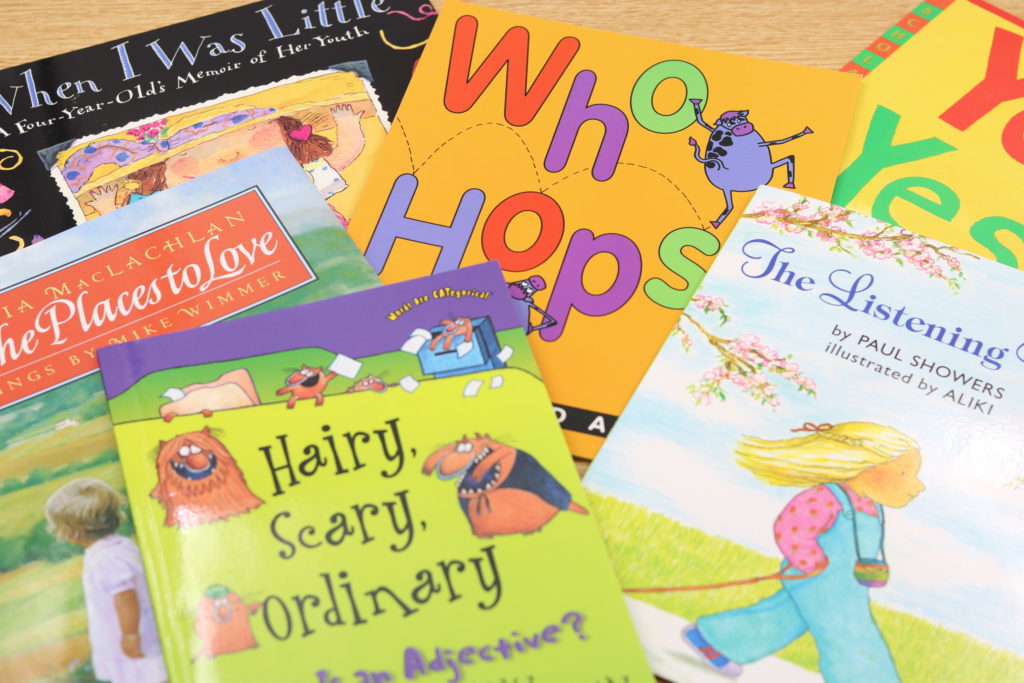
In Unit 4, we discuss all of the parts of a narrative story!
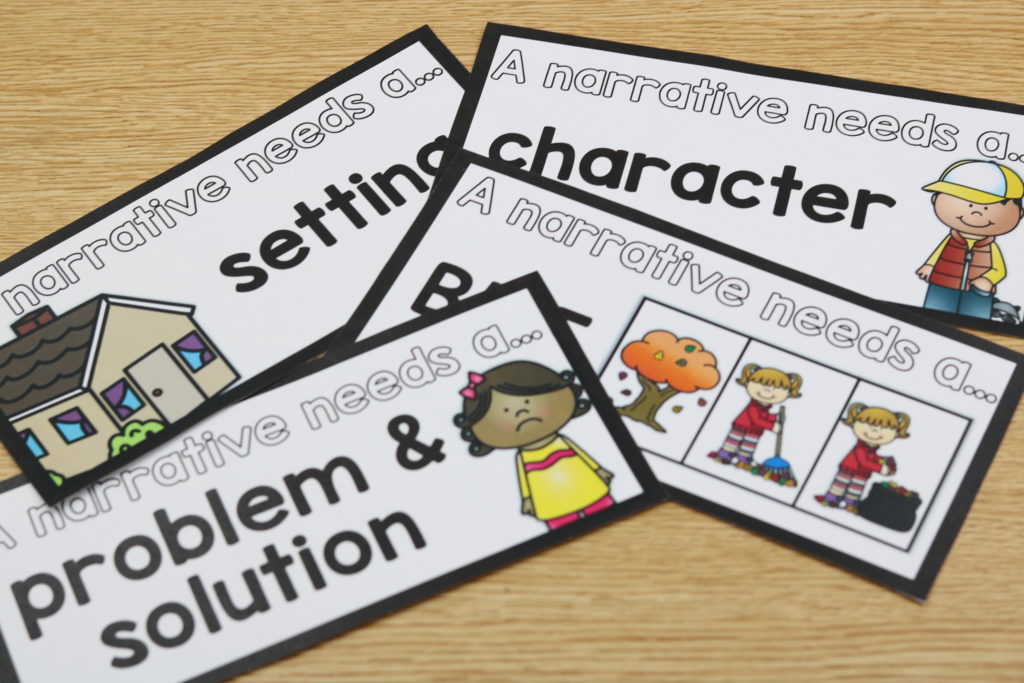
Unit 4 posters to teach all of the important tasks!
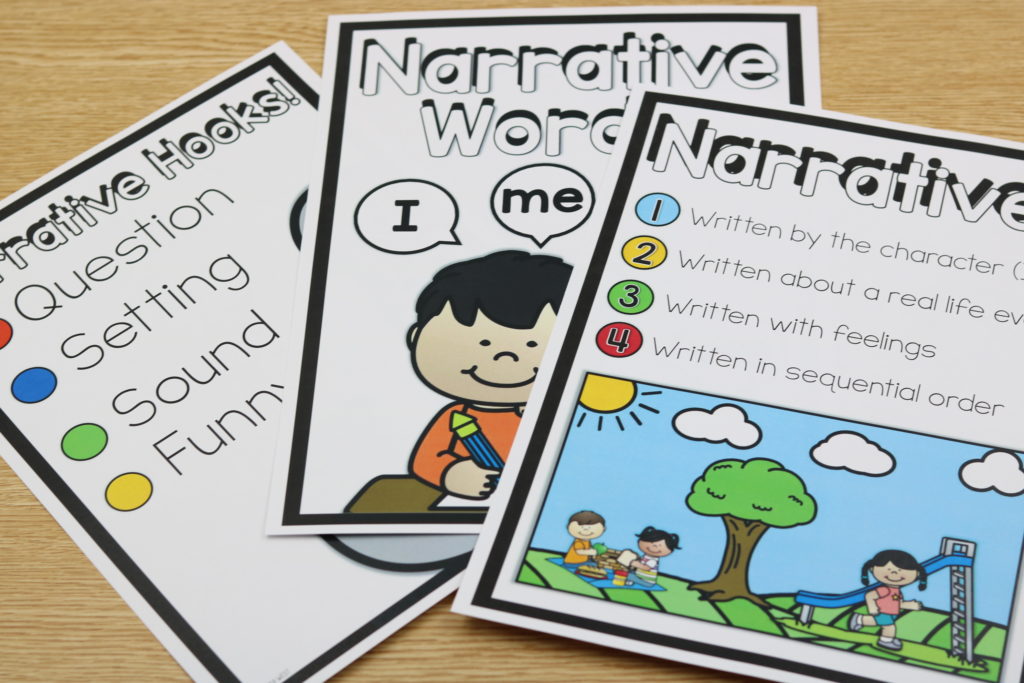
Unit 4 rubrics!
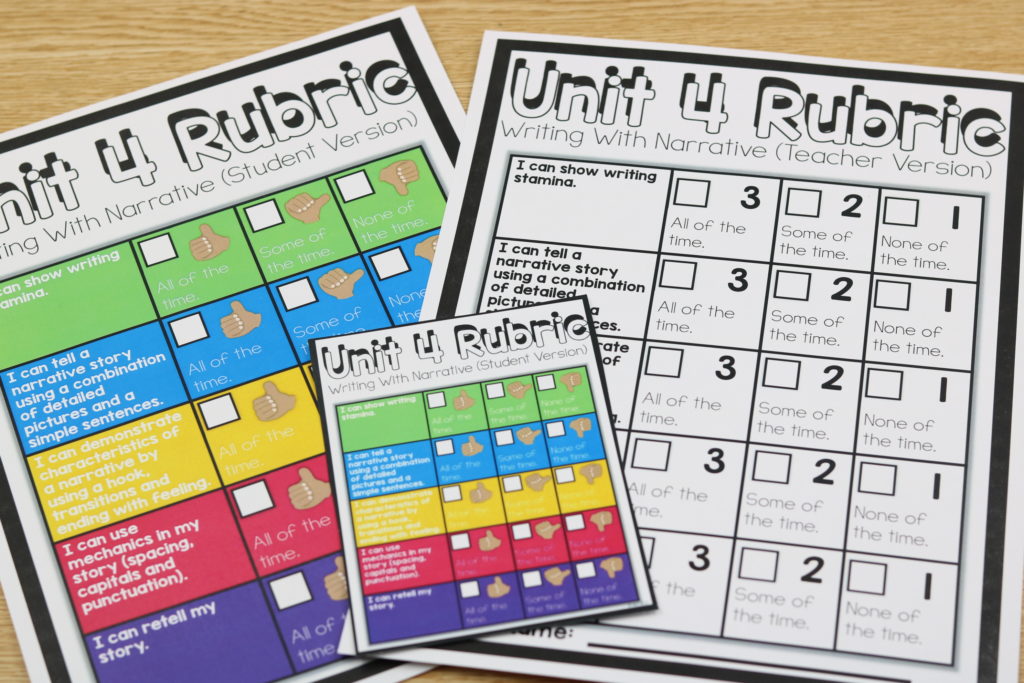
Student resource rings!
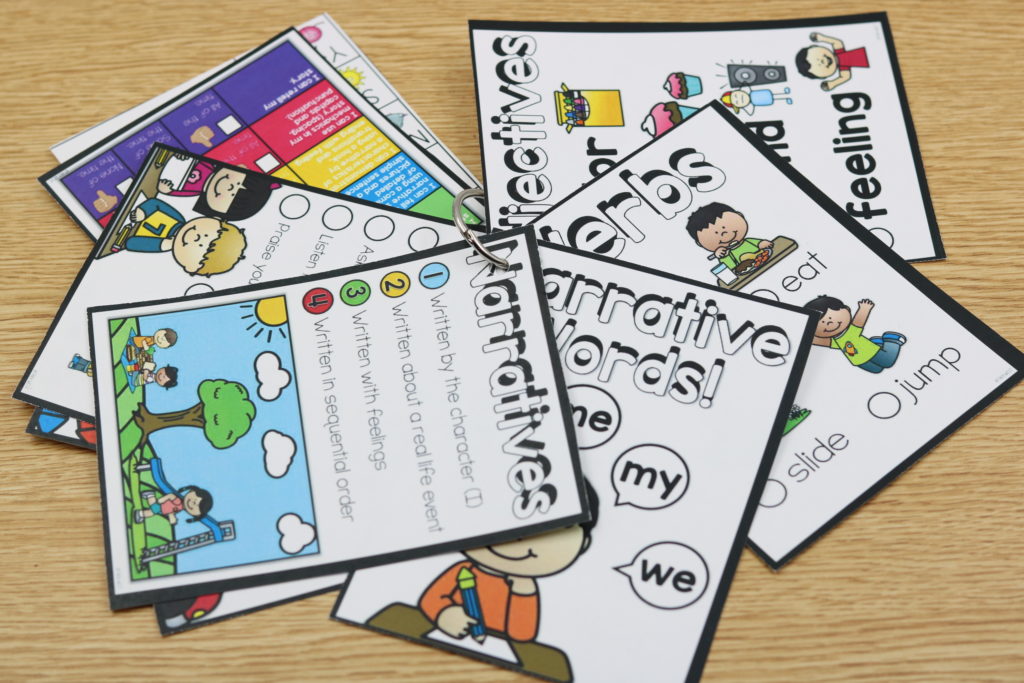
Unit 4 writing goals!
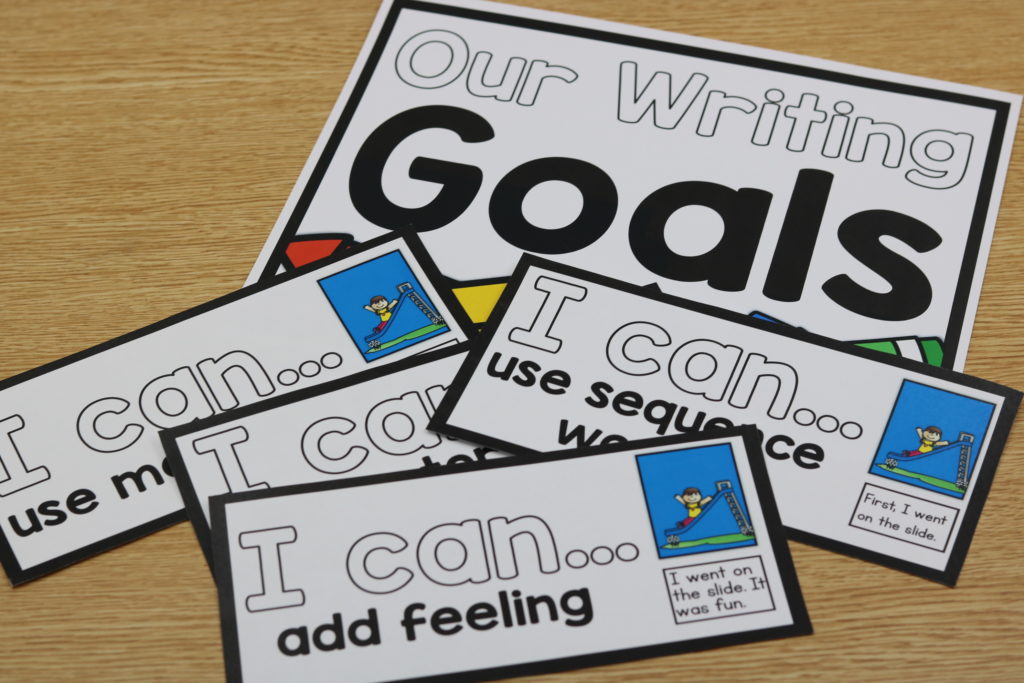
Now let’s talk opinion writing! I will discuss first some of my favorite opinion writing lessons over the years and then jump into opinion writing from KinderWriting! I love introducing the kiddos to the big word for our opinion writing, because! I always give a big hoopla over making sure we pronounce it correctly! This might not be an issue in other parts of the country, but here in Missouri it’s usually pronounced as “becuz!” So, after this talk they are correcting me the rest of the year if my pronunciation isn’t spot on! We start with some simple opinion writings! We also talked a lot about what an opinion is and how it’s okay to have a different opinion then our friends!
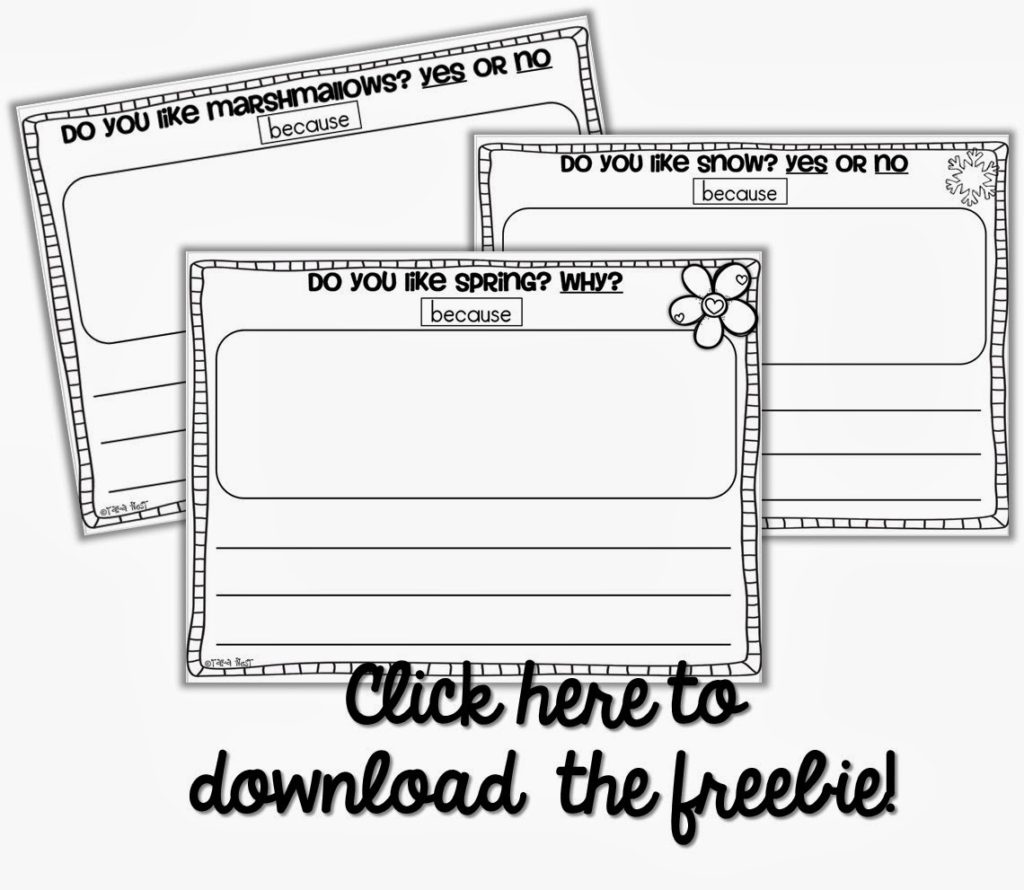
We also write opinions on if we like the tooth fairy best or Santa Claus! Below students wrote their thoughts in the opinion graphic organizer! {Download the freebie below}
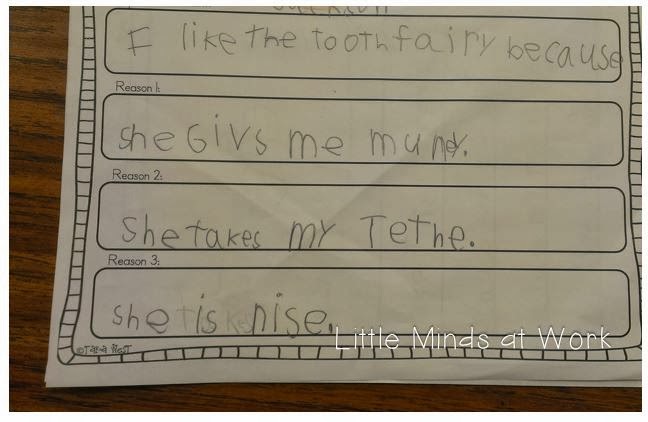
Let’s talk KinderWriting Unit 5 which is all about opinion writing!
Lesson 1: Opinionators! Yes? Lesson 2: Giving Opinions Lesson 3: Fact vs. Opinion Lesson 4: Opinions Around Us Lesson 5: Opinions on the Spot Lesson 6: Using the Word Because Lesson 7: Giving Two Reasons Lesson 8: Using a Mentor Text Lesson 9: Opinion Starters Lesson 10: Defending an Opinion Lesson 11: Using the Word Wall Lesson 12: Spacing for Our Readers Lesson 13: Setting Letters on the Line Lesson 14: Reversals and Handwriting Lesson 15: Sounds in Words Lesson 16: Sharing Opinions Lesson 17: Writing With a Rubric Lesson 18: Writing Process- Draft Lesson 19: Writing Process- Polish Lesson 20: Writing Process- Publish
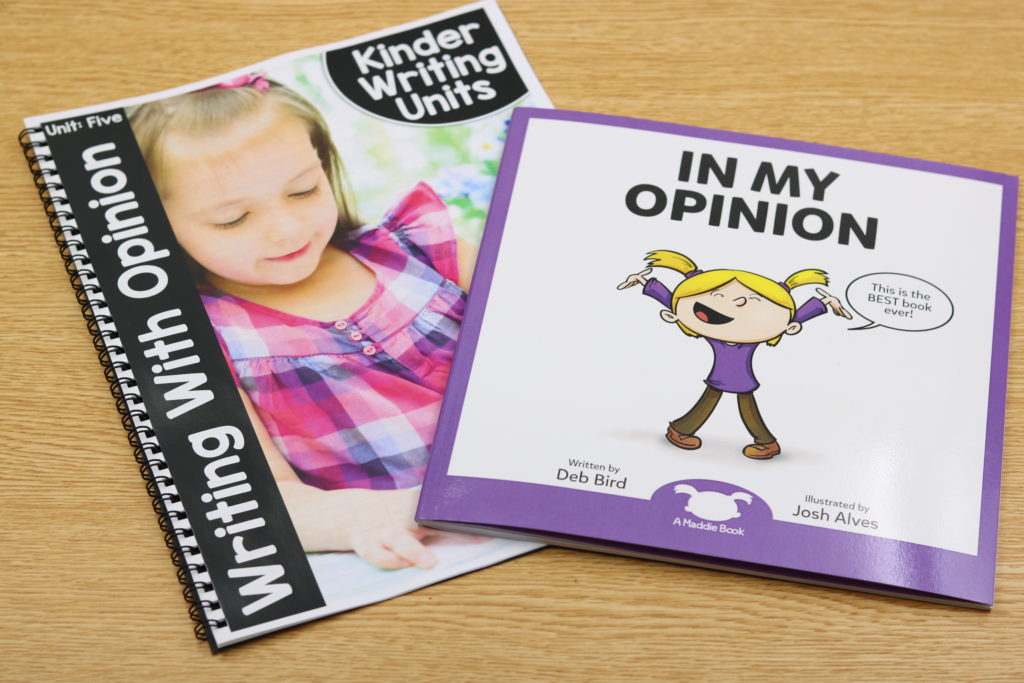
Unit 5 writing posters!
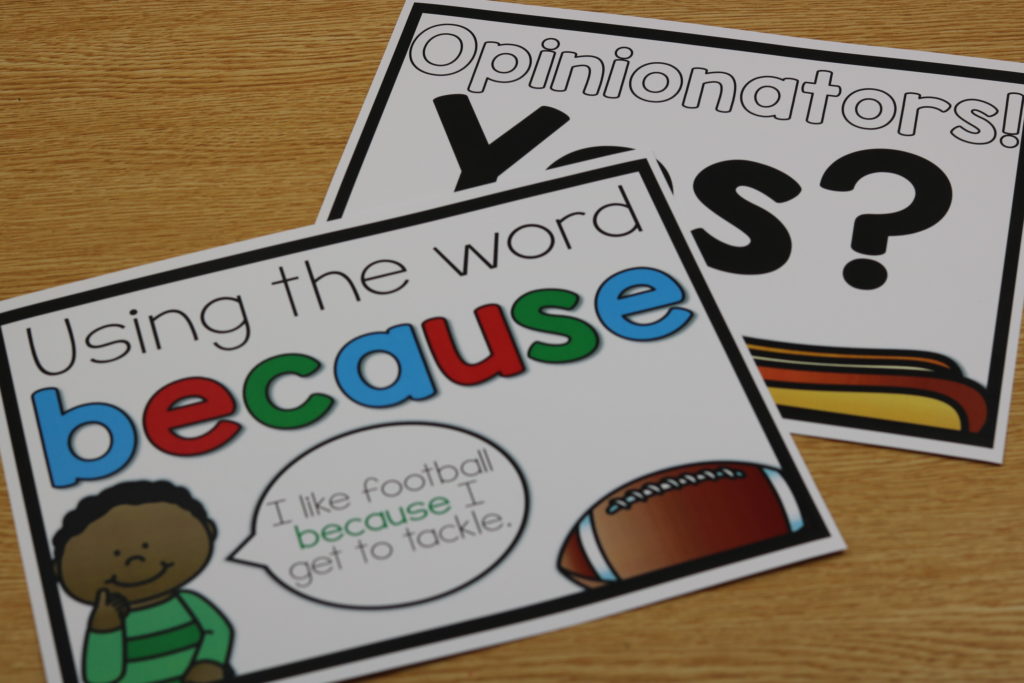
Unit 5 rubrics!
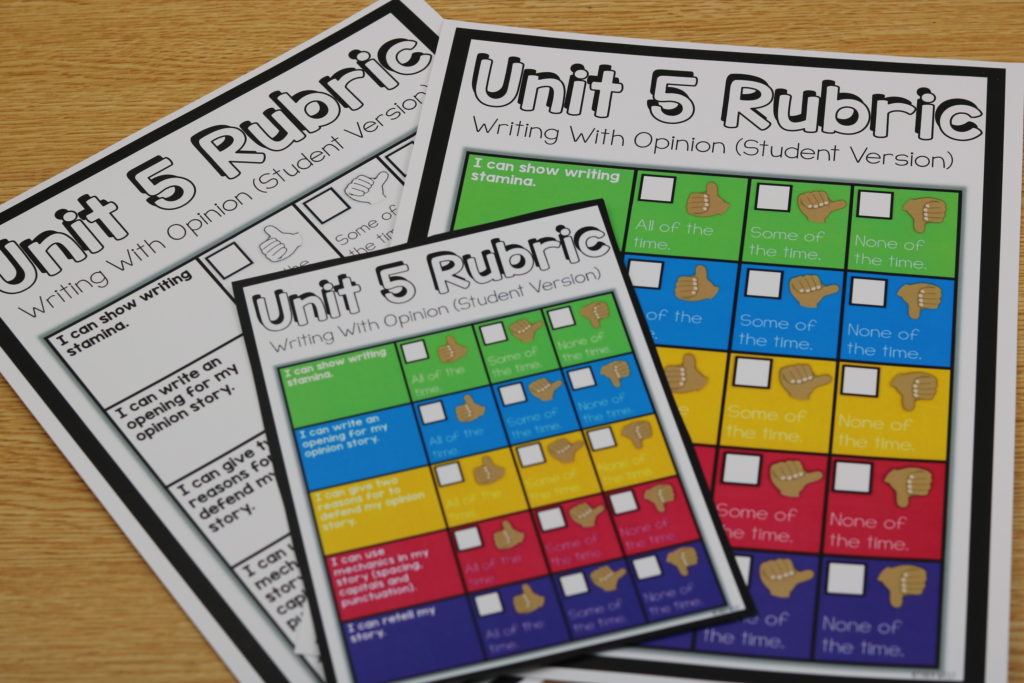
Writing goals are a must!
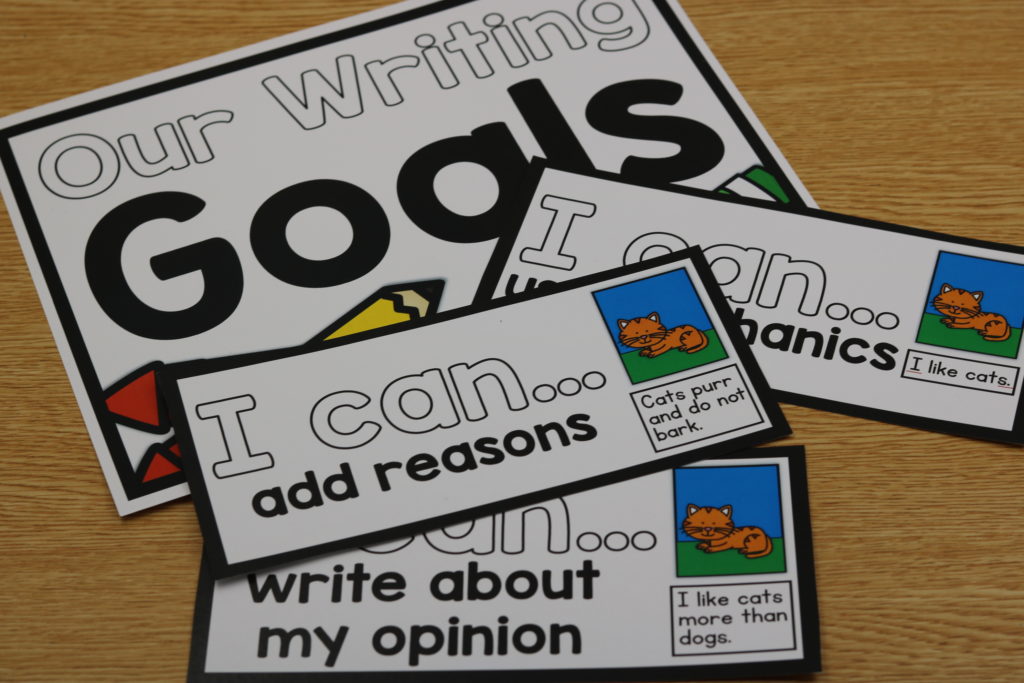
In unit 5, we work on fact vs. opinion!
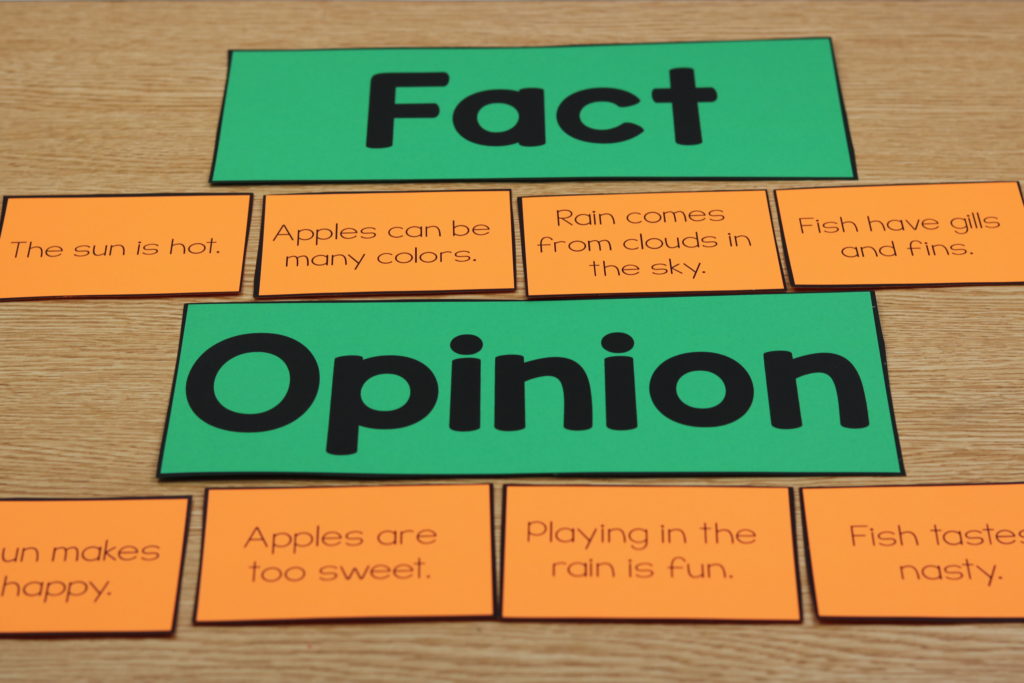
Unit 6-9 (Procedural writing, persuasive writing, fiction writing, informational writing) are also part of the KinderWriting bundle!
A note about pricing!
Snag this bundle for 25% OFF . Each of the writing units sells for $12 each, a total of $108. You can view KinderWriting HERE or clicking below!
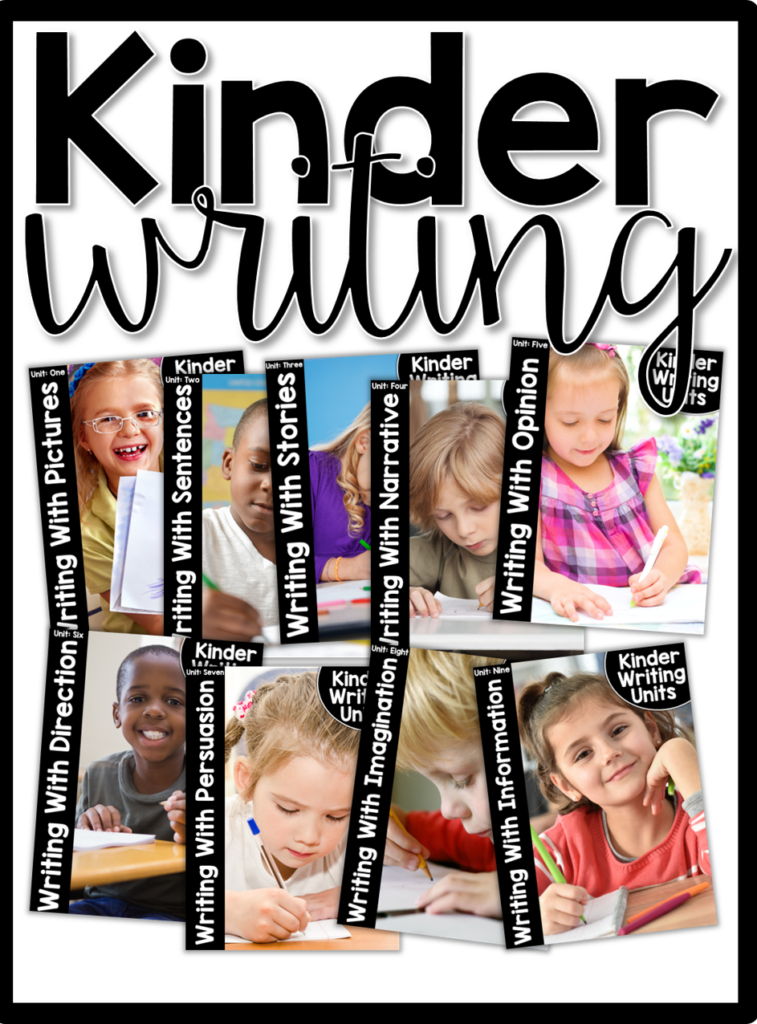
Now let’s talk letter writing! Depending on your district/standards, you might also be required to teach letter writing!

Now let’s talk a little about assisted writing! I like to use assisted writing sheets mainly during independent writing times! This would be for example during daily five work on writing! My kiddos can’t get enough of my writing story starters! I use them in their work on writing folders and as a choice for early finishers! I have found these story starters to work absolute wonders in my classroom! What I love about the story starters the most is their ability to assist the students when working independently. Students WANT to work without the assistance of their teacher, but sometimes they just don’t know how. This can be especially true in writing. Students of course would love to write a story of their own, but they at times don’t know what to write about. The story starters take that out of the equation. Students simply look at the picture given to them and start to write their story!
I like the spider and web.
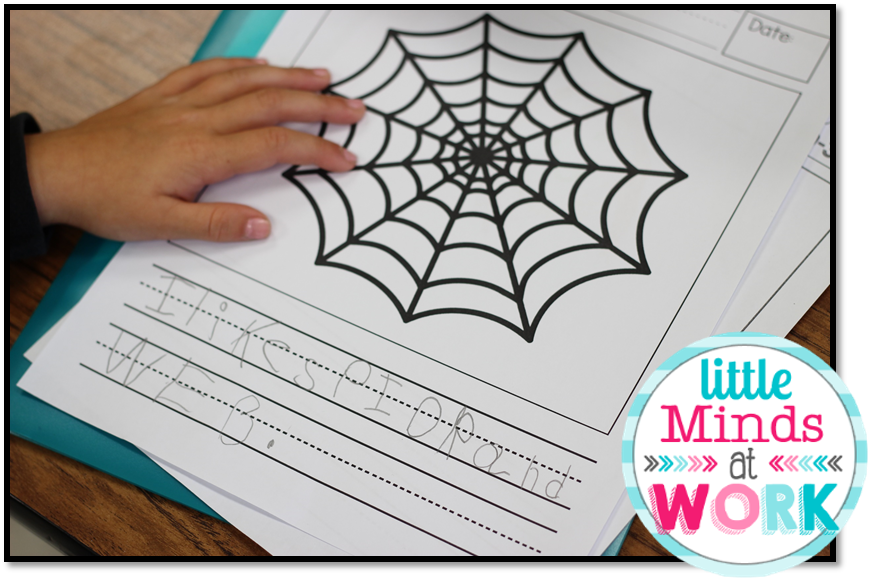
You can download an additional set of freebie writing posters HERE or clicking the images below!
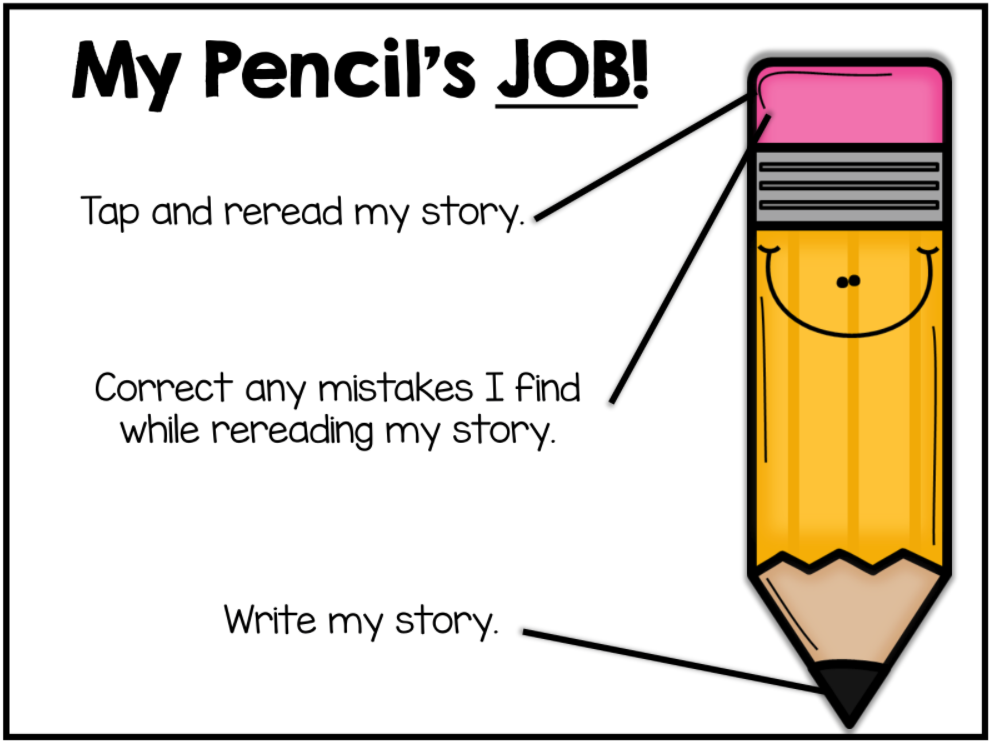
Well I hope you enjoyed these freebies! Leave me some love if you were able to use any of these and feel free to pass them along! 🙂
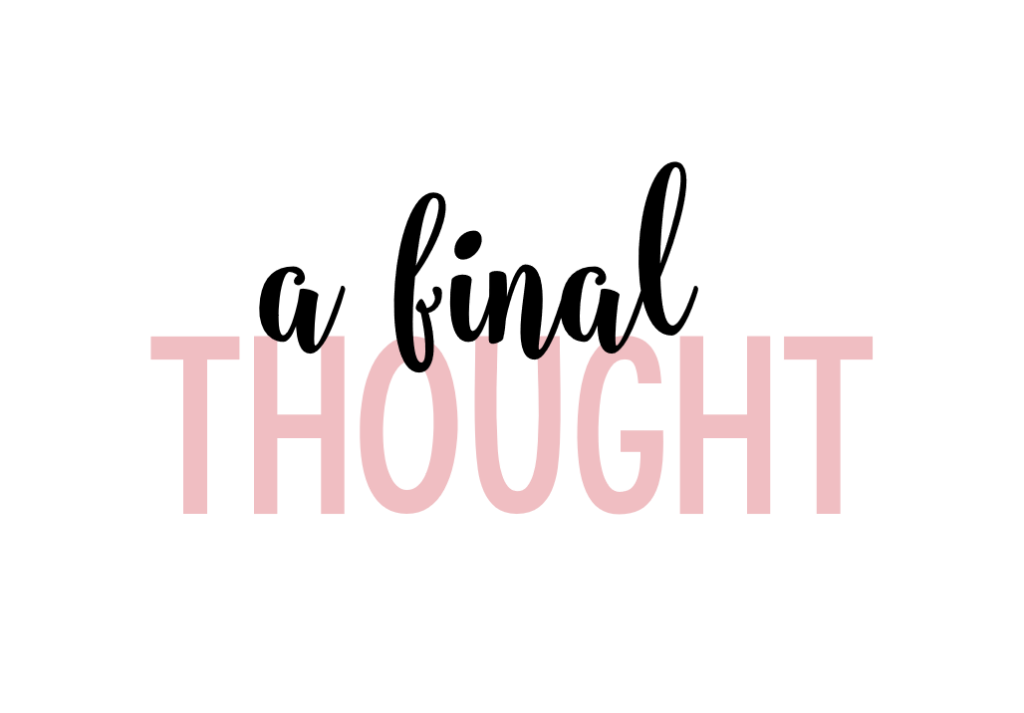
If you’re unsure if KinderWriting would work in your classroom, I recommended that you take a moment to read TEACHER feedback here ! There is no one that will tell you more accurately than fellow teachers!
Snag this bundle for 25% OFF . Each of the writing units sells for $12 each, a total of $108. You can view KinderWriting HERE or clicking below!
Do you teach first grade? Snag the FirstieWriting curriculum HERE .
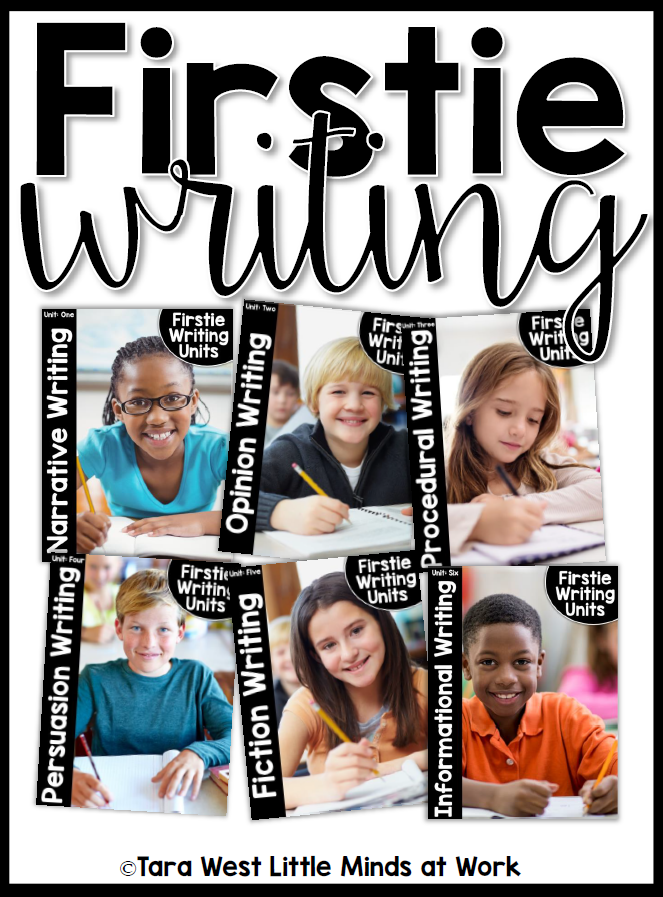
Leave a Reply Cancel reply
You must be logged in to post a comment.
- How To Get Pregnant
- Infertility
- Pregnancy Week by Week
- Second Pregnancy
- Giving Birth
- Post Pregnancy
- Breastfeeding
- Development
- Browse Names
- Play & Activities
- Coloring Pages
- Food & Nutrition
- Health & Fitness
- Style & Beauty Care
- Collaborations
- New Parents
- Single Parenting
- Relationships
- Baby Eye Color Calculator
- Online Pregnancy Test
- Chinese Gender Predictor
- Implantation Calculator
- hCG Calculator
- Period Calculator
- ovulation calculator
- pregnancy due date calculator
- Child Height Predictor
- Pregnancy Weight Gain Calculator
- Breast Milk Calculator
- Child Growth Percentile Calculator
- Baby Cost Calculator
- BMI Calculator For Kids & Teens
- Contraction Calculator
- Immunization Scheduler and Chart
- C-Section Checklist
- Online Twin Pregnancy Quiz
- Numerology calculator
- Child Blood Type Calculator
- Nakshatra Calculator
- Diaper Bag Checklist
- Baby Name Combiner
Home • Kid • Play And Activities
10 Fun Kindergarten Writing Activities To Teach
Engaging activities help kids learn the concepts better and master skills at an early age.
Elisabeth Daly is a state-certified high school English teacher. Over her two decade career, she has taught students in grades 9-12 at both public and private high schools, and worked as an adjunct professor at her local community college. ... more
Harshita is a graduate in commerce and holds a PG Diploma in Patent and Copyrights Law from NALSAR University. She has also pursued CA and has more than three years of internship experience in auditin... more
Deepa Rachel Thomas holds a master’s degree in English from the English and Foreign Languages University, Hyderabad. She has done a certification course in Child Development and worked as a mentor for... more
Kavita has a diverse background in finance, human resources, and teaching. She did her MBA in Finance and HR at Solapur University, and bachelor in Education at Pune University. After working for thre... more
MomJunction believes in providing reliable, research-backed information to you. As per our strong editorial policy requirements, we base our health articles on references (citations) taken from authority sites, international journals, and research studies. However, if you find any incongruencies, feel free to write to us .
Image: Shutterstock
You can’t believe that your little one was just learning to sit, stand and walk recently, and now, they have stepped into kindergarten! This is the time your kid starts holding a pencil to learn writing. Kindergarten writing activities can come in handy while introducing them to writing skills. Writing with kids is a great way to support the development of various skills, including language acquisition, storytelling abilities, fine motor skills, phonics understanding, and literacy development ( 1 ). At this age, they have ideas and thoughts that cannot be expressed by writing. But if trained in the right manner, they may develop good writing skills and beautiful handwriting.
10 Fun Writing Activities For Kindergarten
Children need different platforms to learn and write. You should not restrict your kids from writing on wall or door, as this is their first writing activity . You can hang a mini chalk board on the wall to avoid your wall getting dirty.
Here are some interesting and creative kindergarten writing games and activities.
1. Write an alphabet, number or shape on a white paper and make them to trace it with different colors of crayons. This activity allows them to do the alphabet practice and improve letter recognition skills.
2. Make rough cut outs of 3-4 buses and draw windows, wheels and doors with a sketch pen. Ask them to count and write windows, doors and wheels in each bus.
3. Collect clipboards and tape them with painter’s tape. Make colorful chalk boards by applying colorful paints and your child will happily start writing on it.
4. Write alphabets, shapes or numbers on sandpaper and children will enjoy tracing it with colorful yarns. As sandpaper is rough, the yarn will stay stiff on it.
5. Draw a colorful house and make them to count windows and doors in it.
6. Cut the cardboard into the heart or different shapes and make a chalkboard out of it.
7. Make flower petals out of cardboard and ask them to color, count and write on petals.
8. Sand writing will be fun for kids.
9. Children enjoy making shape and alphabets with dough than paper.
10. Your children will love to write on the white board or tiles with dry erase markers.
Tips To Improve Your Kindergarten Writing
Handwriting is one of the important parts of education, without which the education is incomplete.
- Involve your children in drawing and coloring and this will improve their handwriting .
- Make them write on dotted lines.
- Finger writing is another best way to improve their writing.
Cursive Writing:
Cursive Writing Is Fun and your children have to use it daily. Here are some tips to help them learn cursive writing:
- Take A4 size sheet and fold it lengthwise.
- Make your kid write his/her name in cursive writing.
- Cut the paper in the shape of the alphabet.
- Unfold the paper and see the magic .
- Ask them to color and decorate the paper.
Writing Is Fun:
Generally, kids love to work with colorful things. Kindergarten children think writing is fun and grasp writing basics very soon. But they also have short attention spans, so it is vital you give them varied exercises.
- A writing activity is very important for children to improve and control their motor movements.
- It is tricky to make writing activities for kindergarten, as kids have different level of abilities.
- Initially, they find difficulty in holding a pencil and running their hand across the paper.
- You’ll get to know about your kid’s learning abilities during her writing activity, and design appropriate activities for them.
- Kids will get confidence and will improve their creativity under your guidance.
Alexis McDonell, a Kindergarten teacher, talks about how she implements a writer’s workshop with her students and lets them explore their creativity while having fun. She says, “Every Writer’s Workshop involves a mini-lesson, writing time, and reflection… The children sometimes help me generate a sentence based on the picture I’ve drawn. This is where I teach the children about sounding out words, using finger spaces, directionality, and punctuation ( i ).”
Frequently Asked Questions
1. Can most kindergarteners write?
Children make attempts to write by the age of three to four. By the time they reach six years, they may develop the skill of sentence building on subjects that capture their interest.
2. Why are writing activities important?
Writing activities teach children to organize their thoughts, think logically, strengthen memory power and improve literary capacity. Holding a pen or pencil improves fine motor skills in children ( 1 ) ( 2 ).
3. How can writing activities be designed to foster creativity and self-expression in kindergarten students?
Writing activities can be created to promote creativity and self-expression by incorporating different materials to write with, including colors, yarn, crayons, and paint. They allow children to explore and express themselves on sand, paper, or chalkboards. Providing positive feedback can also encourage your child’s creativity and self-expression.
4. How can technology be incorporated into kindergarten writing activities to support student learning?
There are several apps and websites encouraging children to learn how to write that you can incorporate into your child’s learning. Some examples include Dora ABCs Vol 1, LetterSchool, Writing Wizard, hip hop hen: abc letter tracing, and Trace it, Try it.
5. What resources are available to help educators design and implement effective kindergarten writing activities?
Some resources you may turn to to plan effective writing activities include educational websites or forums, curriculum guides, writing workshops or courses, and children’s literature.
6. How can I help my child develop their vocabulary and grammar skills through writing?
Reading and writing go hand in hand. Your child’s vocabulary can tremendously improve if they engage themselves in reading. Let your child have fun and write their own stories or imaginary scenarios. You may also teach them a new word daily and ask them to incorporate it into their writing.
It is beneficial to start teaching children to write from kindergarten to aid them in developing this skill quicker with age. This list of fun kindergarten writing activities you can try with your child can make this learning process easier and more enjoyable. These activities are easy to arrange and do not require many supplies. It can also benefit your kid if you are involved in these activities, allowing you to bond with your little one and teach them to do it the right way.
Infographic: Ways To Improve Handwriting Of Kindergarten Children
Good handwriting skills are crucial for kindergarteners. It will help them write legibly and also increase their confidence and self-esteem. However, developing their writing skills may require time and patience. Check out the infographic below to learn about effective techniques to ease the writing process.
Illustration: Momjunction Design Team
Get the high-quality PDF version of this infographic.
Key Pointers
- Kindergarten writing activities can help children improve their writing skills.
- Drawing, coloring, tracing dotted lines, and finger-writing are great ways to develop writing skills.
- Cursive writing can be practiced by writing the child’s name and cutting the paper in the shape of the alphabet, then coloring them.
- Writing activities help children improve their motor movements, think logically, and strengthen their memory power.
- Children have short attention spans, so engaging them in various writing activities can keep them interested and help them learn while having fun.
Image: Stable Diffusion/MomJunction Design Team
Personal Experience: Source
MomJunction articles include first-hand experiences to provide you with better insights through real-life narratives. Here are the sources of personal accounts referenced in this article.
- Writing With Children; https://www.education.vic.gov.au/childhood/professionals/learning/ecliteracy/emergentliteracy/Pages/writingwithchildren.aspx
- Why Should Students Write In All Subjects; https://www.edutopia.org/article/why-students-should-write-all-subjects
- Fact-checker
Elisabeth Daly MSEd
Elisa e. nebolsine lcsw, harshita makvana b.com, pg dip, deepa thomas ma (english), kavita kankani mba, bed, latest articles, 17 best ipad and android painting and drawing apps for kids.
Hone your child’s creativity and imagination and keep them engaged for hours.
14 Best Speech Therapy Apps For Toddlers And Preschoolers
Best designed to improve their speech skill and boost spirits.
32 Best TV Shows For Kids Of Age 3-12 Years
Informative and entertaining TV shows help children to learn while enjoying.
16 Colorful And Engaging Free Baby Game Apps
Use them for a short-time engagement for babies and pique their interest.
31+ Fun Places To Visit In Gurgaon With Kids
Feel the true essence of Gurgaon by visiting the top-notch places.
30 Famous Places To Visit In Chennai With Your Kids
The coastal city packs several surprises and awe-inspiring picturesque locations to explore.
8 Creative Clay Craft Ideas For Kids And Preschoolers
Give your child sensory motor stimulation to promote their overall development.
16 Best Places To Visit In Mumbai With Your Kids
Make a dream-like trip to the city of dreams with your child.
28 Best Baby TV Shows And Programs To Watch In 2024
Make the best out of the limited screen time recommended for babies.
15+ Super Easy Cardboard Box Craft Ideas For Kids
Boost your child's creativity and imagination through cardboard crafts.
29 Fascinating Animal Shows For Kids To Learn About Them
Nurture empathy in your child by exposing them to different animals.
17 Fun Online Teen Chat Rooms And Safety Measures To Take
Allow your teens to express themselves and partake in an online chat room under your care.
Make word work fun with these Roll and Write worksheets !
No products in the cart.
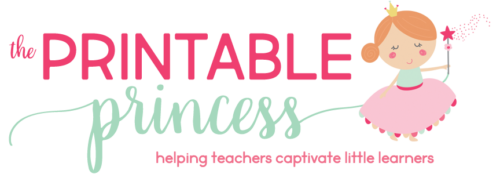
Be prepared this year for ANYTHING with Emergency Sub Plans done for you!
Getting Started With Writing Centers in Kindergarten
Have you ever wanted to implement kindergarten writing centers but didn't know where to start? Today, I'm breaking it down for you step-by-step from setting up your writing centers to getting started right and working on those beginning writing skills.
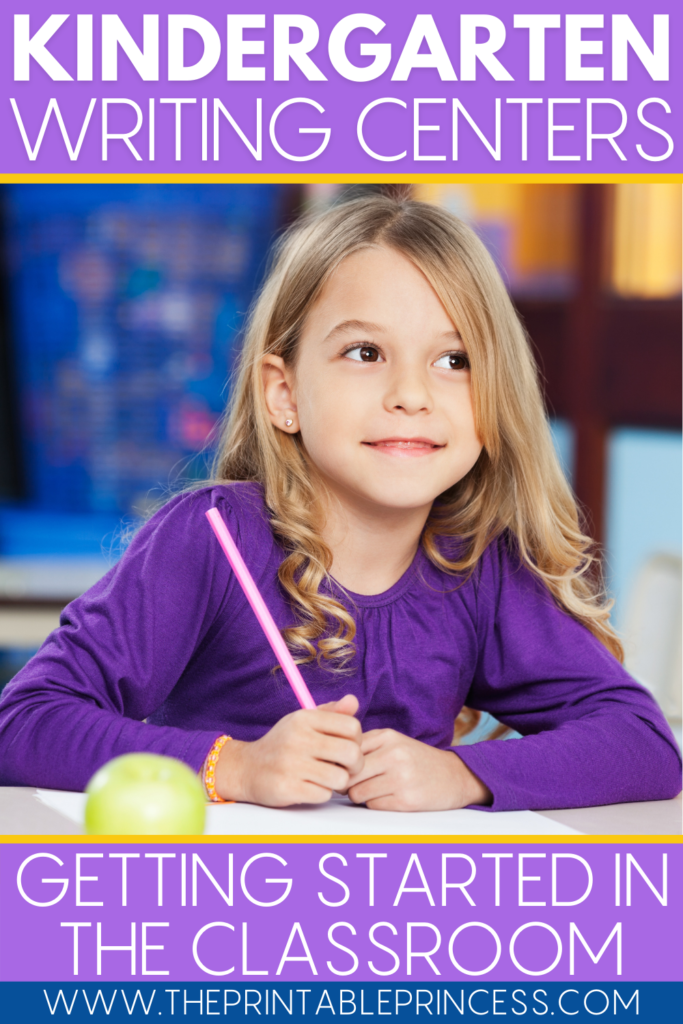
Setting Up Your Writing Centers
It's important when setting up your kindergarten writing centers to think about the flow of your centers and what supplies students will need. The last thing you want is for students to be crowded or having to get up multiple times for supplies.
Tip #1: Choose your space.
Choose a spot for your writing centers that has all the materials your students will need. You also want to ensure there is ample space for students to work.
Consider left-handed students and make sure there is enough space for them to work and not knock elbows with their right-handed friends.
Using a kidney table or small group table in your writing centers space is a great way to keep students in one area and still allow each of them to work in their own space. This also allows the teacher to observe and assist students easily.
Tip #2. Gather materials.
To make it easy for students to access materials for each writing center activity , it's beneficial to prep bins of materials for students.
Look at the activities in your writing center and make a list of the supplies students will need, such as pencils, scissors, glue, crayons, clipboards, etc.
You can prep individual bins or partner bins that they can share with a table partner. You can use pencil boxes or baskets found at the dollar store.
It's also a good idea to keep a trashcan near the writing center area so students can clean up and throw paper scraps away as they go. This also teaches responsibility…yay!
Tip #3: Use visual aides.
One of the key benefits of kindergarten writing centers is that it helps students become more independent. However, young students need support and guidance, which is why visual aides are a must!
Hang up writing anchor charts and vocabulary picture cards at eye level so your students can reference them whenever they need to. Train your students to look at the anchor charts and picture cards before asking the teacher for help.
Tip #4: Prep student writing journals.
Using student writing journals is a great way to keep writing center activities organized. Get organized and make each student feel special by adding a student writing journal cover to each student's journal.
Students can keep their completed work in their journal as well as the work they need to finish up. A writing journal can also serve as a form of student portfolio to look back on as students grow and progress in their beginning writing skills.
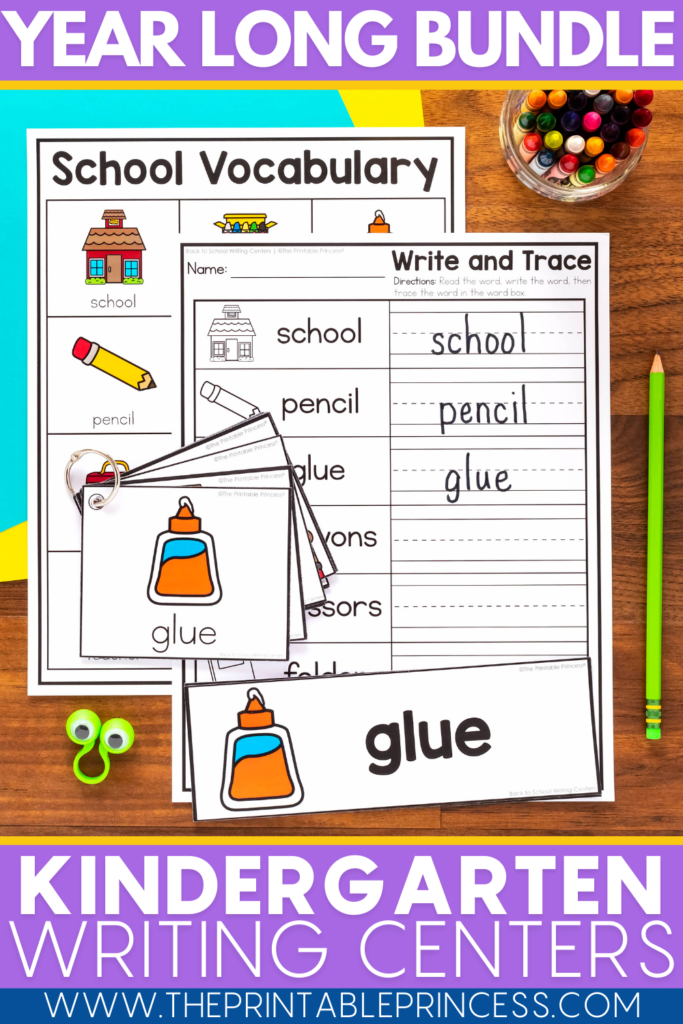
Getting Started Right
Once you have your space set up for success, it's time to get started right with kindergarten writing centers.
Tip #5: Introduce vocabulary words.
In your writing center, it's good practice to use kid-friendly vocabulary words and picture cards to help students learn new words and use them in context.
Take some time to introduce new vocabulary words to the entire class. You can even do this as a whole group mini lesson before you start your writing centers.
Introduce new vocabulary words each month to keep the writing centers fresh. By the end of the year, you'll be blown away by how many new words your students have learned.
Tip #6: Use “I can” cards.
While students may have a hard time understanding standards and objectives, a great way to help them understand the purpose of each activity is with kid-friendly “I can” cards.
Introduce new activities with the corresponding “I can” card so students know what is expected of them during that activity.
It's a good idea to introduce new activities to your writing centers over time. This helps students focus on learning how to complete a few activities at a time instead of being overwhelmed.
As students master each activity's routine, introduce a new activity. Using kindergarten writing center activities that follow a similar structure each month makes planning and implementing centers that much easier too!
Tip #7: Discuss writing conventions.
As students begin to learn more about writing, it's key to discuss proper writing conventions with them. It's never too early to start teaching students the importance of capitalization, punctuation, and proper spacing.
Teach proper writing conventions by modeling how to use them or doing a mini lesson to fix up incorrect sentences. You can also include a writing checklist anchor chart on your writing wall and a writing guide for your students' writing journal.
Tip #8: Practice and model.
Just like with any instructional strategy, it's important to set expectations, practice, and model with your students. Discuss the expectations for writing centers and model on task behavior.
Talk about what students should do if they get stuck. For example, if they are stuck on a word and need help, they should try to sound it out, write the first sound they hear, draw a line showing they want a word there but need help, or just skip the word and move on.
This helps students think about problem-solving and helps foster that independence you're looking for. It's also important to practice transitioning to the writing center space, getting materials, and getting to work.
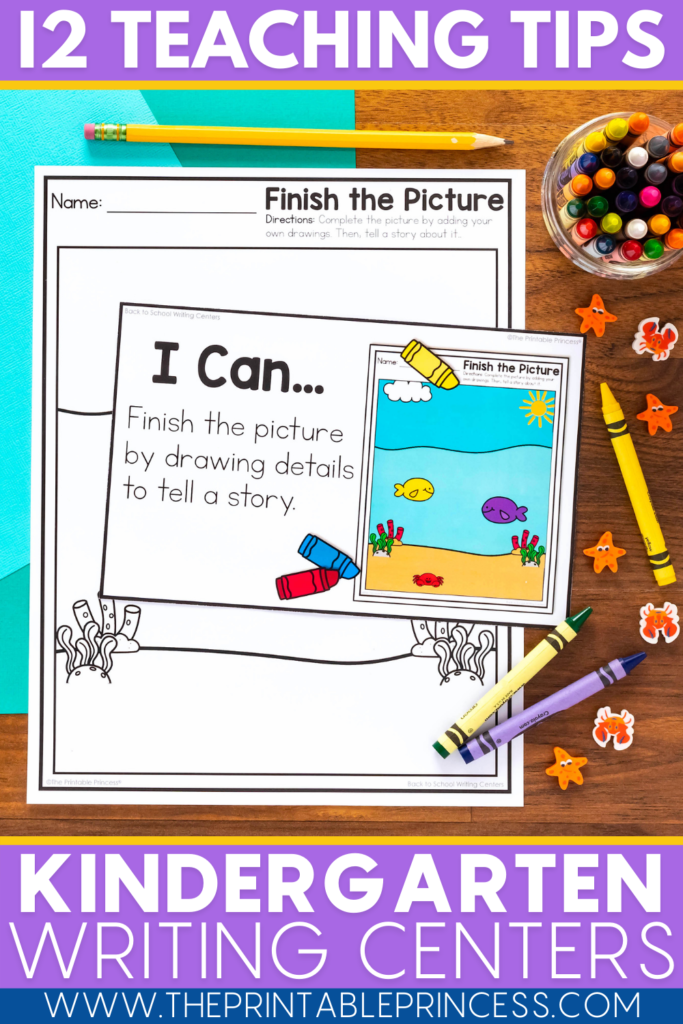
Working on Writing
Setting up your writing centers and going over routines and procedures is key, but now comes the fun part…working on writing!
Tip #9: Use a variety of activities.
Fact: Kindergarteners get bored easily and have a short attention span. Therefore, using a variety of kindergarten writing center activities is a must.
This keeps the learning fun, fresh, and allows students to practice several beginning writing skills. Plus, with a variety of activities, students have a lot of opportunities to problem-solve, be creative, and practice working independently.
A few key activities to include in your kindergarten writing centers are: tracing, handwriting, labeling, making lists, write the room, sight word sentences, beginning sounds, finishing the sentence, writing stories, sequencing, fixing sentences, and writing a postcard.
You can find all of these activities in engaging monthly themes in my Kindergarten Writing Centers Growing Bundle .
Tip #10: Stay consistent.
Kindergarteners crave consistency. They feel in control when they know what is coming next and how to complete an activity. This is why it's so important to stay consistent all year long with your writing center activities.
Of course, you can add new activities throughout the year, use different themed vocabulary words each month, and increase the challenge as your students' skills grow.
However, keeping your activities consistent and using familiar instructions will cut down on the time it takes to explain and teach new activities.
Tip #11: Support your beginning writers.
Teaching writing is a magical subject. You get to see your students' creativity come alive right before your eyes.
You also get to learn more about your students as they grow and express themselves through writing. Who knows, you may have the next bestselling author in your classroom?
Be sure to offer support to your beginning writers . Sit down with them one-on-one to talk about their writing and ask them questions. Help them grow their skills by offering support, yet letting them do it independently or with minimal help.
Tip #12: Celebrate student wins.
There's nothing better than watching the lightbulb go off in a student's brain and watching them grow right in front of you. Celebrate student wins by having them share their writing with the class.
You can even showcase their writing by having them show it off during show and tell. Hang up writing pieces in the classroom or create a bulletin board just for hanging up writing.
The more you can celebrate your students, the more they'll take pride in their work and have fun doing it.
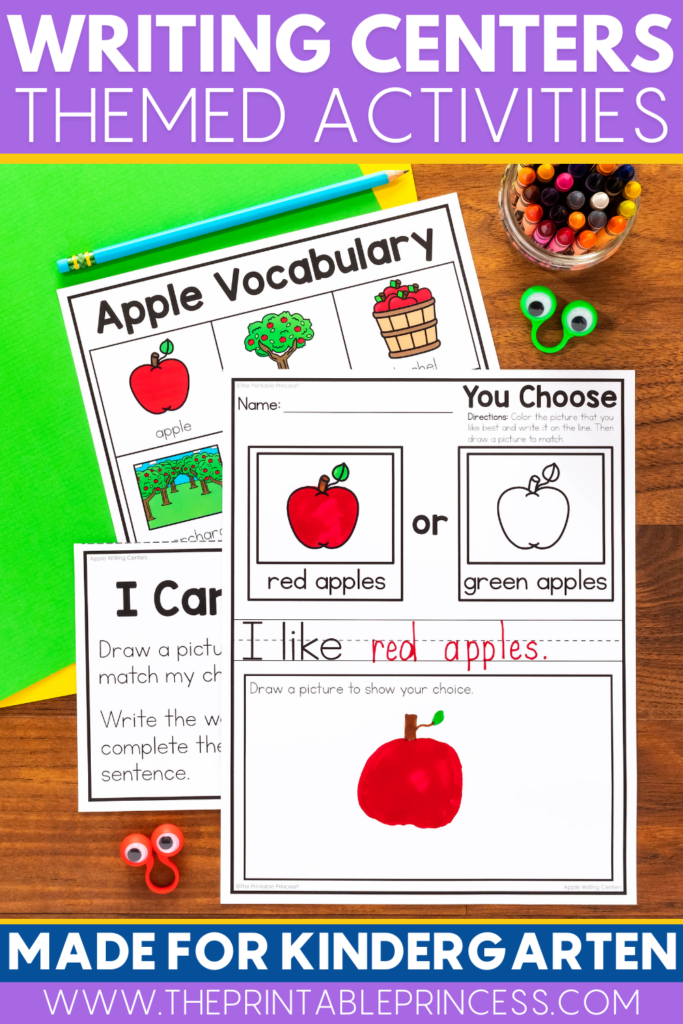
I hope these tips for getting started with kindergarten writing centers have inspired you to implement this amazing form of instruction in your classroom!
Similar Posts
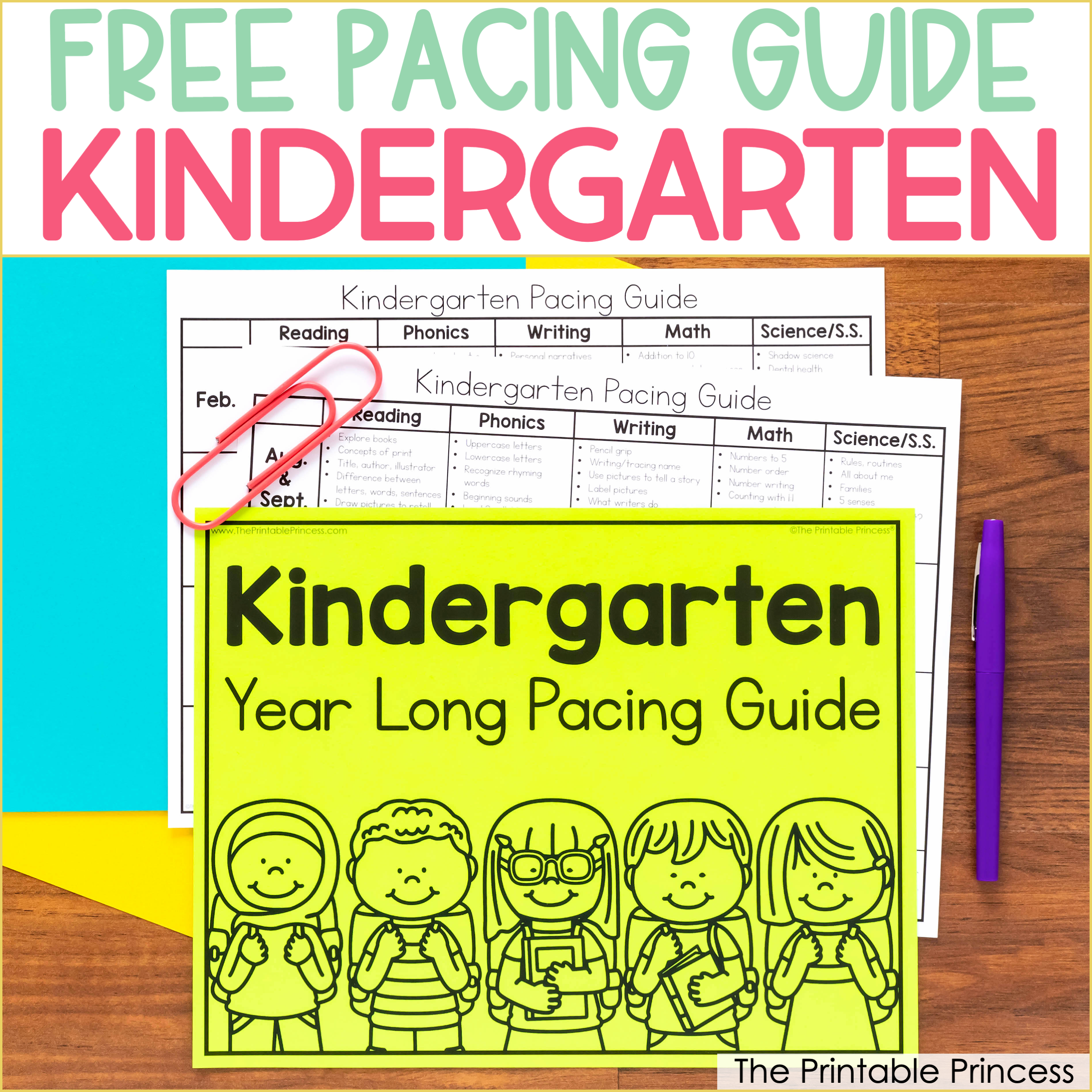
Free Kindergarten Pacing Guide
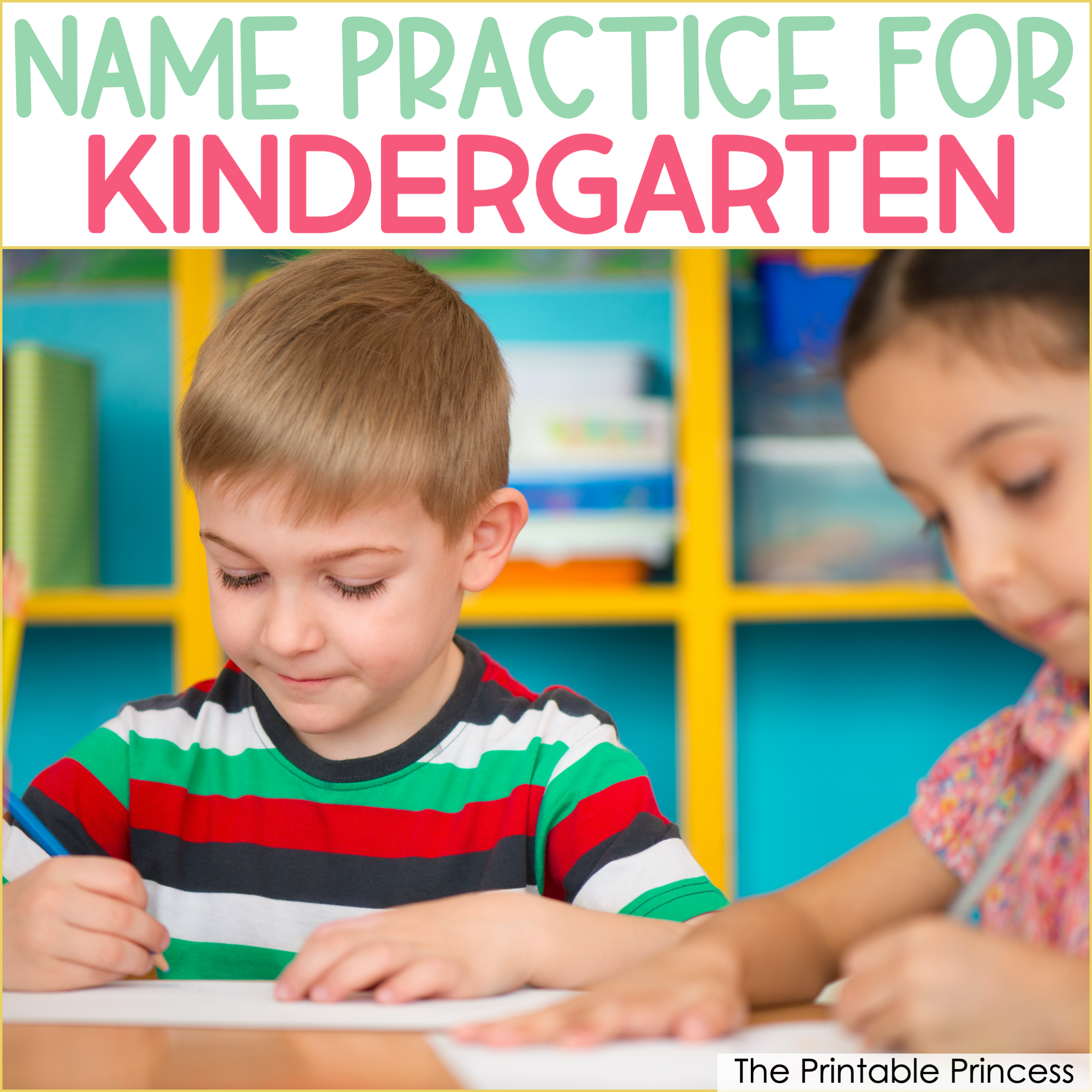
14 Name Writing Activities for Kindergarten

7 Ways to Use Writing Prompts for Kindergarteners
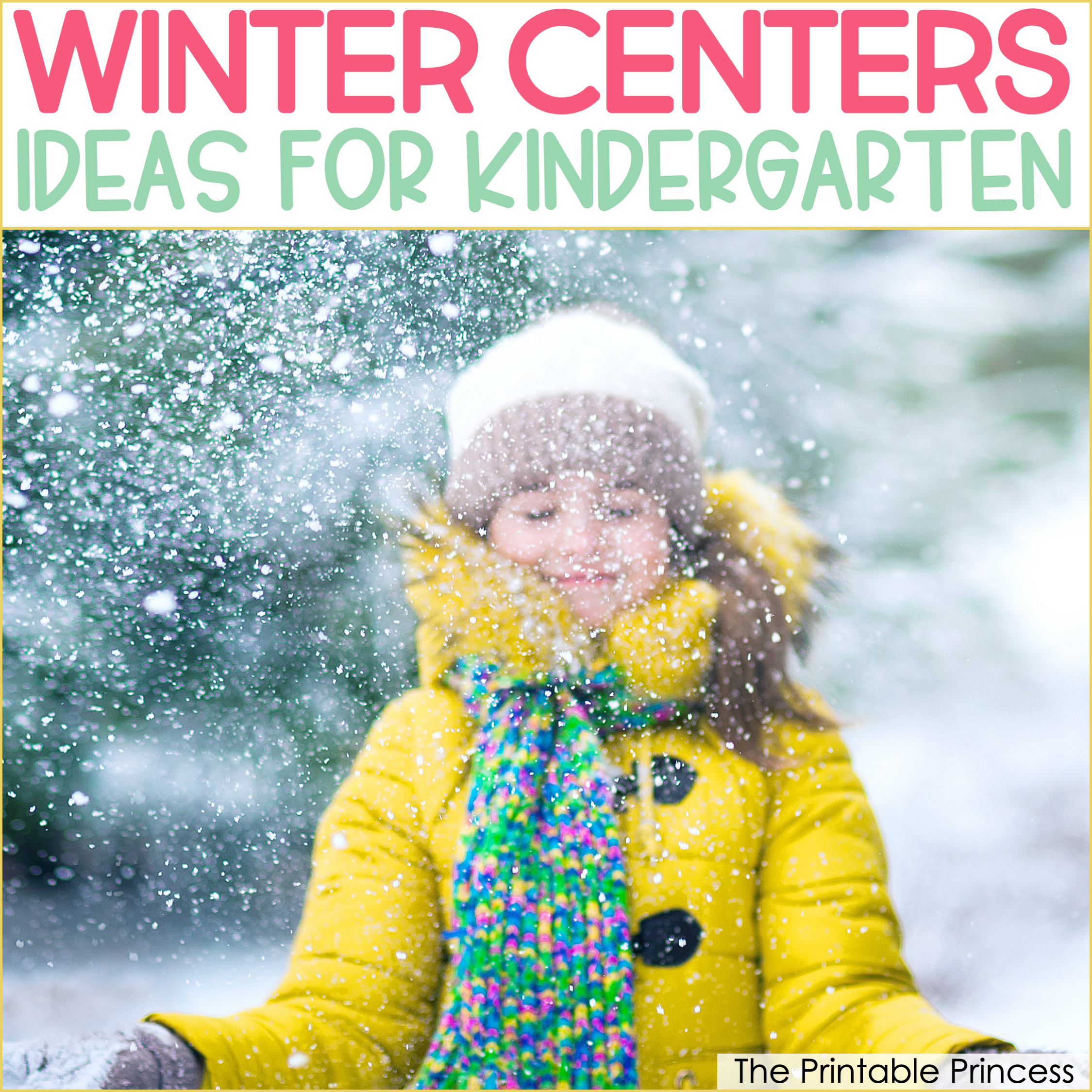
Winter Center Ideas for Kindergarten
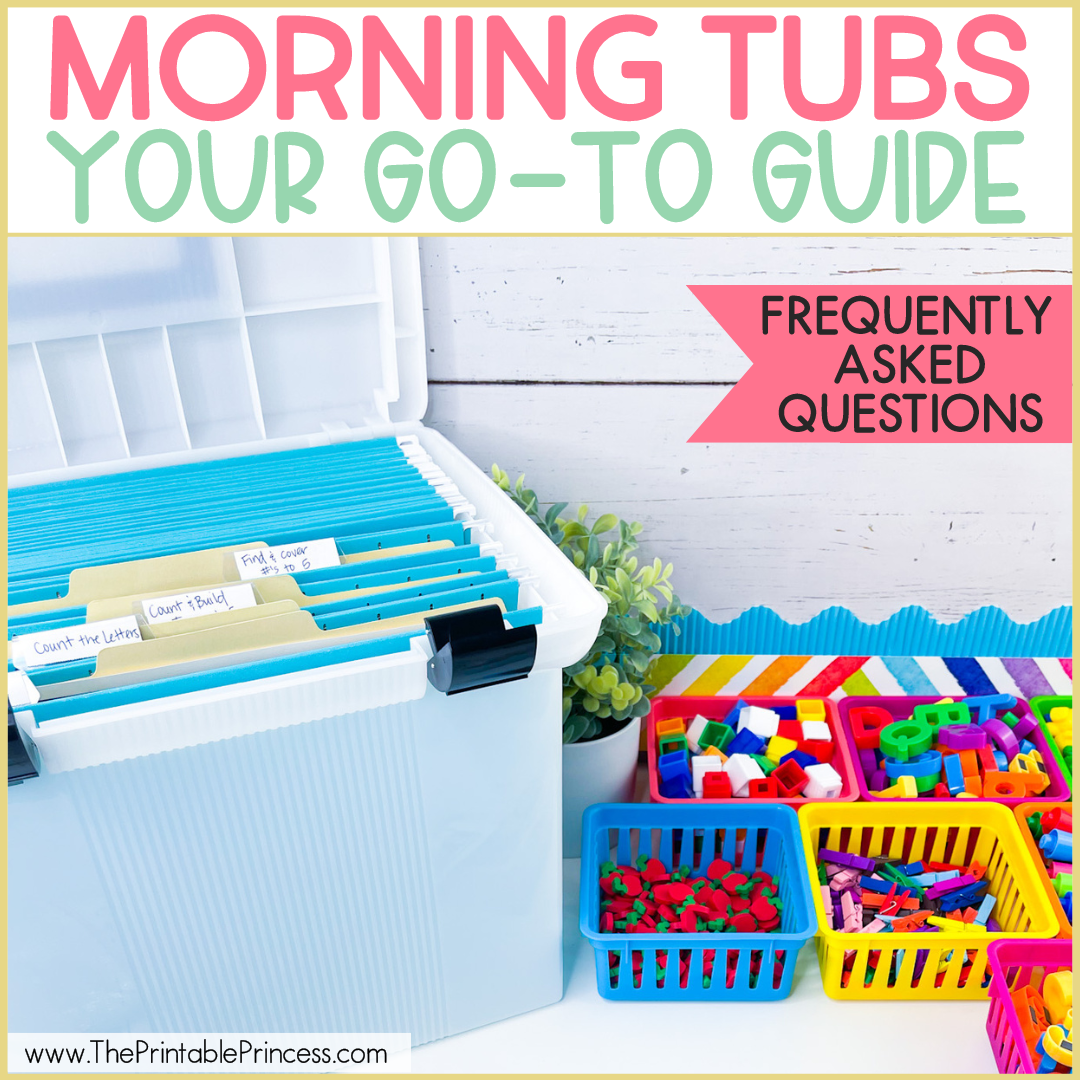
Kindergarten Morning Tubs FAQ
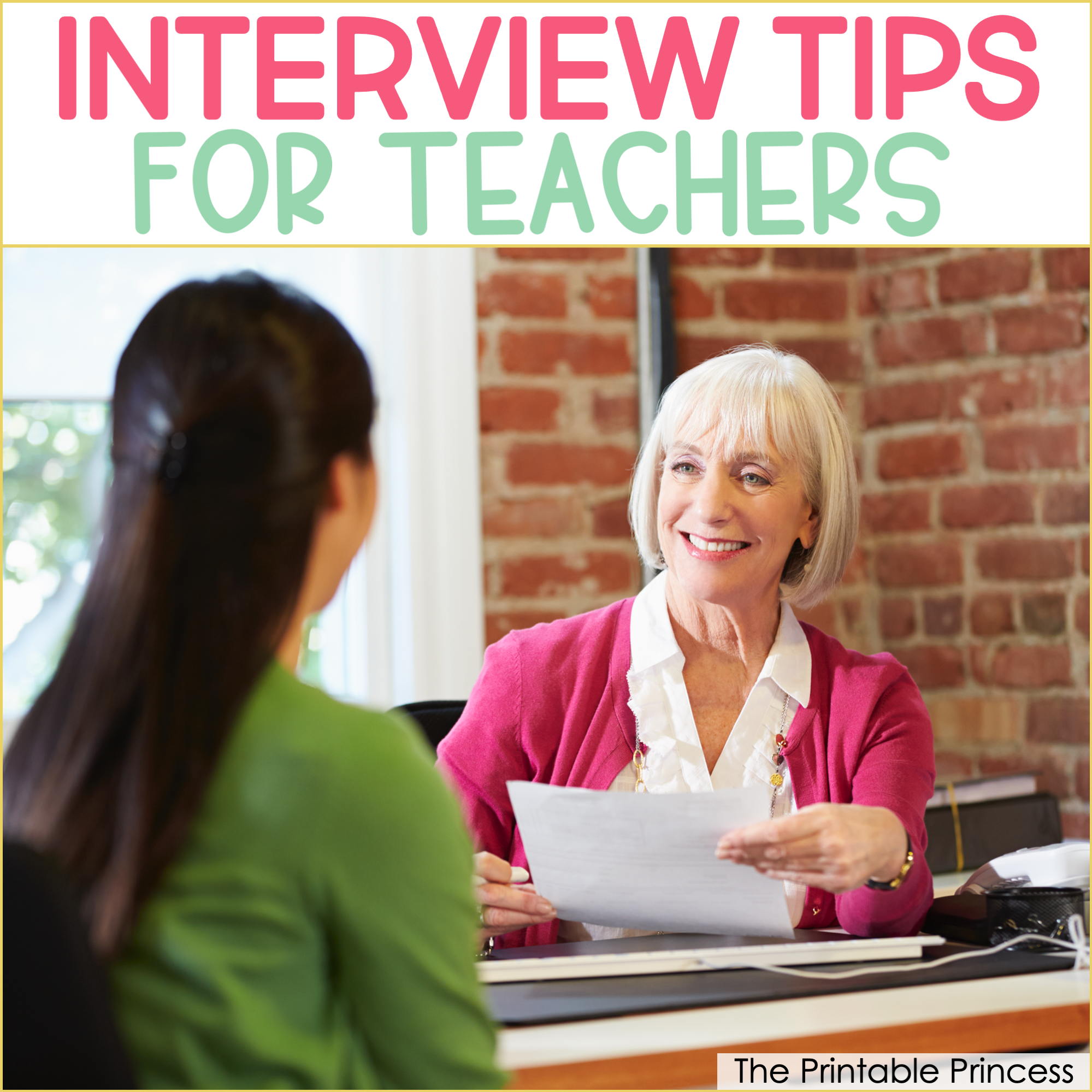
7 Teacher Interview Tips
Leave a reply cancel reply.
You must be logged in to post a comment.
Helpful Links
Popular posts.

Free Kindergarten Writing Prompts
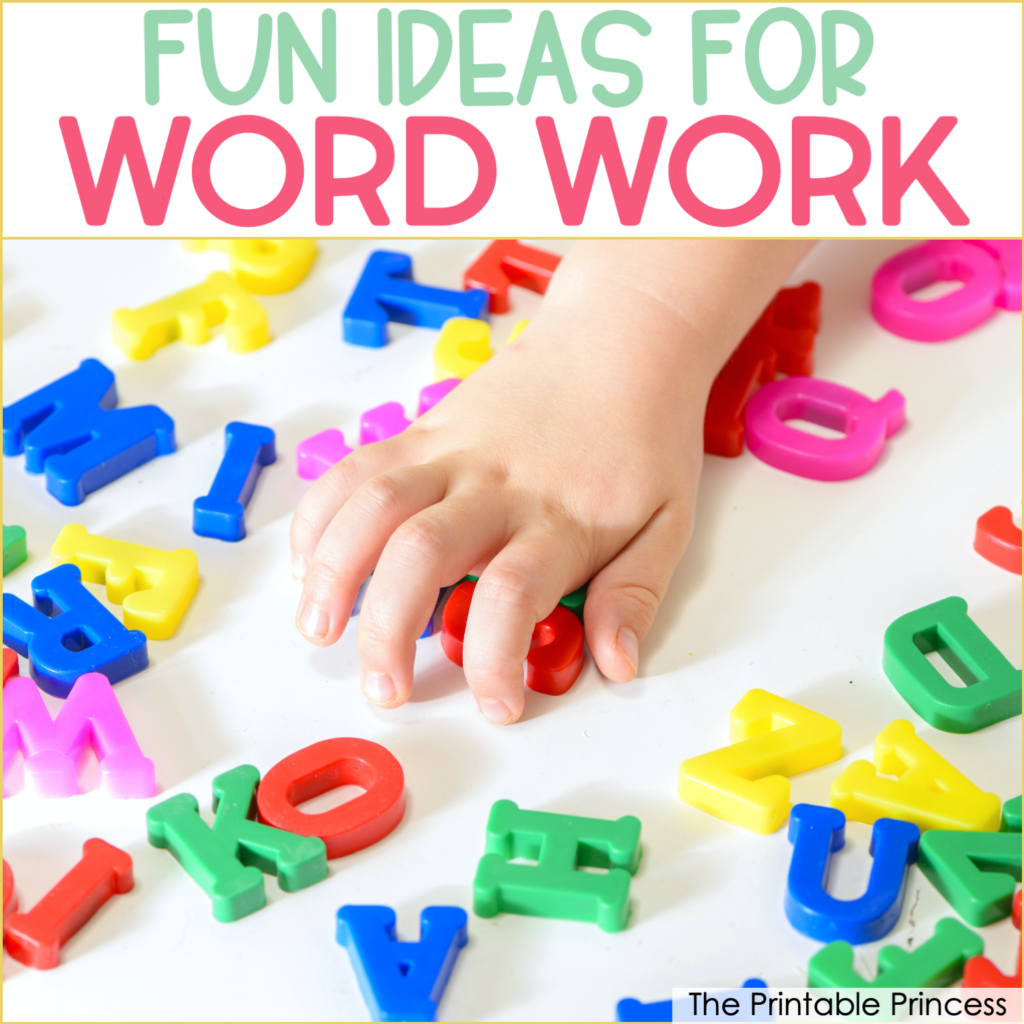
8 Activities to Make Word Work More Fun
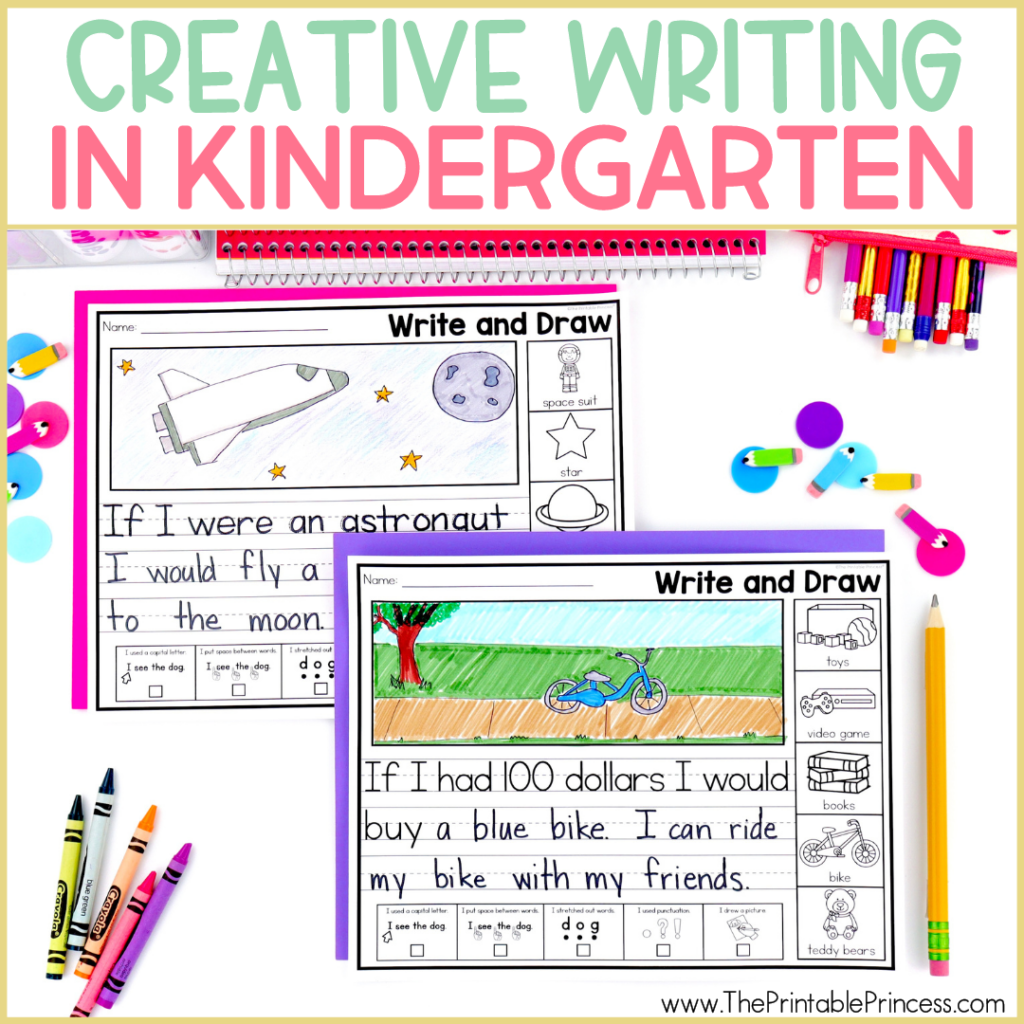
How to Spark Creativity in Kindergarten Writing
New in the shop.
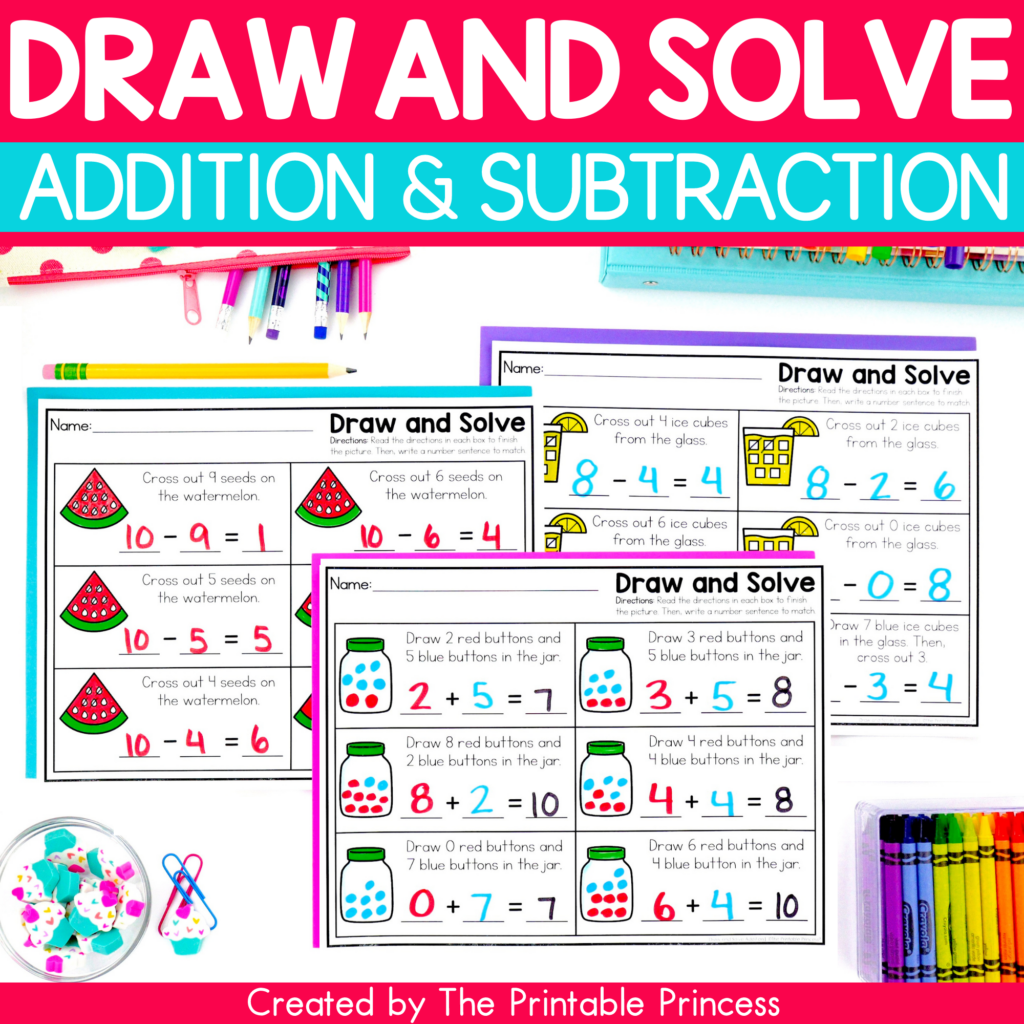
Draw and Solve Addition and Subtraction
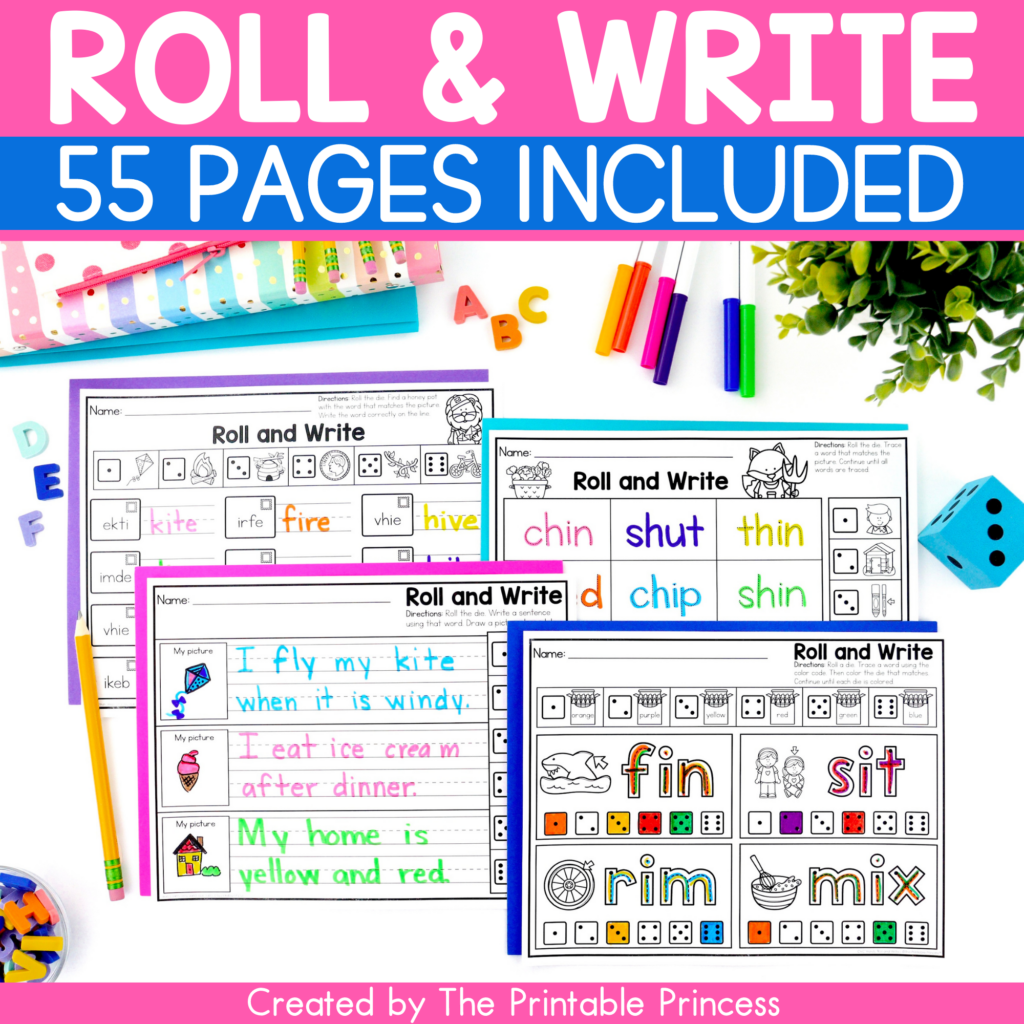
Roll and Write | CVC, CVCe, CCVC, Blends and Digraphs
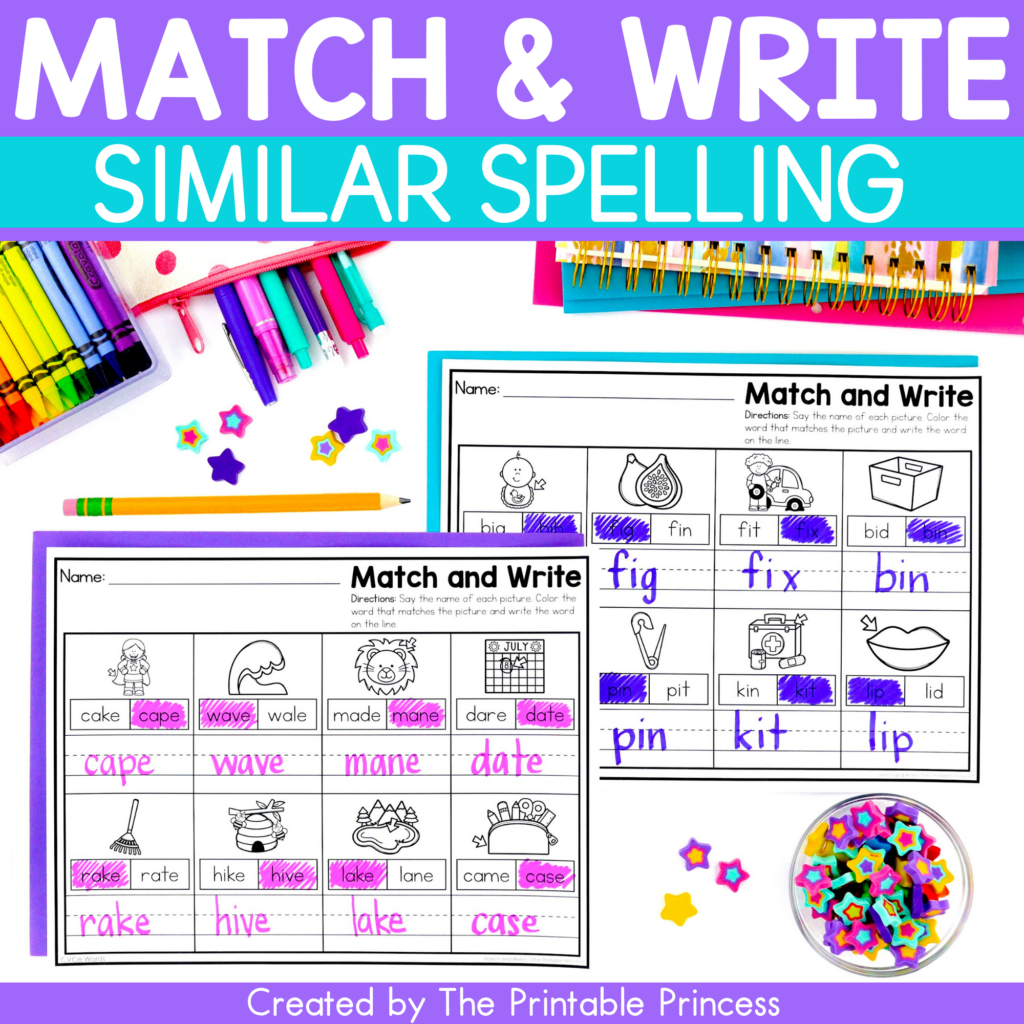
Match and Write | Similar Spelling
Don’t miss out on weekly freebies, teaching tips & more! Join the free email list:

Kindergarten Name Writing Activities | 15 Fun Tips and Ideas
Language Arts

Table of Contents
Kindergarten Name Writing Activities
Tips for teaching name writing.
Get ready for the beginning of the year with these fun kindergarten name writing activities. As educators and caregivers, you play a crucial role in nurturing these foundational skills, and what better way to support young children than through engaging and creative name activities?
In early childhood education, name writing holds a special significance. It’s a stepping stone that paves the way for little learners to learn alphabet letters as well as engage in fine motor activities.
This blog post provides both kindergarten teachers and parents with a collection of name writing activities, name crafts, and more name writing practice activities.

Whether you’re an experienced educator looking for great ideas or a new teacher prepping for the first day of school, below are different ways your young learners can learn to write their names.
From sensory experiences that engage multiple senses to interactive games, writing names has never been so much fun!
As we share these kindergarten name writing activities, keep in mind that each child progresses at their own pace. The goal is not just to create legible lowercase and capital letters, but also to foster a lifelong love for learning.
Name writing activities are a great way for kindergarten students to develop fine motor skills, letter recognition, and familiarity with their own names.
Here are some creative and engaging name writing activities for kindergarten:
Rainbow Name Writing:
Provide each child name tracing worksheets and a set of markers in various colors. Instruct them to trace their name multiple times, using a different color for each repetition.
Name Puzzles:
Write each child’s name on a piece of cardstock, then cut the letters apart to create a name puzzle. Students must reconstruct their names like a puzzle, helping them recognize letter order and sequence.

Sensory Trays:
Fill shallow trays or baking sheets with a thin layer of salt or colored sand. Encourage children to use their fingers to write their names in the salt. This tactile activity sand tray enhances sensory learning and strengthens letter formation.

Name Collage:
Provide magazines, newspapers, and colorful craft materials. Have children cut out letters from these materials to create collages of their names. This activity reinforces letter recognition and creativity.
Playdough Names:
Offer students playdough in various colors and ask them to roll the dough into ropes to form the letters of their names. This hands-on activity enhances fine motor skills and letter formation.
Create name cards for each child and hide them around the classroom. Students must find their name cards and then write their names on a piece of paper or whiteboard once they find them.
Name Stamping:
Provide letter stamps or foam letters and ink pads. Kids can use these stamps to spell out their names on paper.
Magnetic Letters:
Give the kids a sentence strip with their name written on it. Then let them use magnetic letters to

Name Songs and Rhymes:
Introduce a catchy name song or rhyme to help children remember the letters in their names. Singing and reciting rhymes make learning names enjoyable.
Printable Name Writing Activity:
This name writing worksheet focuses on the first letter of the student’s name. It’s a simple activity I loved doing with the kids in the early weeks of school.

Name Bingo:
Create bingo cards with different students’ names and distribute them to the class. Call out names randomly, and students must find and mark the correct name on their bingo cards. They can use bingo daubers.
I do not recommend this on the first days of school, because the kids are still learning their own names let along their peers.
Play Dough Names:
Playdoh is an amazing way for kids to practice name writing at an early stage. They learn how to form the letters without the fear of getting it wrong and having to erase.
Shaving Cream:
This is one of the kids favorite name writing activity year after year. Give them a little shaving cream, spread it out, then practice writing their name.
Name Necklaces:
Give the kids a set of letter beads and strings , and let them build a name necklace. To do this, I suggest also giving them a name card for them to reference. When done, they can practice tracing the name card.

Sidewalk Chalk:
This is a classic, but powerful, activity for preschool children through first grade.
The above activities can be sone to teach the kids their first name as well as their last names.
As you know, helping kids learn how to write their name is an essential milestone in their early education.
Here are some of the best ways to make the process enjoyable and effective:
Name Recognition
Start by helping children recognize the letters in their name. Use name cards, personalized items, and repetition to familiarize them with the sequence and shape of the letters.
Multisensory Learning
Incorporate various sensory experiences into name writing activities. Use playdough, sand, salt trays, or textured materials to make writing a tactile and engaging experience.
Letter Formation
Teach kids how to form each letter in their name correctly. Emphasize starting points and directions for each stroke. Use tracing worksheets and demonstrations to model proper letter formation.

Personalized Writing Practice
Create individual name writing practice sheets for each child. Use dotted lines or fading letters to guide them as they write. Gradually reduce support as their skills improve.
Learn both Capital and Lowercase
For simplicity, begin with uppercase letters if the child’s name contains both upper and lowercase letters. Focus on uppercase first and then transition to lowercase later.
Positive Reinforcement
Praise and celebrate every effort and improvement. Use positive reinforcement, stickers, or small rewards to encourage kids to write their name regularly.
Create a Name Chart
Make a large chart with each child’s name in big, bold letters. Display it in the classroom or learning area as a reference tool and visual reminder.
Name Tracing Games
Play games that involve tracing or copying names, such as name bingo, name hopscotch, or name puzzles.
Model Writing
Demonstrate writing your own name and other children’s names. Kids often imitate adults, so seeing you write can inspire them to practice their own writing.
Encourage kids to incorporate their names into their artwork. They can draw pictures and write their names below them, adding a personal touch to their creations.

Writing in Context
Use the child’s name in meaningful contexts, such as labeling their artwork, belongings, or classroom cubbies. Seeing their names in everyday situations reinforces the importance of name writing.
Learning to write their name takes time and practice. Be patient and supportive, allowing each child to progress at their own pace.
The key is to make the process enjoyable and build a positive association with name writing. With patience, encouragement, and consistent practice, kids will gain confidence and proficiency in writing their names.
Before you go, here are more posts you’ll enjoy:
85 Positive Affirmations for Children
30 Tips for Teaching Letters and Numbers
Kindergarten “I Can” Statements

Welcome to Little Learning Corner
We encourage play, nature, and learning for kids (PreK-1st). Click here to learn more about me.
find it fast
- Share full article
Advertisement
Supported by
Working With Your Hands Is Good for Your Brain
Activities like writing, gardening and knitting can improve your cognition and mood. Tapping, typing and scrolling? Less so.

By Markham Heid
The human hand is a marvel of nature. No other creature on Earth, not even our closest primate relatives , has hands structured quite like ours, capable of such precise grasping and manipulation.
But we’re doing less intricate hands-on work than we used to. A lot of modern life involves simple movements, such as tapping screens and pushing buttons, and some experts believe our shift away from more complex hand activities could have consequences for how we think and feel.
“When you look at the brain’s real estate — how it’s divided up, and where its resources are invested — a huge portion of it is devoted to movement, and especially to voluntary movement of the hands,” said Kelly Lambert, a professor of behavioral neuroscience at the University of Richmond in Virginia.
Dr. Lambert, who studies effort-based rewards, said that she is interested in “the connection between the effort we put into something and the reward we get from it” and that she believes working with our hands might be uniquely gratifying.
In some of her research on animals , Dr. Lambert and her colleagues found that rats that used their paws to dig up food had healthier stress hormone profiles and were better at problem solving compared with rats that were given food without having to dig.
She sees some similarities in studies on people, which have found that a whole range of hands-on activities — such as knitting , gardening and coloring — are associated with cognitive and emotional benefits, including improvements in memory and attention, as well as reductions in anxiety and depression symptoms.
These studies haven’t determined that hand involvement, specifically, deserves the credit. The researchers who looked at coloring, for example, speculated that it might promote mindfulness, which could be beneficial for mental health. Those who have studied knitting said something similar. “The rhythm and repetition of knitting a familiar or established pattern was calming, like meditation,” said Catherine Backman, a professor emeritus of occupational therapy at the University of British Columbia in Canada who has examined the link between knitting and well-being.
However, Dr. Backman said the idea that working with one’s hands could benefit a person’s mind and wellness seems plausible. Hands-on tasks that fully engage our attention — and even mildly challenge us — can support learning, she added.
Dr. Lambert has another hypothesis. “With depression, people experience something called learned helplessness, where they feel like it doesn’t matter what they do, nothing ever works,” she said. She believes that working with one’s hands is stimulating to the brain, and that it could even help counteract this learned helplessness. “When you put in effort and can see the product of that, like a scarf you knitted, I think that builds up a sense of accomplishment and control over your world,” she said.
Some researchers have zeroed in on the possible repercussions of replacing relatively complicated hand tasks with more basic ones.
In a small study of university students published in January, Norwegian researchers compared the neurological effects of writing by hand with typing on a keyboard. Handwriting was associated with “far more elaborate” brain activity than keyboard writing, the researchers found.
“With handwriting, you have to form these intricate letters by making finely controlled hand and finger movements,” said Audrey van der Meer, one of the authors of that study and a professor of psychology at the Norwegian University of Science and Technology. Each letter is different, she explained, and requires a different hand action.
Dr. Van der Meer said that the act of forming a letter activates distinctive memories and brain pathways tied to what that letter represents (such as the sound it makes and the words that include it). “But when you type, every letter is produced by the same very simple finger movement, and as a result you use your whole brain much less than when writing by hand,” she added.
Dr. Van der Meer’s study is the latest in a series of research efforts in which she and her colleagues have found that writing and drawing seem to engage and exercise the brain more than typing on a keyboard. “Skills involving fine motor control of the hands are excellent training and superstimulation for the brain,” she said. “The brain is like a muscle, and if we continue to take away these complex movements from our daily lives — especially fine motor movements — I think that muscle will weaken.” While more research is needed, Dr. Van der Meer posits that understimulation of the brain could ultimately lead to deficits in attention, memory formation and problem solving.
But as with knitting and coloring, some experts question the underlying mechanisms at play.
“With some of this research, I think it’s hard to dissociate whether it’s the physical movement of the hands that’s producing a benefit, or whether it’s the concentration or novelty or cognitive challenge involved,” said Rusty Gage, a professor at the Salk Institute for Biological Studies in San Diego.
Dr. Gage studies how certain activities can stimulate the growth of new cells in the brain. “I think if you’re doing complex work that involves making decisions and planning, that may matter more than whether you’re using your hands,” he said.
That said, the benefits of many hands-on activities aren’t in doubt. Along with gardening and handicrafts, research has found that pursuits like making art and playing a musical instrument also seem to do us some good.
“You know, we evolved in a three-dimensional world, and we evolved to interact with that world through our hands,” Dr. Lambert said. “I think there are a lot of reasons why working with our hands may be prosperous for our brains.”
- Request info
- Majors & Degrees
- Prospective Students
- Current Undergraduate Students
- Current Graduate Students
- Online Students
- Alumni and Friends
- Faculty and Staff
USM Center for Writers Hosting Writing Camp: Young Authors Academy in July
Mon, 04/08/2024 - 11:55am | By: Ivonne Kawas
The Center for Writers at The University of Southern Mississippi (USM), housed in the School of Humanities, will host the Young Authors Academy (YAA) — a creative writing summer camp —July 8-12 for young teens ages 9-13. The camp will be held from 1 p.m.- 5 p.m. on the Hattiesburg Campus.
YAA provides a space for campers who want to practice creative writing in a nurturing and collaborative environment. Participants gain confidence in their own writing, as they are introduced to fiction, poetry, and a process designed to diversify writing skills.
“Our goal is to offer young writers the opportunity to create many poems and stories, as well as a productive writing process that they can continue when camp is over,” said Dr. Rachael Fowler, assistant teaching professor of English. “At the YAA, they’ll find an outlet to experiment with creativity, express themselves in new ways, and support each other as they share their voices and words. We look forward to providing new writing experiences to our many returning campers and all newcomers.”
Experienced camp counselors, who are published writers in USM’s Creative Writing program, will lead participants through many activities: writing prompts, walking field trips on campus, practice reading their own work to others, and guidance for providing supportive feedback to fellow writers. This year’s interactive field trips include sites such as the Archaeology Lab, the Theatre and Dance Building, and the Gallery of Art and Design
Camp participants get to showcase the work they produce at a reception and public reading—open to family and friends—and get a printed anthology of their writing to take home.
The summer camp costs $200. Register or contact Dr. Rachael Fowler, the camp coordinator, via email.
Categories: Arts and Sciences
Recent News Articles
Usm to close in anticipation of severe weather wednesday, usm to host fun-filled edible book festival, usm symphony to perform epic concert in longtime director's finale.
Advertisement
5 solar eclipse activities to do with children
From building an eclipse viewer to using the sun to pop balloons, here's a child-friendly activity guide for April's eclipse
By Abigail Beall
6 April 2024

There are plenty of fun eclipse activities to do with kids
Edwin Remsberg/Alamy
If you are planning to enjoy the total solar eclipse on 8 April with your children, here are a few activities you can do with them before and during the eclipse, to help them understand what causes a solar eclipse and get the most out of the experience.
1. Build an eclipse viewer
On the days leading up to the eclipse, you and your children can get excited about the big event by building an eclipse viewer . There are a few ways to do this – the first of which is a simple pinhole camera using two pieces of paper. Cut a hole in one piece of paper and cover it with aluminium foil, then poke a small hole in the foil. On the day of the eclipse, hold the paper up to let the sun beam through the hole and it will project a version of the eclipse onto a second piece of paper you place on the ground.
A slightly more complicated version involves a cereal or shoe box, placing paper at one end and cutting two holes in the other end. Over one of the two holes, you place some tin foil and, again, pierce it so that the sunlight can get through. More details on how to make both versions here .
Solar Eclipse 2024
On 8 April a total solar eclipse will pass over Mexico, the US and Canada. Our special series is covering everything you need to know, from how and when to see it to some of the weirdest eclipse experiences in history.
2. Build a solar eclipse model
Another activity that can be done ahead of the eclipse is building, or acting out, a model of the sun, moon and Earth to understand what a solar eclipse is . To build it, all you need is three sticks and three balls to place on top of the sticks. You can paint them or colour them in so that they resemble the sun, moon and Earth. Make sure the sun is bigger than the moon. Then, you can show your kids what an eclipse is by placing the sun in the centre, and moving Earth around the sun and the moon around Earth. When the three line up, with the moon in between the sun and Earth, we get a solar eclipse. When the moon is on the other side of Earth from the sun, we get lunar eclipses.
Your kids can also act out a solar eclipse. Give one of them a torch or flashlight, making them act as the sun, and ask them to shine the torch on a wall. The other, who is the moon, can move around until they block the torch light. They can both play around with moving forwards and backwards, to show why the distances between the moon, Earth and sun matter when it comes to eclipses.
Sign up to our Launchpad newsletter
Voyage across the galaxy and beyond with our space newsletter every month.
Total solar eclipse tours and cruises 2026 and 2027
We are working on some amazing ways to experience the forthcoming total solar eclipses in 2026 and 2027
3. Pop a balloon using sunlight
This is something that can be done on any sunny day. But on the day you are waiting for the total eclipse, you can show your kids how to use the power of sunlight to pop a balloon. You need a balloon and a magnifying glass for this activity. Blow up the balloon and then hold the magnifying glass up so that it magnifies the sunlight onto the balloon. Wait for a few minutes and, eventually, the balloon will pop. You can also make this more exciting by blowing up a white balloon inside a black one, and doing the same trick. The black balloon should pop, leaving the white balloon intact inside. You can use this to explain how black surfaces absorb sunlight, while light surfaces reflect them.
4. Play with shadows
On the day of the eclipse, while you are waiting for totality, the partial eclipse phase will last a few hours. You and your kids can get excited about the eclipse by noticing how shadows change, and playing around with this. If you have a tree nearby, look at the shadows it casts on the ground throughout the eclipse and you will see that they start to look like a sun with a bite taken out of it. This also works by crossing your fingers over each other and casting shadows on the ground. Another way to show the eclipse through shadows is using a colander, or anything with small holes in it. As the eclipse progresses, the shadows cast will start to take on the shape of the eclipse. You can punch a series of holes in a piece of paper to spell out a word or your kids’ names in these crescent shapes.
5. Draw shadows
This is another activity that can be done in the hours leading up to and after totality, again making the most of the interesting shadows created by a partially eclipsed sun. You can lay a big white piece of paper or sheet on the ground, and ask your kids to draw the shadows cast by different objects. If you do this at the start of the partial phase, and again closer to totality, they will be able to see how these shadows change as the eclipse progresses. You should notice that, in the lead-up to totality, shadows become much clearer as the amount of ambient light is reduced.
- solar eclipse 2024
Sign up to our weekly newsletter
Receive a weekly dose of discovery in your inbox! We'll also keep you up to date with New Scientist events and special offers.
More from New Scientist
Explore the latest news, articles and features
Eclipse 2024: 5 of the best pictures of the total solar eclipse
Eclipse 2024 live: watch the full nasa broadcast – latest, when is the next total solar eclipse visible from the uk, how a total solar eclipse in 1919 left physicists 'more or less agog', popular articles.
Trending New Scientist articles
- Skip to main content
- Keyboard shortcuts for audio player

Solar eclipse 2024: Follow the path of totality
Solar eclipse, how to help your kids enjoy the solar eclipse.
The NPR Network
Getting your kids ready to enjoy the eclipse? If you've got curious kiddos enjoying the eclipse today, here are some resources from the NPR Network to help get the most out of the experience:
Eclipse learning guide for kids via Vermont Public
- Pre-K to Grade 2
- Grade 3 to 5
- Grade 6 to 12

Amy Nickell with Dallas Arboretum helps Dani Turin, 5, look down the ruler at the sun and the moon to see the perspective of the eclipse Monday at Dallas Cotton Bowl Stadium. Yfat Yossifor/KERA hide caption
Amy Nickell with Dallas Arboretum helps Dani Turin, 5, look down the ruler at the sun and the moon to see the perspective of the eclipse Monday at Dallas Cotton Bowl Stadium.
Not able to get outside? Stream totality with your kiddo .
- WATCH: The difference between a solar and a lunar eclipse from KERA Kids
- LISTEN: has a new episode out about solar eclipses from But Why , Vermont Public's podcast for curious kids
Kid at heart? The Texas Standard has tips from Bill Nye on the best ways to enjoy the eclipse .
Do some color-based experimentation! The celestial phenomena can alter the way we see colors, so keep an eye on reds and greens and how they change over the course of totality!
- What do I do if my kid won't keep their eclipse glasses on?
- How can I make sure my eclipse glasses are legit?
- Simple tips to safely photograph the eclipse with your cellphone
And be prepared: As we found with kids who enjoyed the eclipse in 2017 , little ones may totally forget this celestial experience, so don't sweat it too much!
NPR will be sharing highlights from across the NPR Network throughout the day if you're unable to get out and see it in real time.
NPR's Emily Alfin Johnson produced this piece.

IMAGES
VIDEO
COMMENTS
Here are 30 fun writing activities that are sure to spark your little one's imagination: 1. Write Your Name. Name writing can be a great exercise for encouraging fine motor skills and hand-eye coordination in children. | via familyeducation. Bring out a piece of paper and a pencil and write your child's name on it.
Level-up with The Hive. This list of printable writing prompts for Kindergarten is just the start! There are even more writing prompts, activities, and even instructional slides available in the shop to help you teach descriptive writing, informational writing, and more. Plus, if you're really ready to transform your teaching, join The Hive to ...
1. Tell about your favorite stuffy. 2. Make a list of 3 things you like and 3 things you don't like. 3. What is your favorite thing to do on a rainy day? 4. I'm really good at …. 5.
Bookmaker. Turn your child's writing into books! Paste her drawings and writings on pieces of construction paper. For each book, make a cover out of heavier paper or cardboard, and add special art, a title, and her name as author. Punch holes in the pages and cover, and bind the book together with yarn or ribbon.
Kindergarten Writing Worksheets Learning to Write the Alphabet. Dive into our comprehensive collection of engaging and interactive writing worksheets for kindergarten learners. These thoughtfully designed resources cover the entire alphabet, including lowercase and uppercase cursive tracing as well as print letters. With ample space for ...
Here are 5 kindergarten writing activities I include throughout the year with my students. Building Writing Skills through Playful Activities. A great way to start writing in the kindergarten classroom is to incorporate playful writing activities into your child's routine to nurture their love for words and storytelling: Word Hunt
Have kids pick their favorite foods and write their recipes for what is included and how to cook them. A great activity to participate in after reading Stone Soup or another book about cooking. 10. Pattern Books -. This is a fun reading extension for kids with their favorite picture books.
Connect the rhymes: vowel sound a. In this coloring worksheet, your child will identify the pictures of rhyming words that have the same vowel sounds. Give your child a boost using our free, printable Kindergarten writing worksheets.
These awesome kindergarten writing activities are sure to get your little learner pumped about writing, reading and the alphabet! Cool ideas include word fishing, practicing consonant blends with a cool carnival game, and building sentences with this fun puzzle game.Browse through our collection of writing activities for kindergarten, or use the check boxes in the side bar to filter your ...
However, the first step is understanding why kindergarten writing activities are vital for your students' growth. Early childhood is an important period for establishing a strong foundation in writing skills. Here are some reasons why: Fine Motor Skills Development. Engaging in kindergarten writing activities aids in fine motor skill development.
5. Do mini lessons. Kindergarteners have the attention span of a fruit fly. This is why right before journal writing time, I teach them one quick skill. Mini lessons are great for teaching narrative, opinion writing, how to compose a topic sentence, and various stages of the writing process. 6.
This kindergarten writing prompts bundle is designed to align with foundational literacy skills and standards for early childhood education. It incorporates activities that promote the development of essential skills such as letter formation, sentence structure, narrative writing, opinion writing, descriptive writing, and so much more.
Clothespins and a string. Another option for your writing center vocabulary words is to use string and clothespins to display them. This is cute and still relatively easy to change out, although objectively more work that using a pocket chart. 3. Binder rings.
In my framework, I have long required teachers to devote 20-25% of the language arts time to writing, and that is true for kindergarten classes, too. Since I think the total time allocation for language arts should be 2-3 hours, that means 24-45 minutes of writing time per day in a kindergarten class. The rest of the time should be aimed at ...
Great Writing Activities For Kindergarten. Here are some amazing activities that we think that your preschoolers will love and enjoy. Make sure to keep them super fun and interactive! Fine Motor | Social Skill | Singing. 1. Giant Letter Maze. Photo Credit: howweelearn.com. Learn More.
Here are a couple of books that my students created today. and here is another. You can find my Writing Work Station for March HERE. Or Save BIG with the Writing Work Station-The Complete Set HERE. Here are few other stations that caught my eye. I love to see the attention to detail. Some of my students are still working on identifying initial ...
Introduce new writers to writing complete sentences in early grades with a group of kindergarten writing prompts about spring. PDF Slide Grade s K ... Guided Writing Activities for 1st Grade Guided Writing Activities for 2nd Grade Guided Writing Activities for 3rd Grade
Hands-On Building Sentences. One of the best ways to help students write sentences on their own is to make it more hands-on. This sentence building activity allows students to create their own sentences by moving around the words and pictures. I typically introduce this center in Month 2 of school. First, I help them create sentence stems and ...
KinderWriting is based upon nine units: Writing With Pictures, Writing With Sentences, Writing With Stories, Writing With Narrative, Writing With Opinion, Writing With Direction, Writing With Persuasion, Writing With Imagination, and Writing With Information. Each unit is broken down to 20 lessons. The units cover 20 days of academic instruction.
Kindergarten writing activities can come in handy while introducing them to writing skills. Writing with kids is a great way to support the development of various skills, including language acquisition, storytelling abilities, fine motor skills, phonics understanding, and literacy development ( 1 ).
Setting up your writing centers and going over routines and procedures is key, but now comes the fun part…working on writing! Tip #9: Use a variety of activities. Fact: Kindergarteners get bored easily and have a short attention span. Therefore, using a variety of kindergarten writing center activities is a must.
This blog post provides both kindergarten teachers and parents with a collection of name writing activities, name crafts, and more name writing practice activities. Whether you're an experienced educator looking for great ideas or a new teacher prepping for the first day of school, below are different ways your young learners can learn to ...
Then, use the recording pages to write the answers in a number sentence.These task cards cover addition and subtraction with numbers 0-10 using the number line strategy to solve the word problem. These can be laminated to be re-used, and the task cards have a space for students to write their answe. Subjects:
This resource has been fully updated for 2024! You will now receive all of the brand new 2024 Solar Eclipse activities including teaching slides, headbands, crafts, writing pages, class books, decodable books, party ideas, masks, and more along with the original Solar Eclipse unit! You will also receive a BONUS sequencing craft, and directed ...
Description. This is a Solar Eclipse 2024 Bundle with everything and MORE you could need in kindergarten this year! These low prep crafts, writing activities and reading activities will keep your students engaged all day long! You can do these activities whole group or as a center. There are 11 activities to choose from.
Shape Activities Kindergarten. Math Activities Preschool. Preschool Tracing. Kids Math Worksheets. $3.50. Practice Numbers 1-10. TPT. Ideas. ... download Tracing 1 Worksheet for Kindergarten, and Preschool kids! Basic Mathematics Worksheets, Free Worksheets, Kindergarten Worksheets, Math Worksheets, Number A Printable Worksheets, Preschool Math ...
Dr. Van der Meer's study is the latest in a series of research efforts in which she and her colleagues have found that writing and drawing seem to engage and exercise the brain more than typing ...
The Center for Writers at The University of Southern Mississippi (USM), housed in the School of Humanities, will host the Young Authors Academy (YAA) — a creative writing summer camp —July 8-12 for young teens ages 9-13. The camp will be held from 1 p.m.- 5 p.m. on the Hattiesburg Campus.
5. Draw shadows. This is another activity that can be done in the hours leading up to and after totality, again making the most of the interesting shadows created by a partially eclipsed sun. You ...
If you've got curious kiddos enjoying the eclipse today, here are some resources from the NPR Network to help get the most out of the experience: Eclipse learning guide for kids via Vermont Public ...